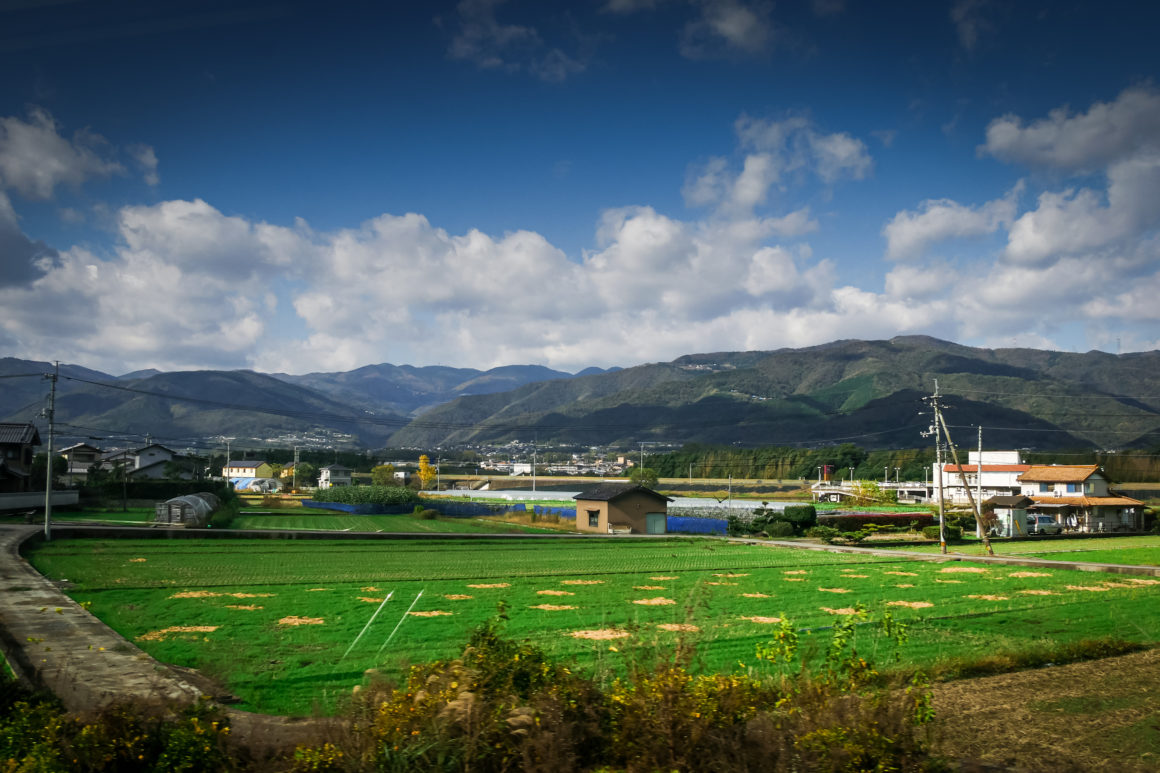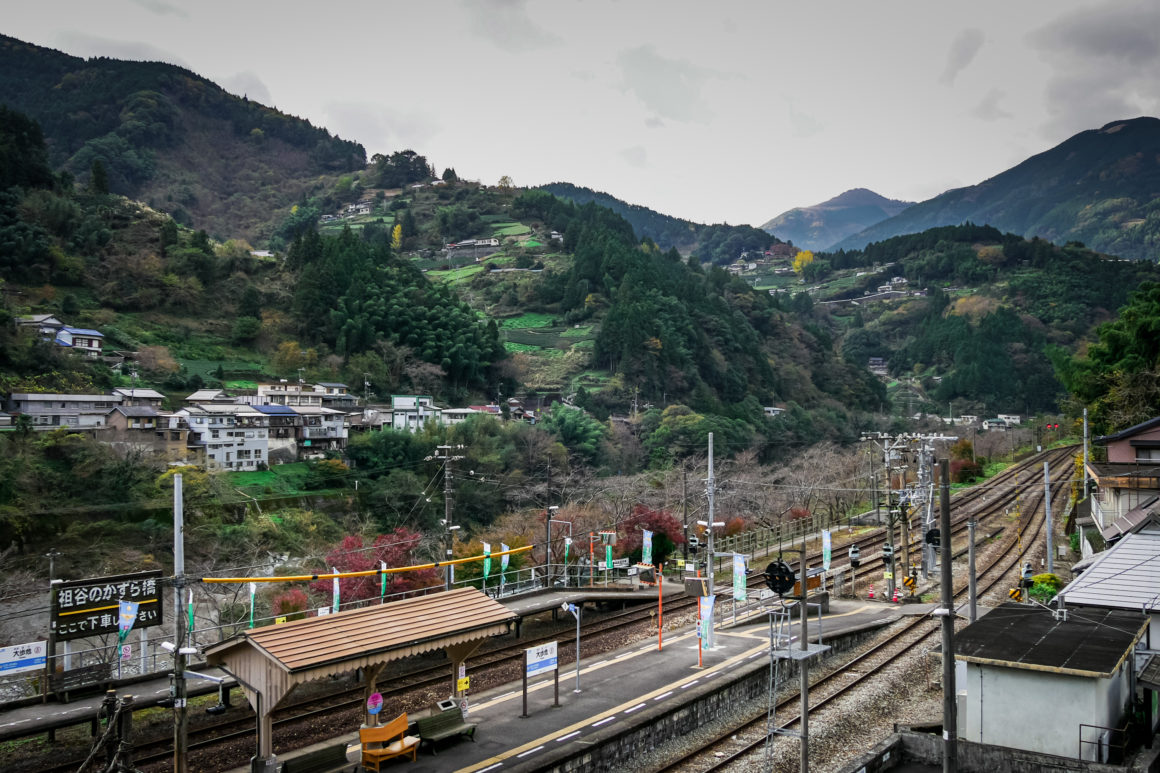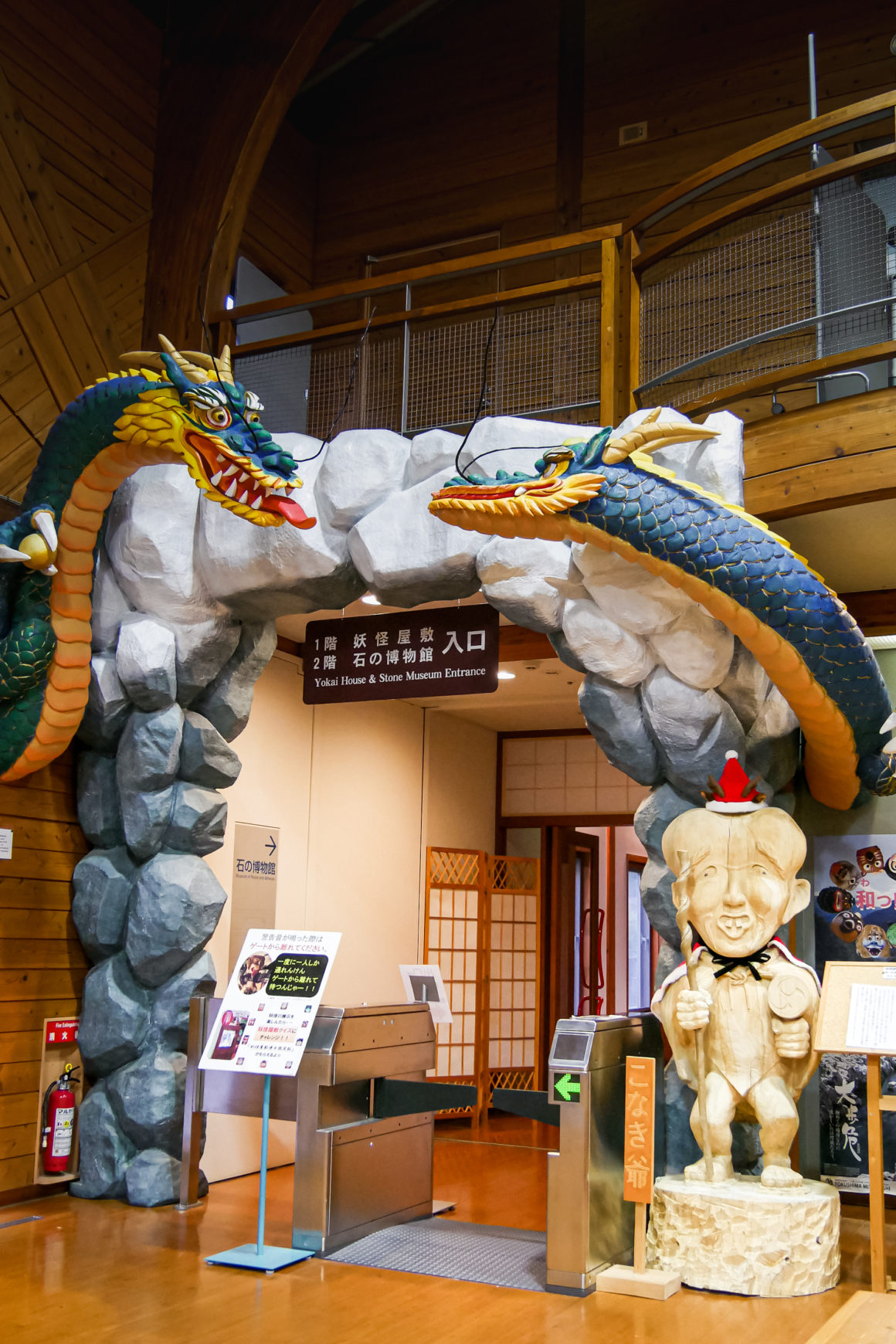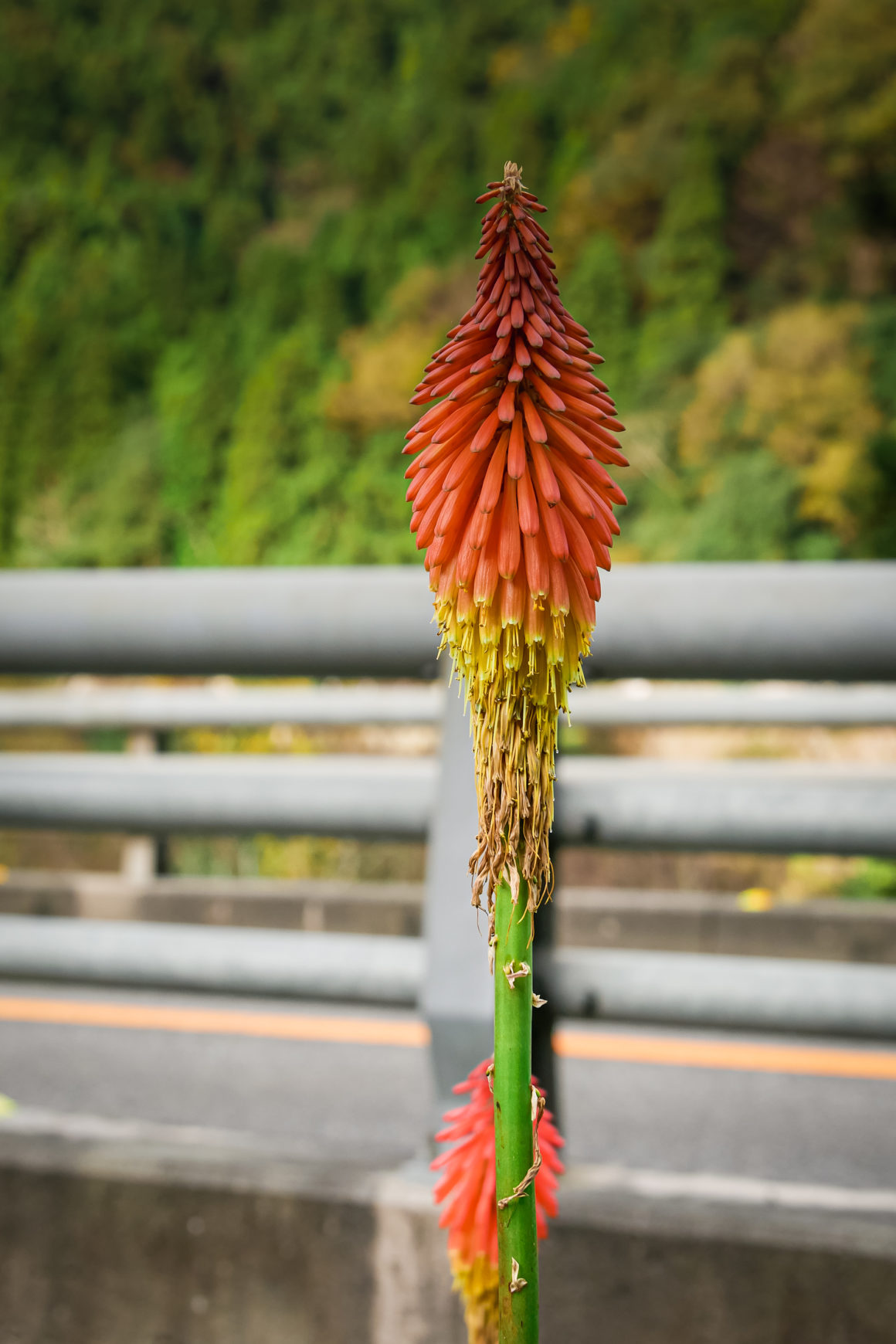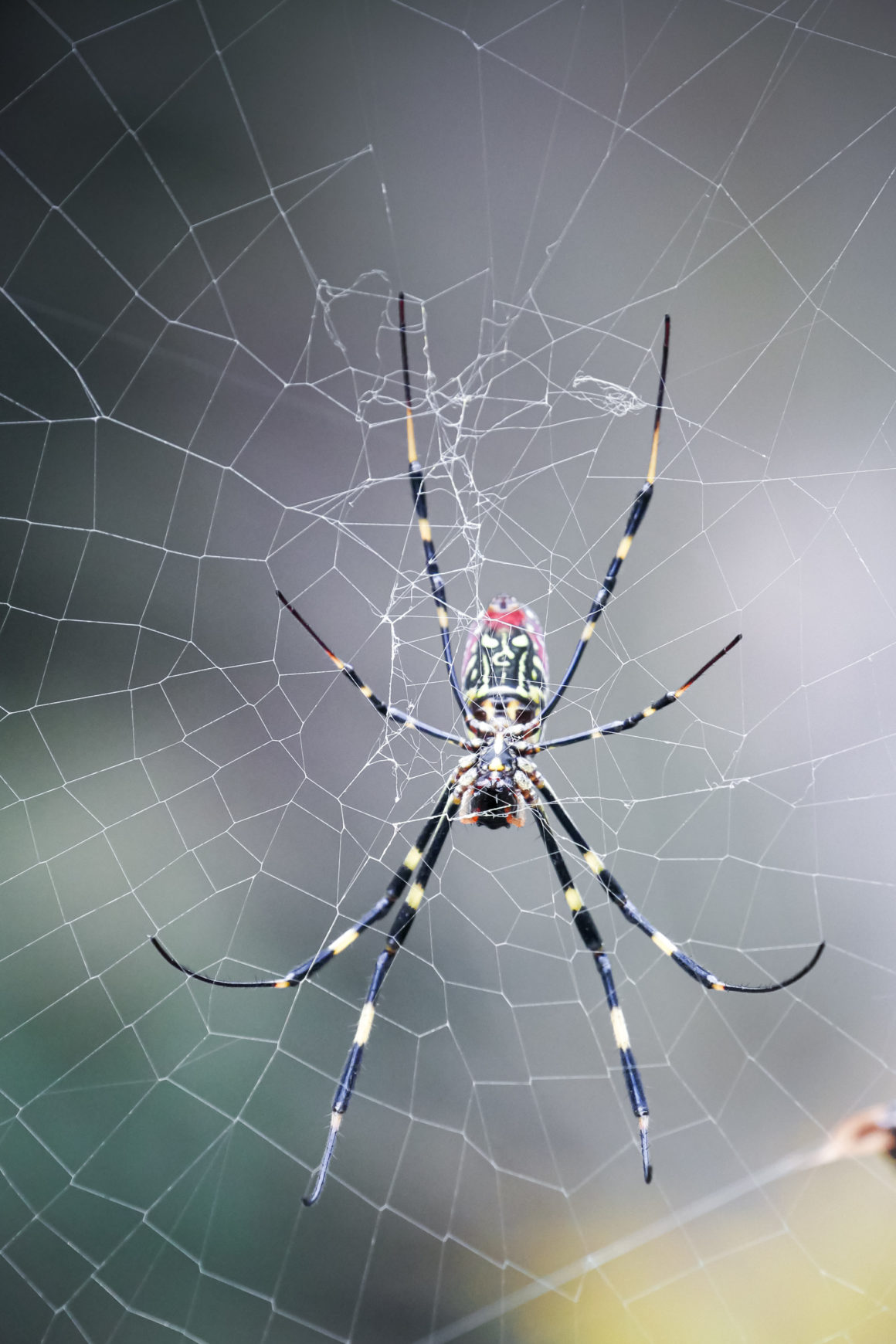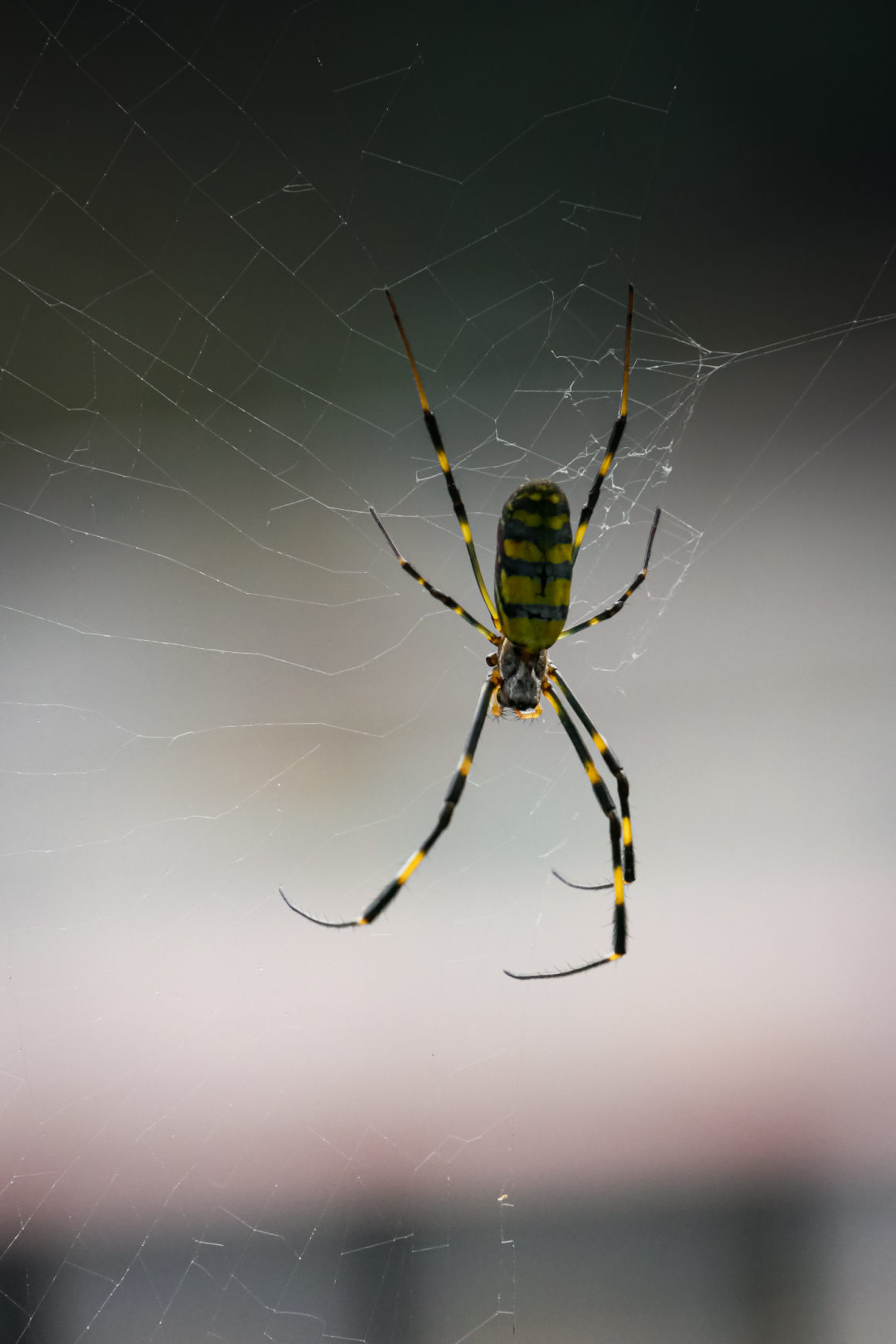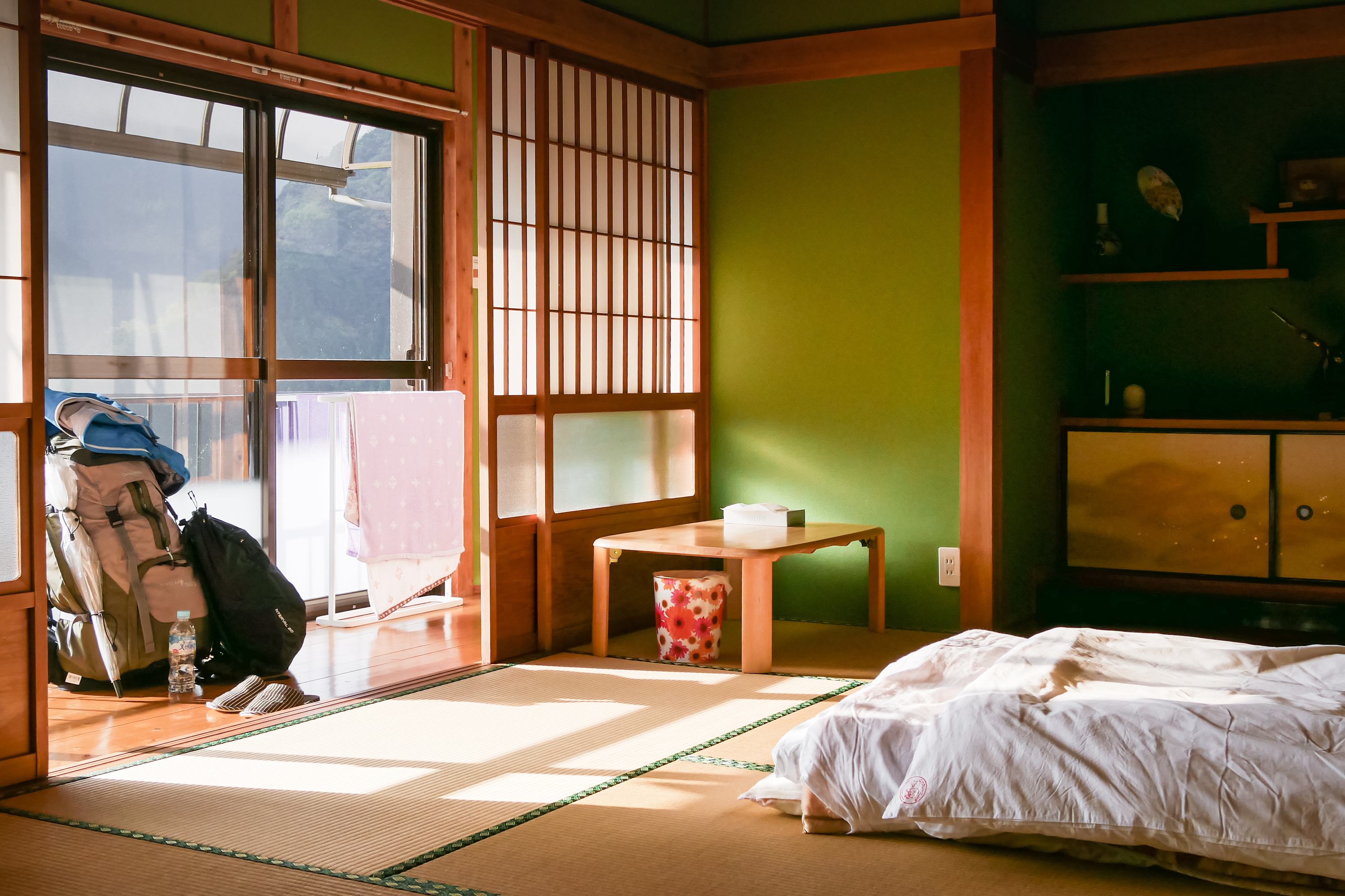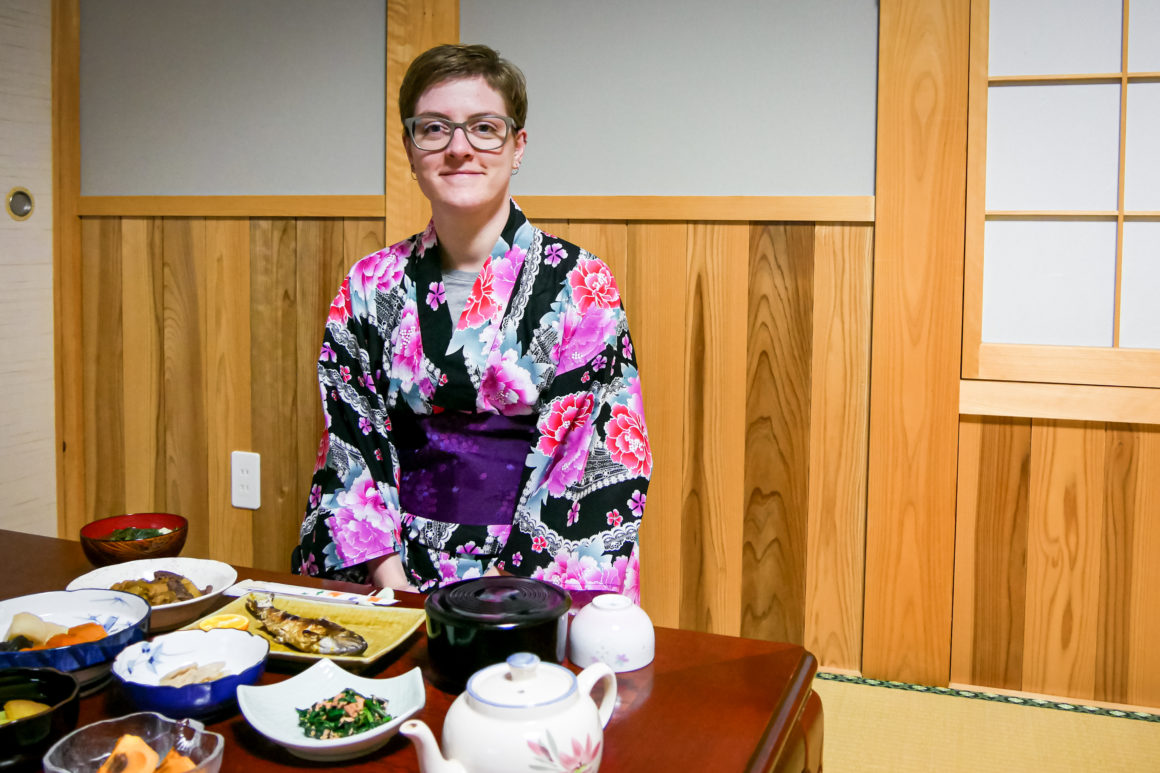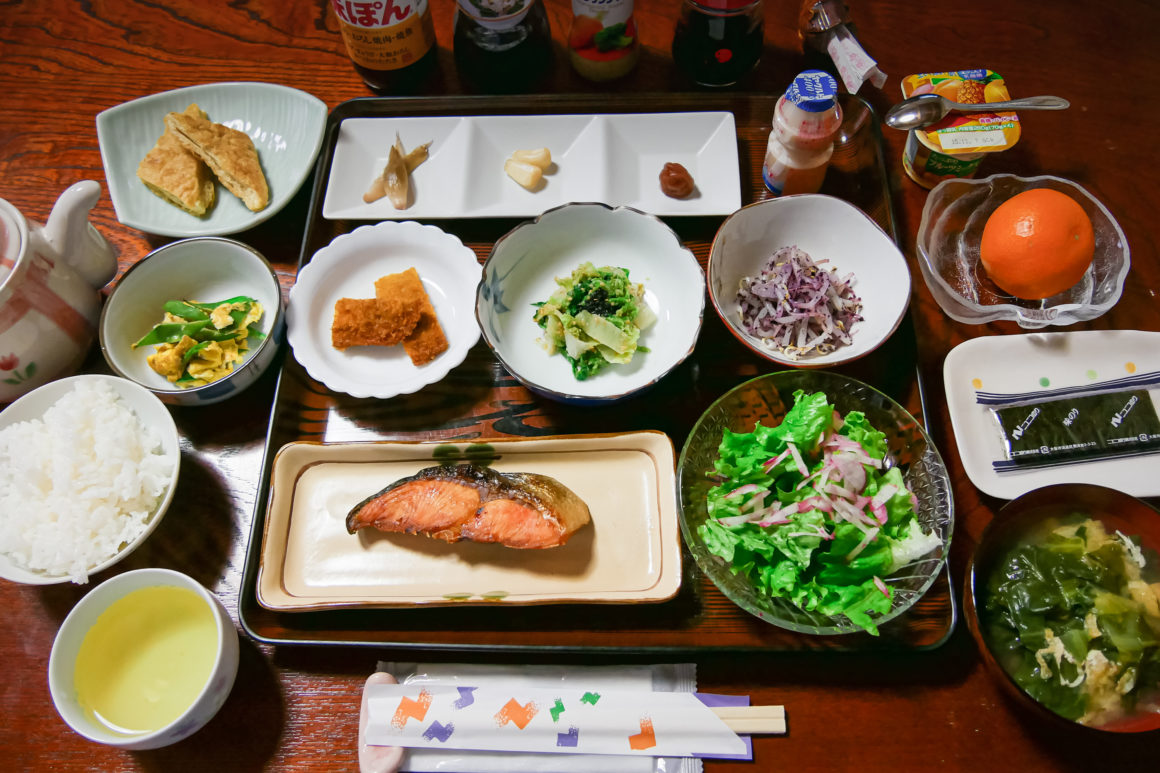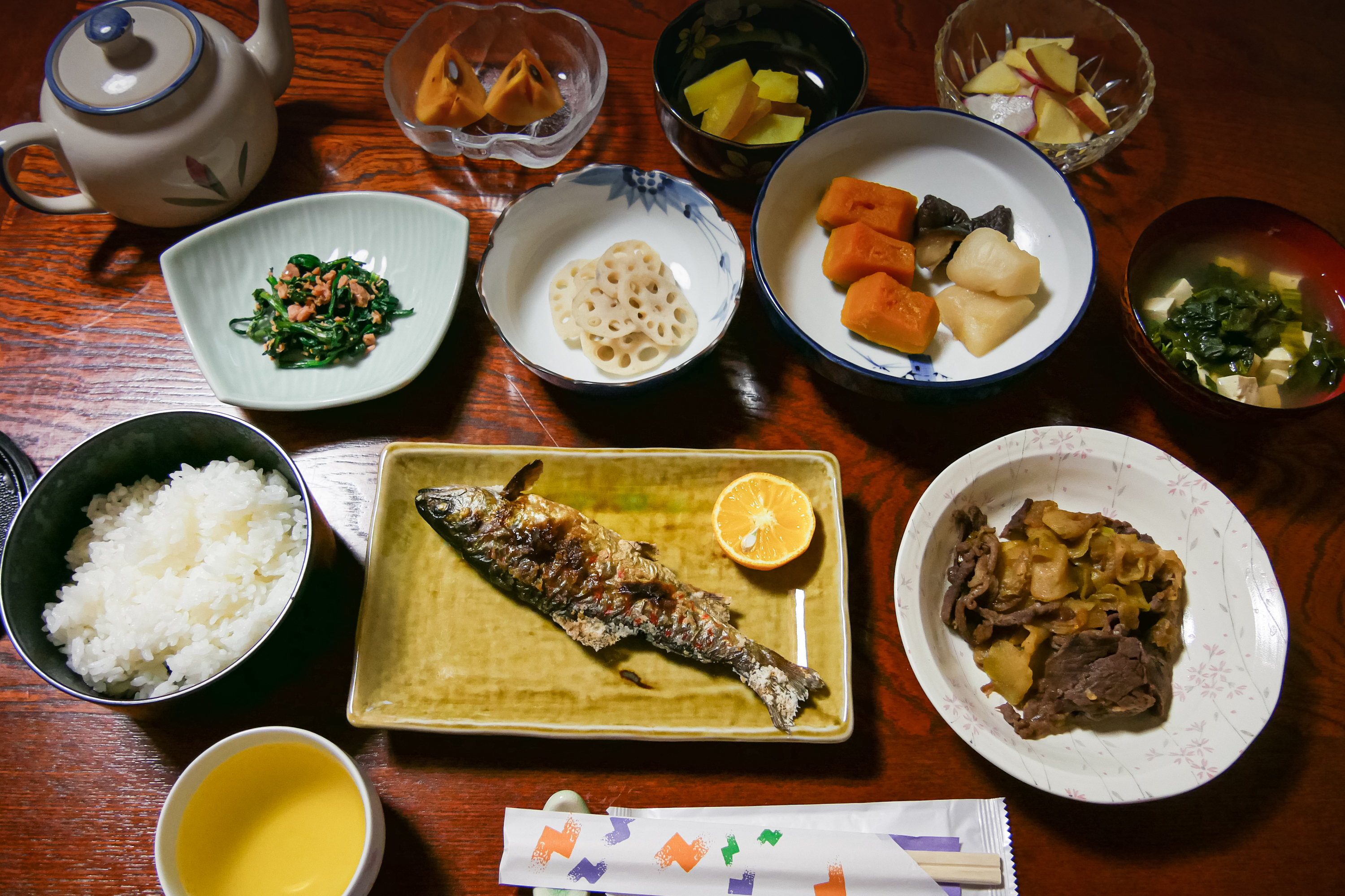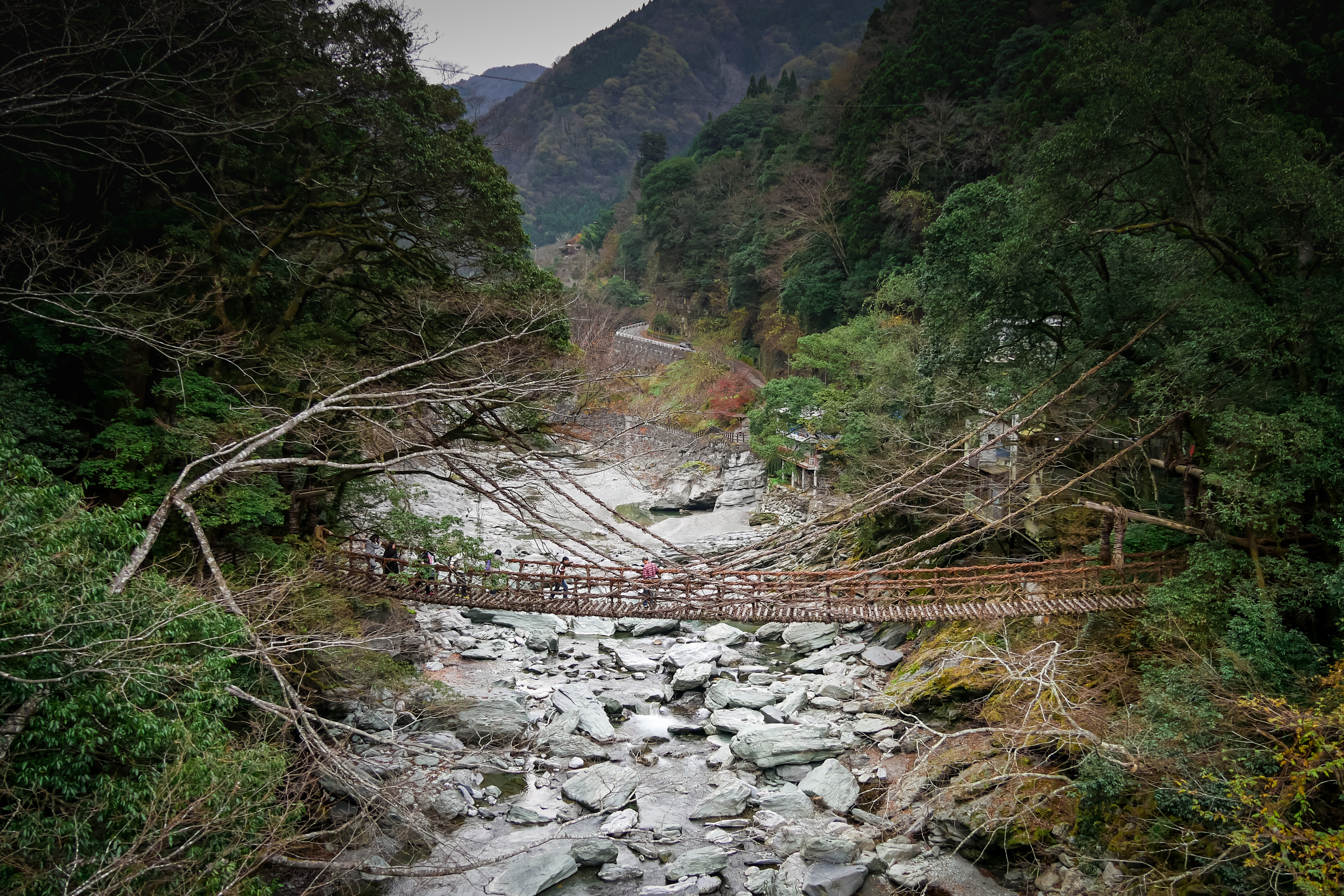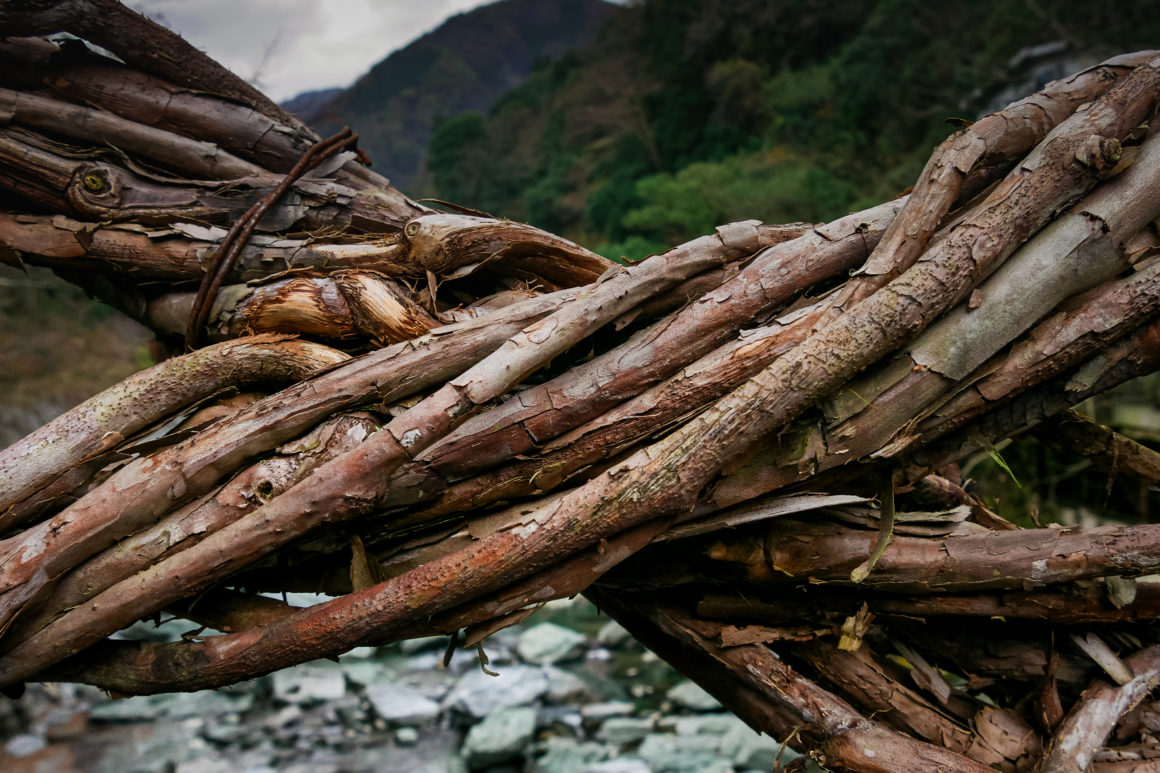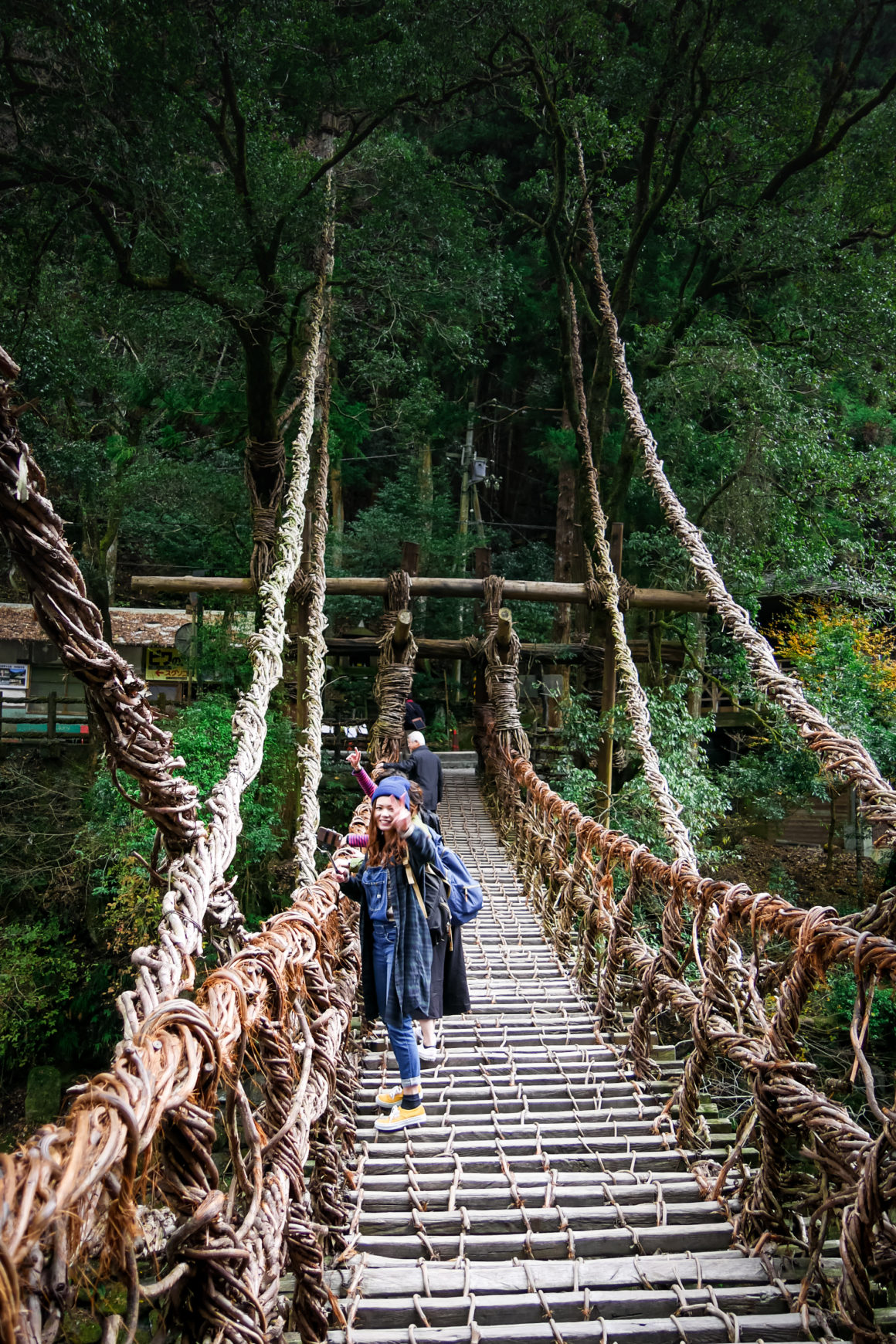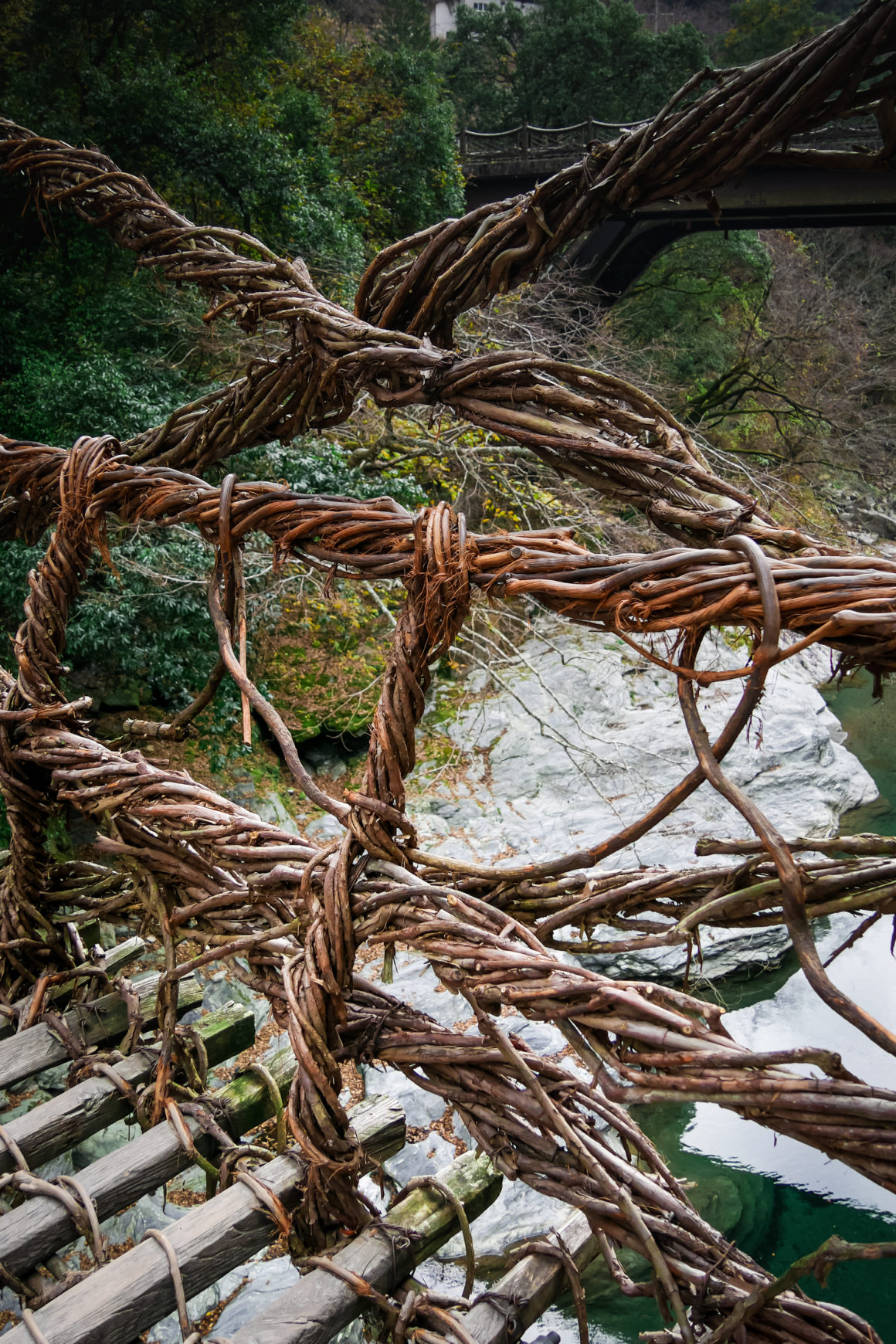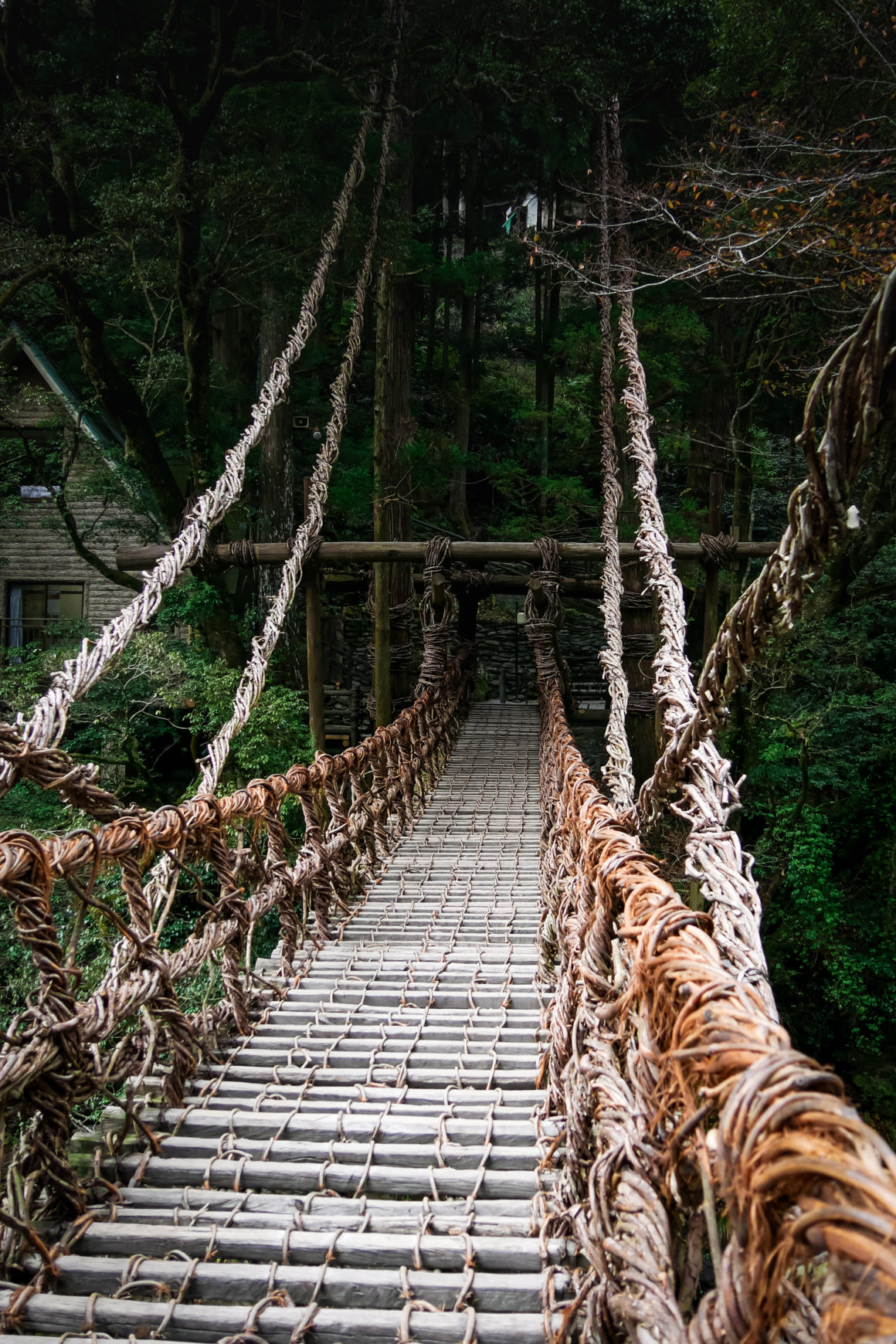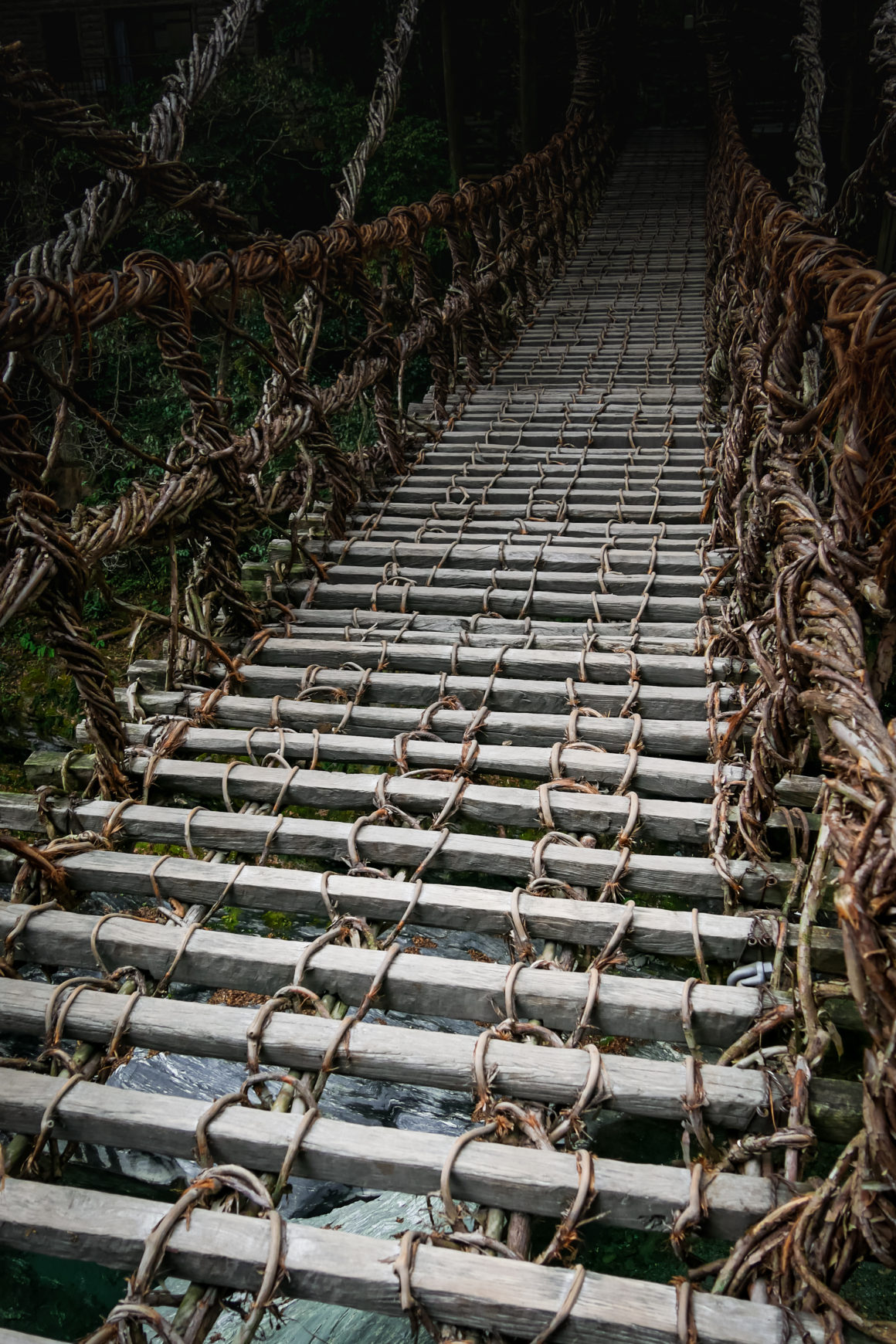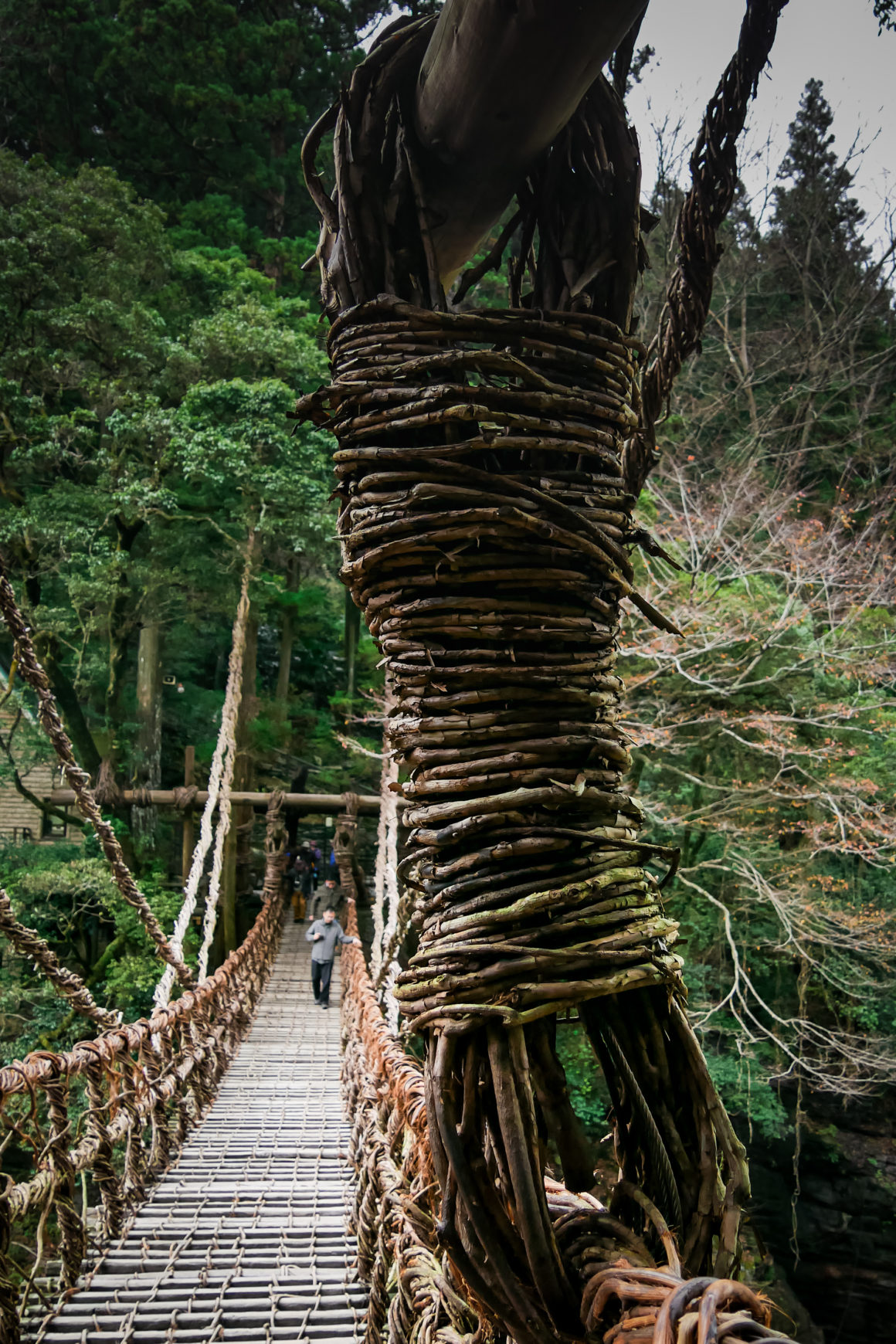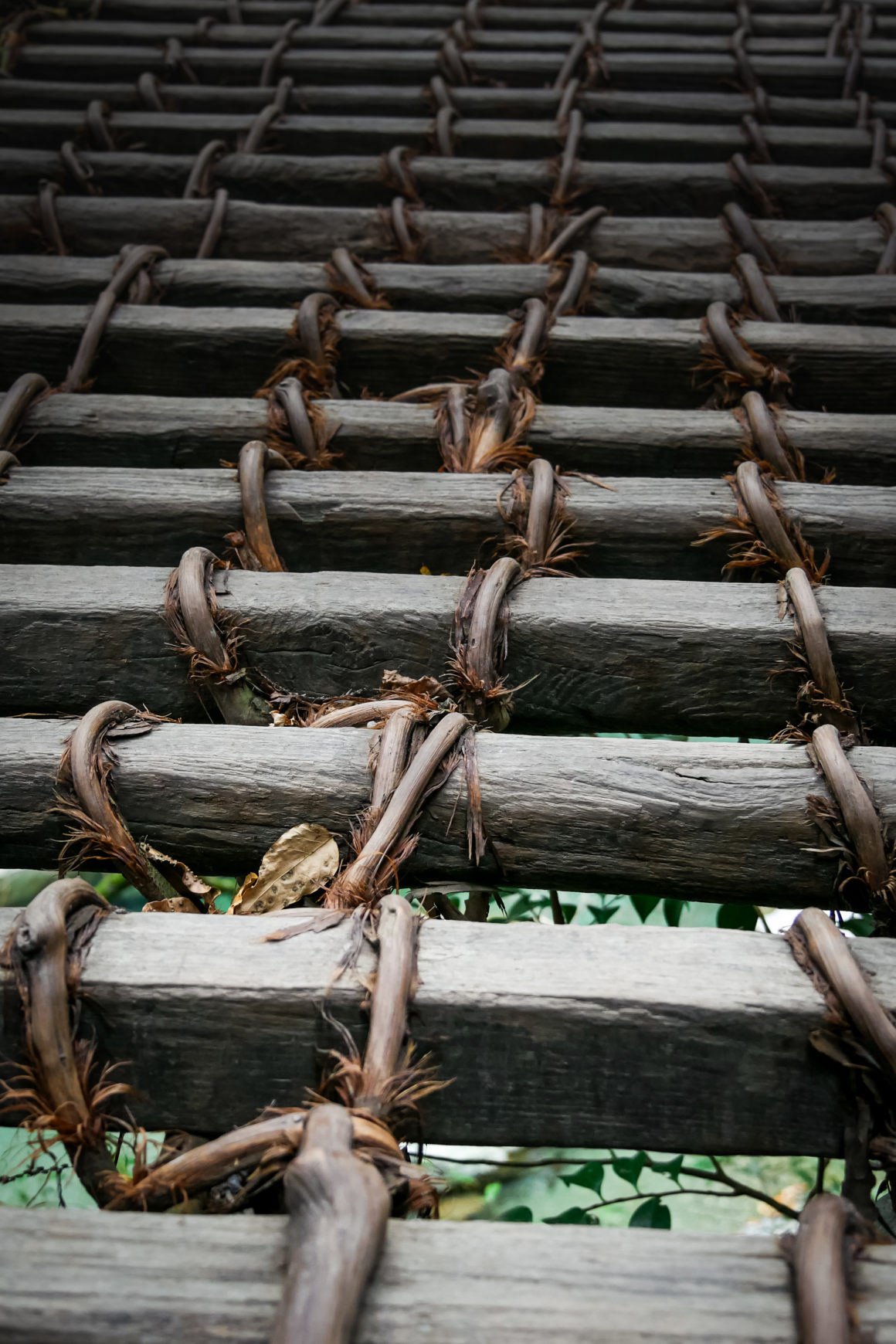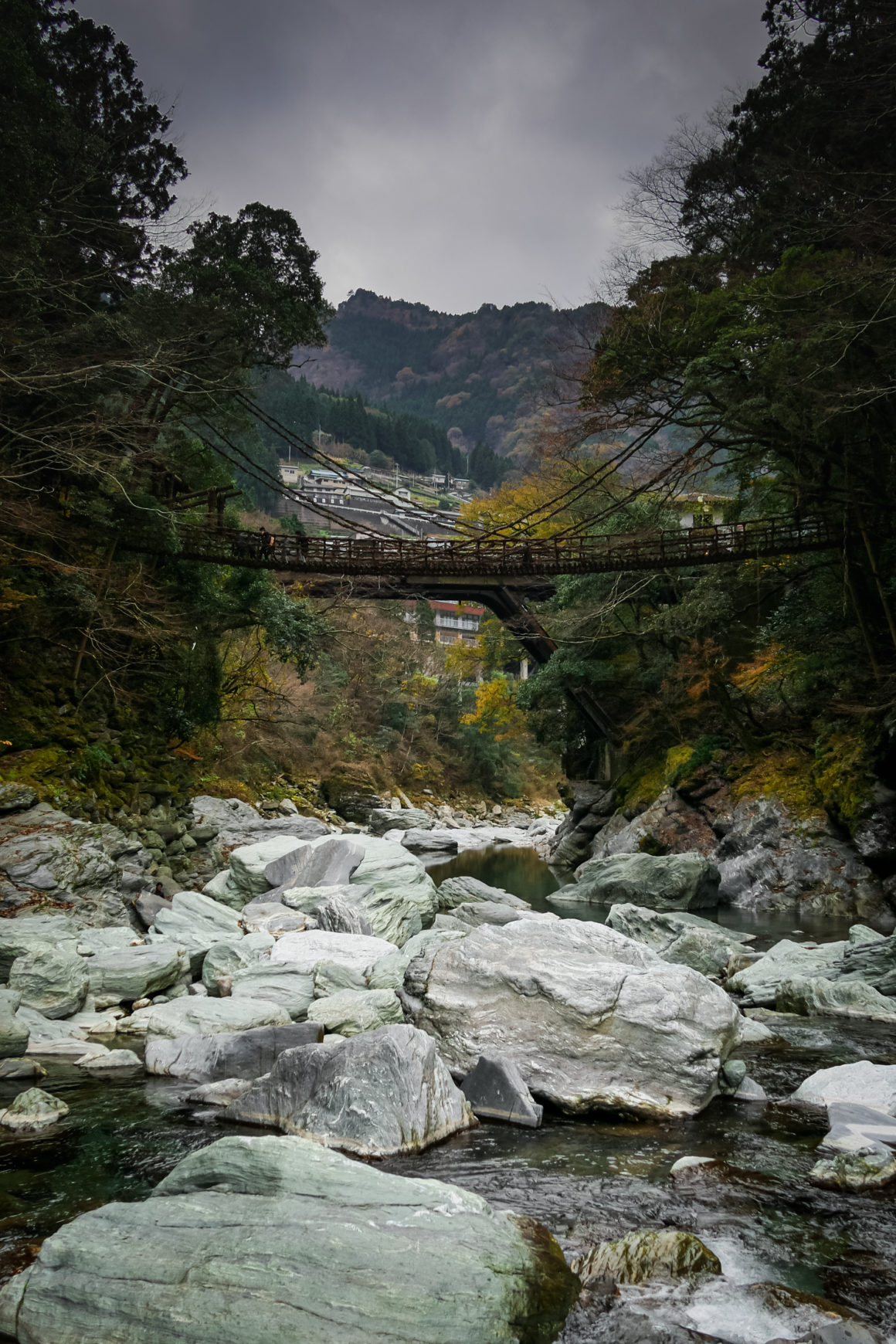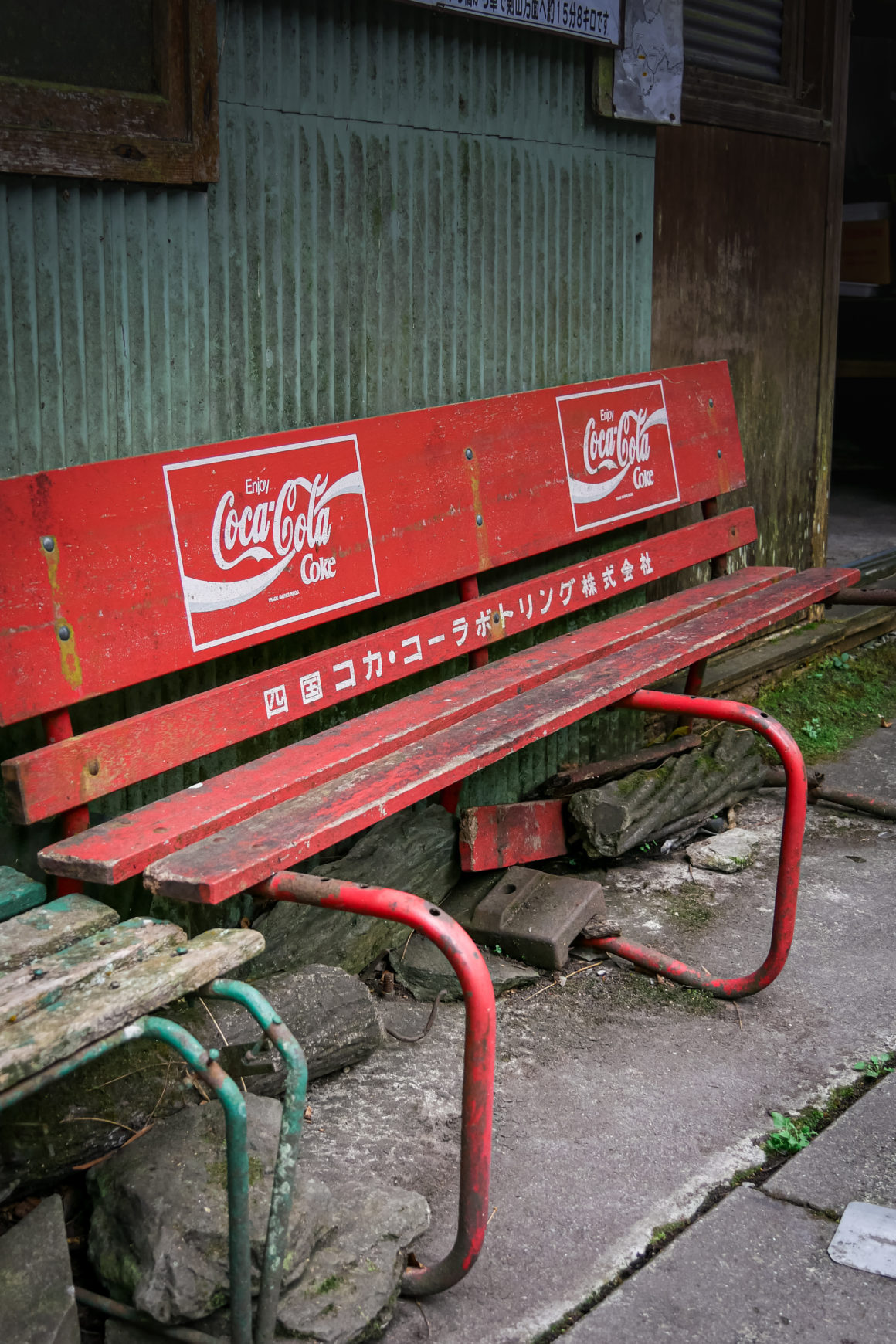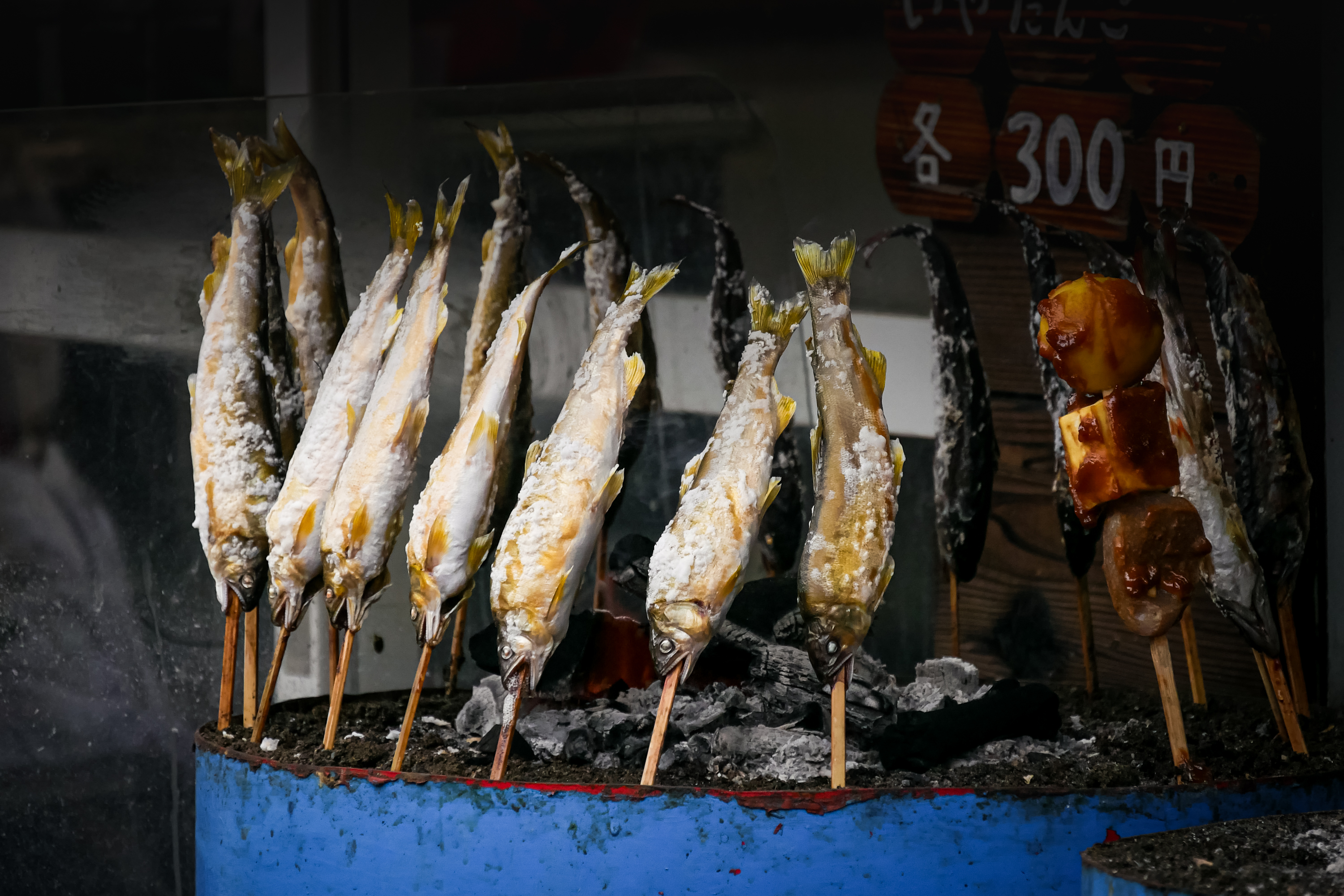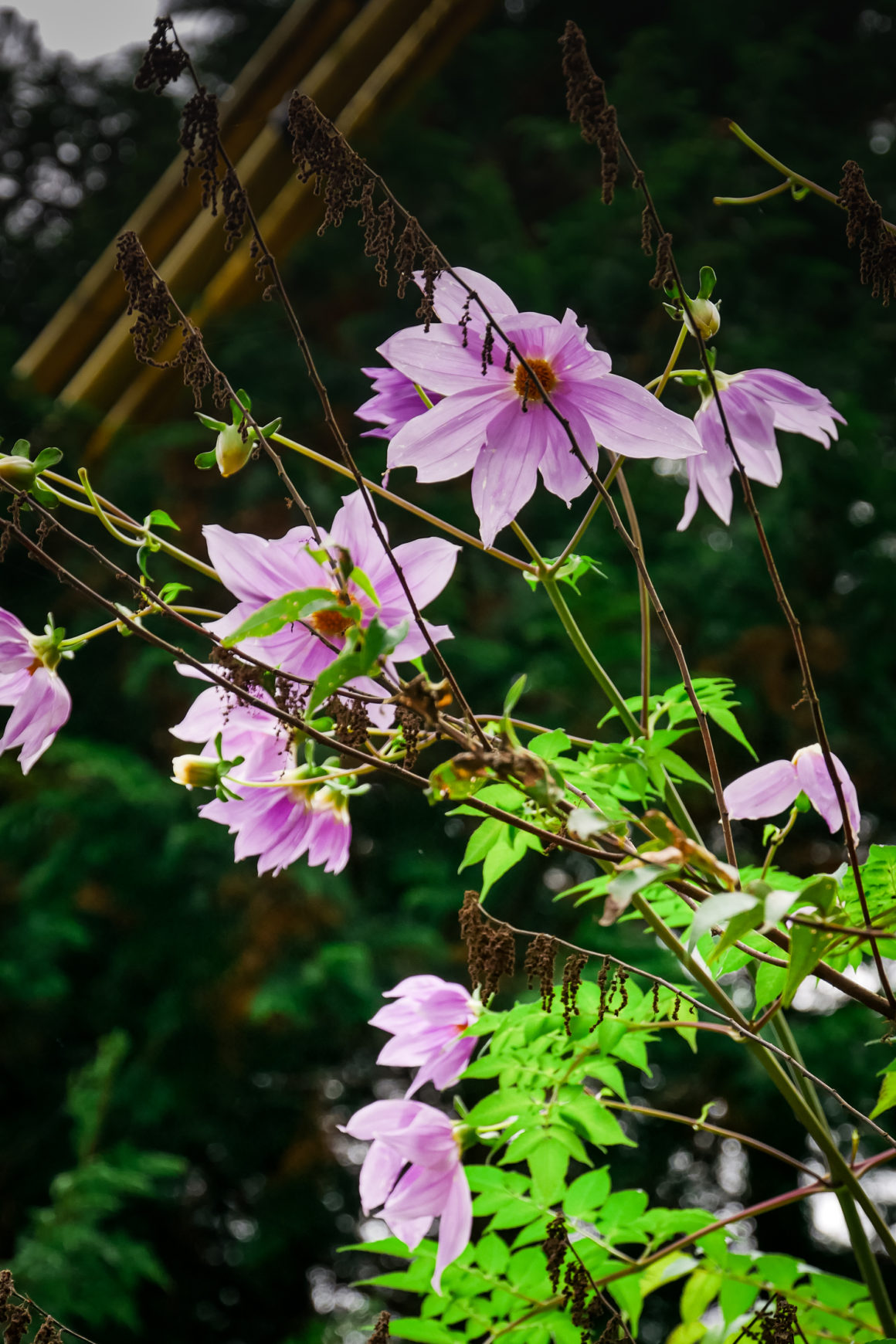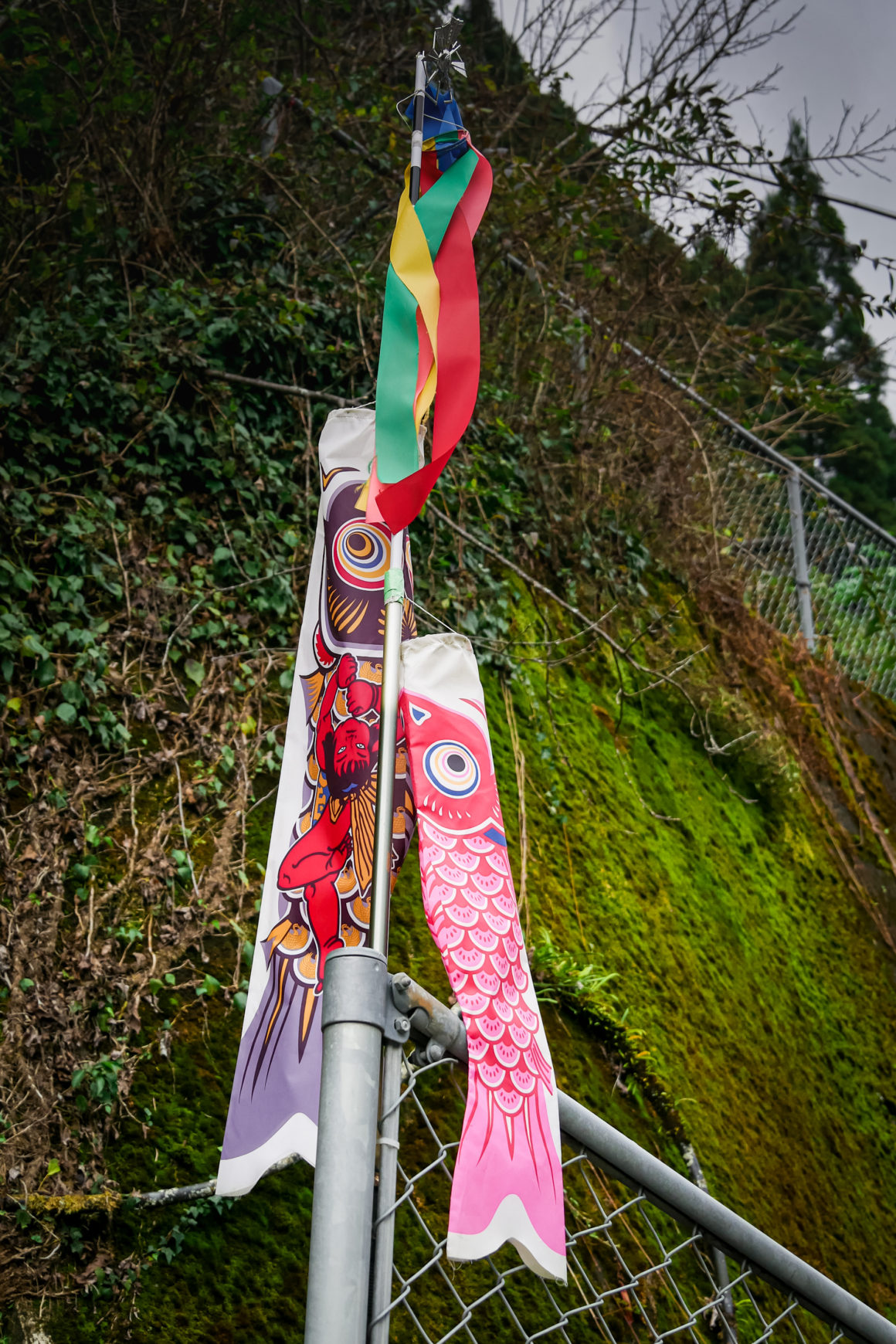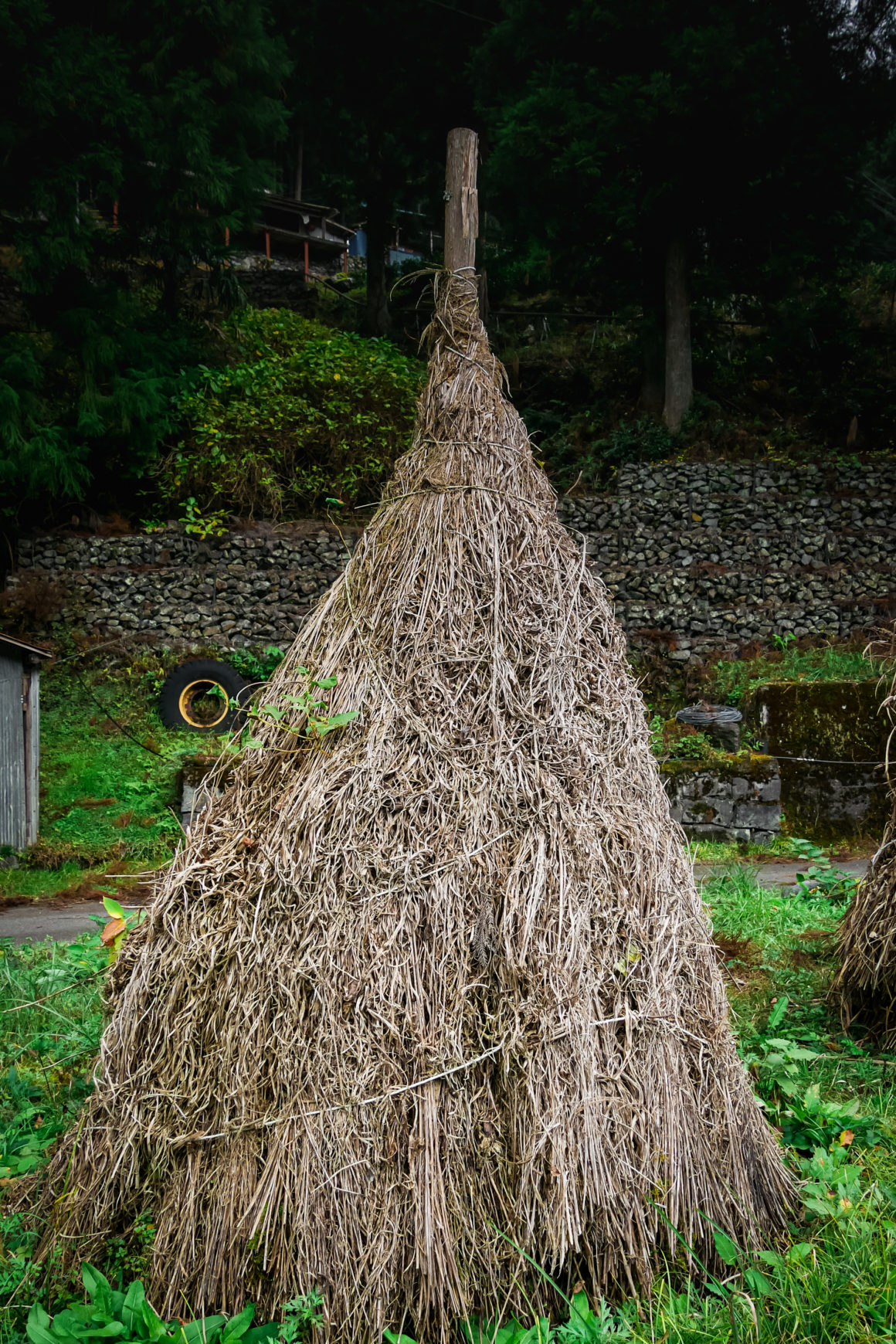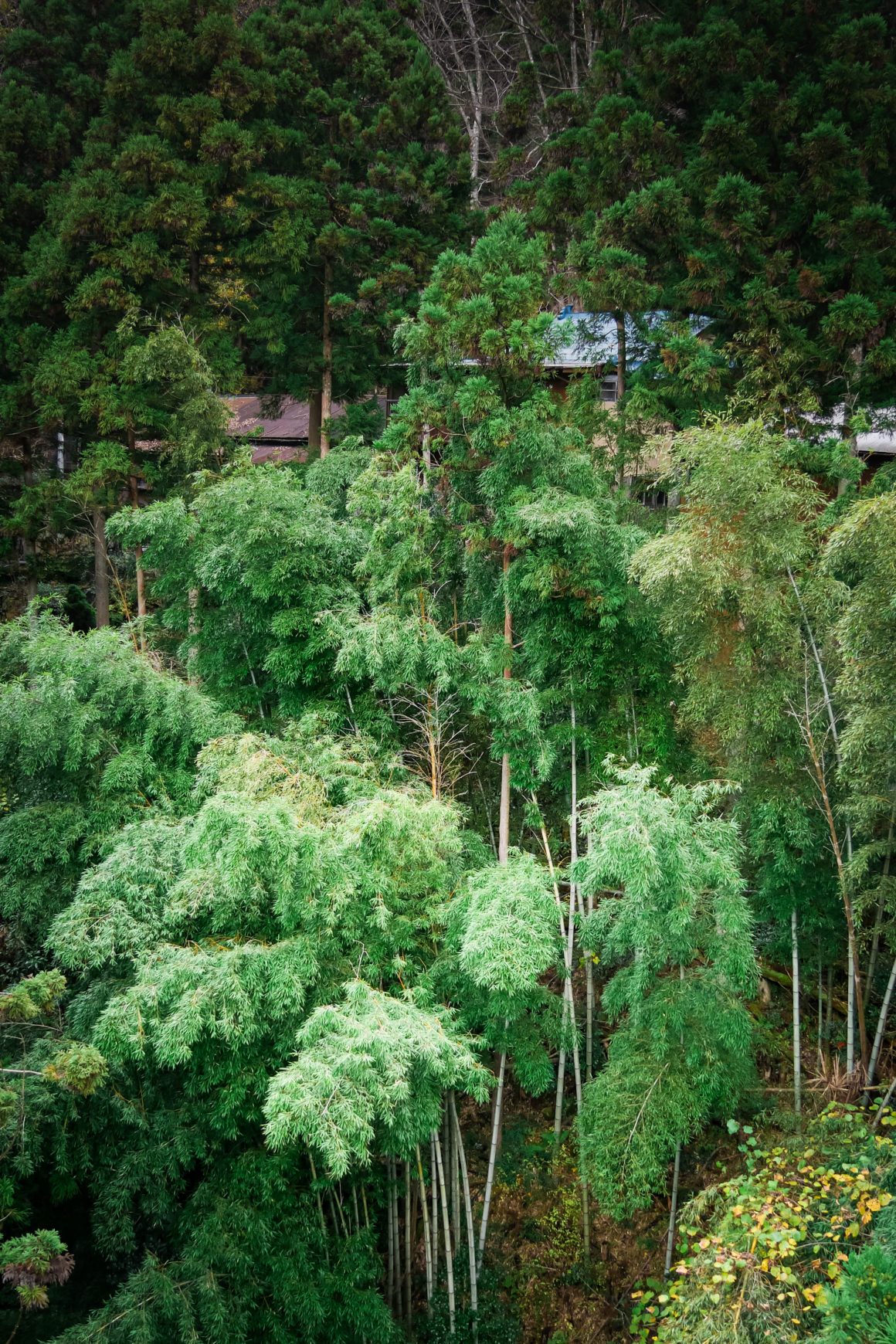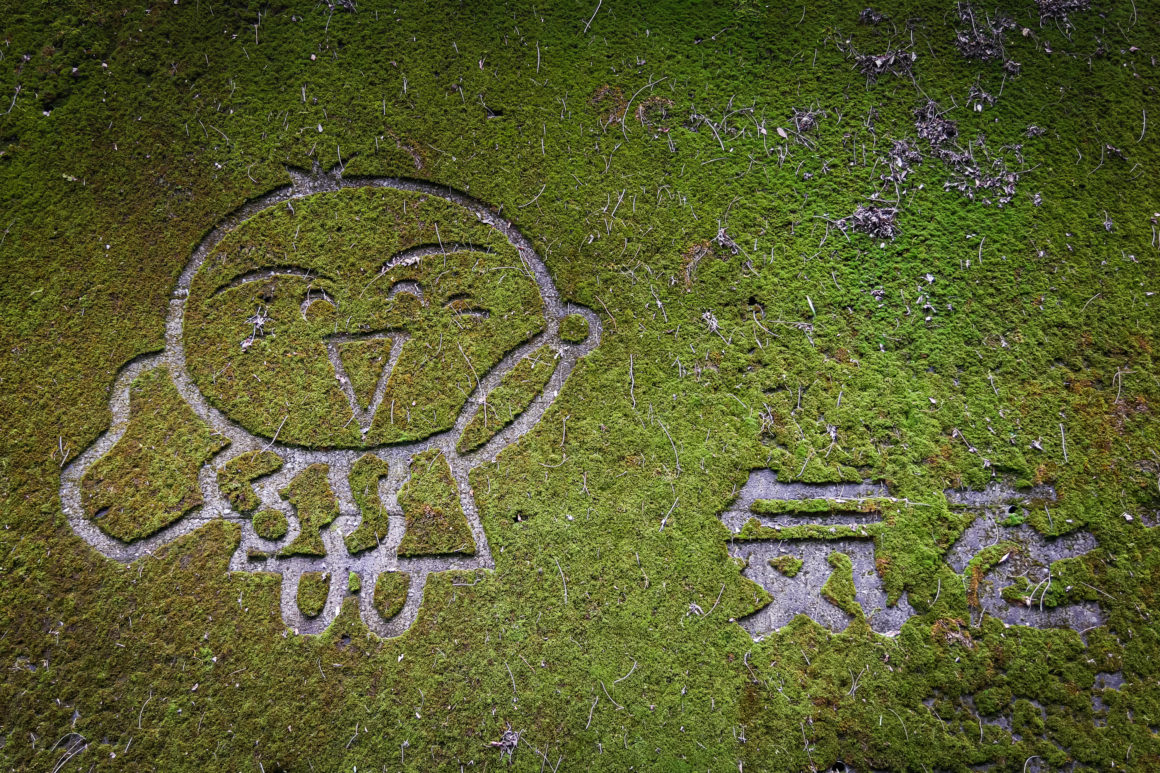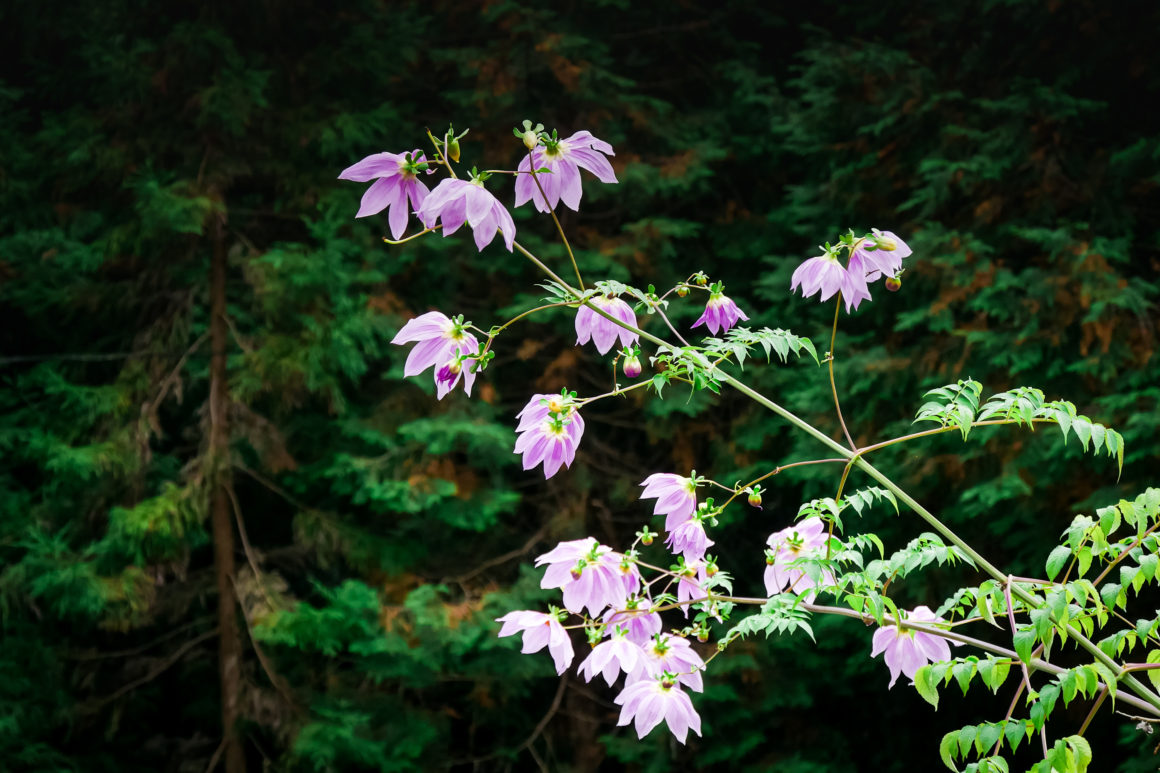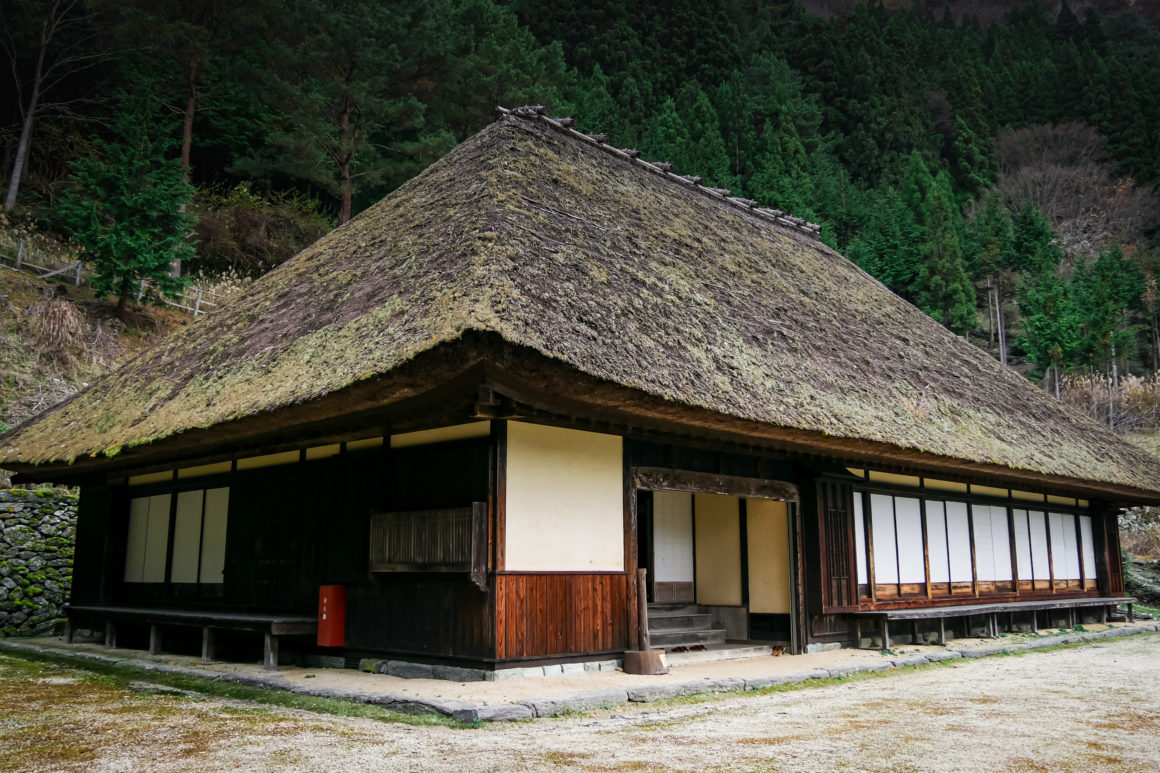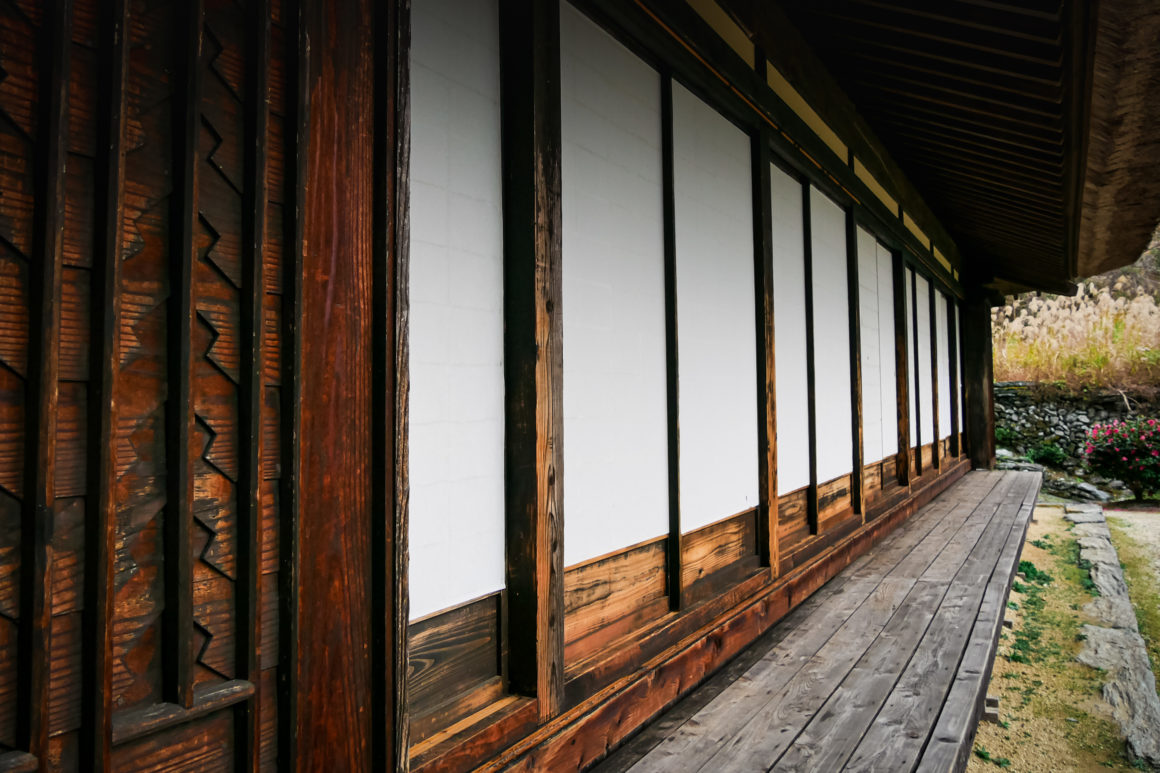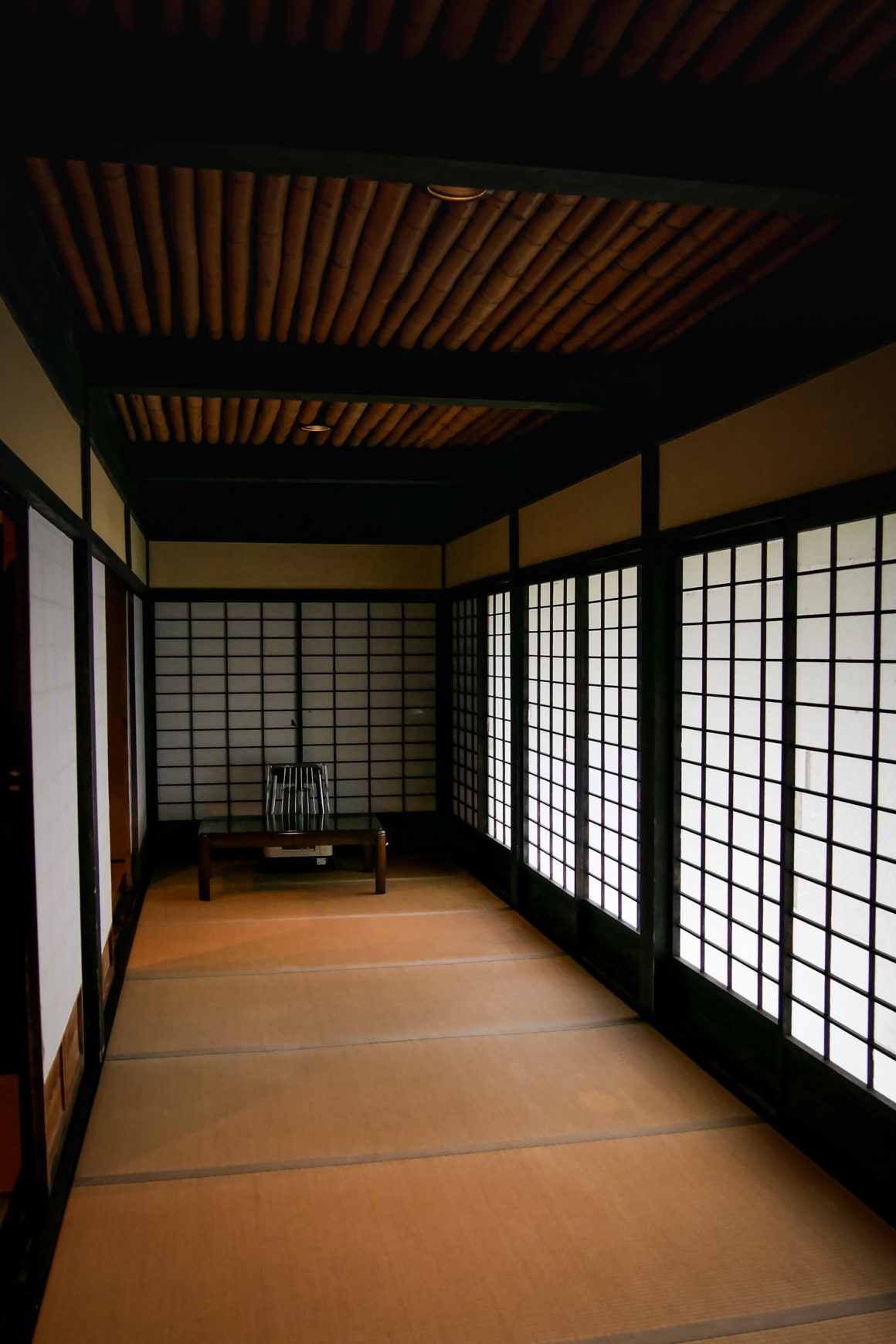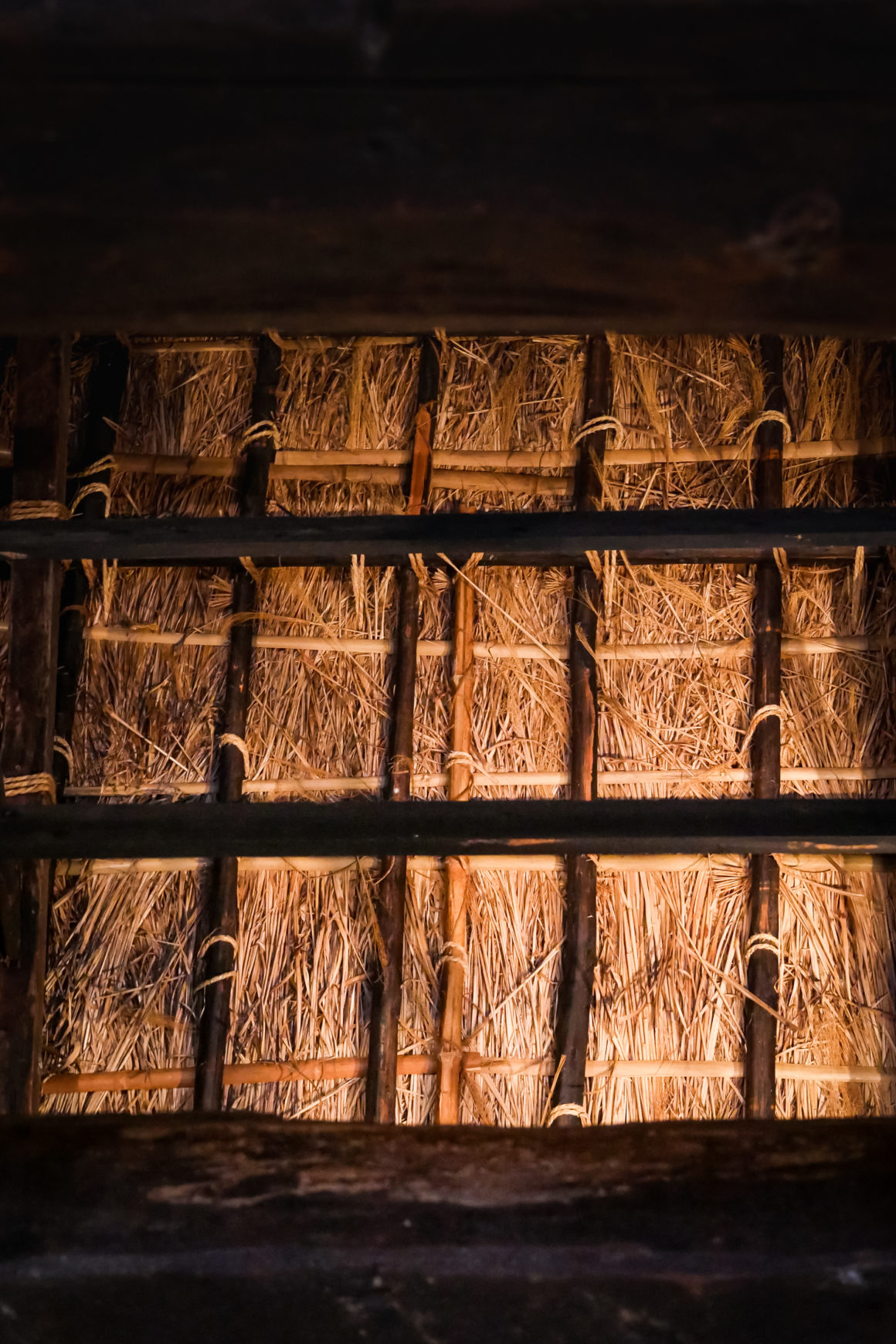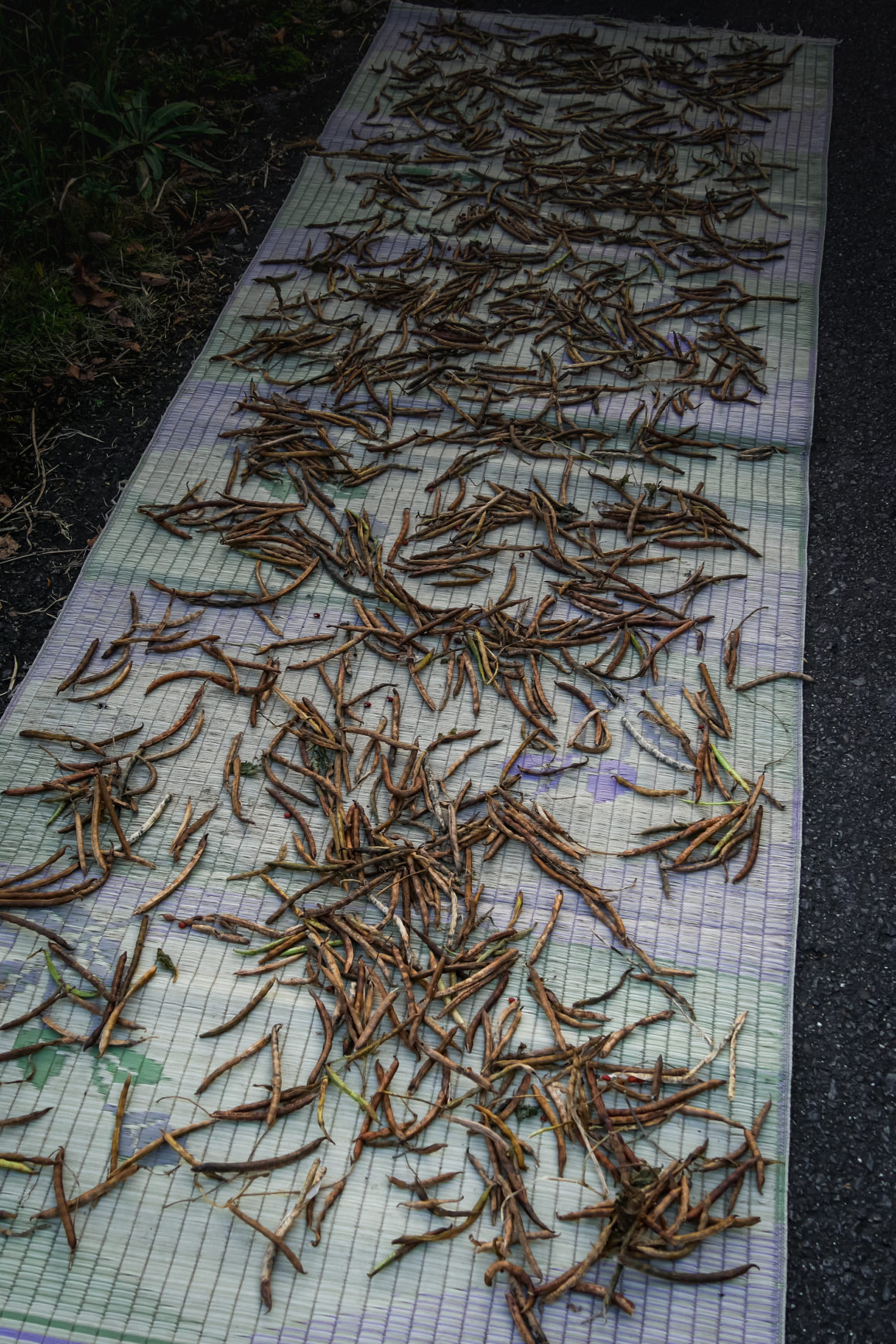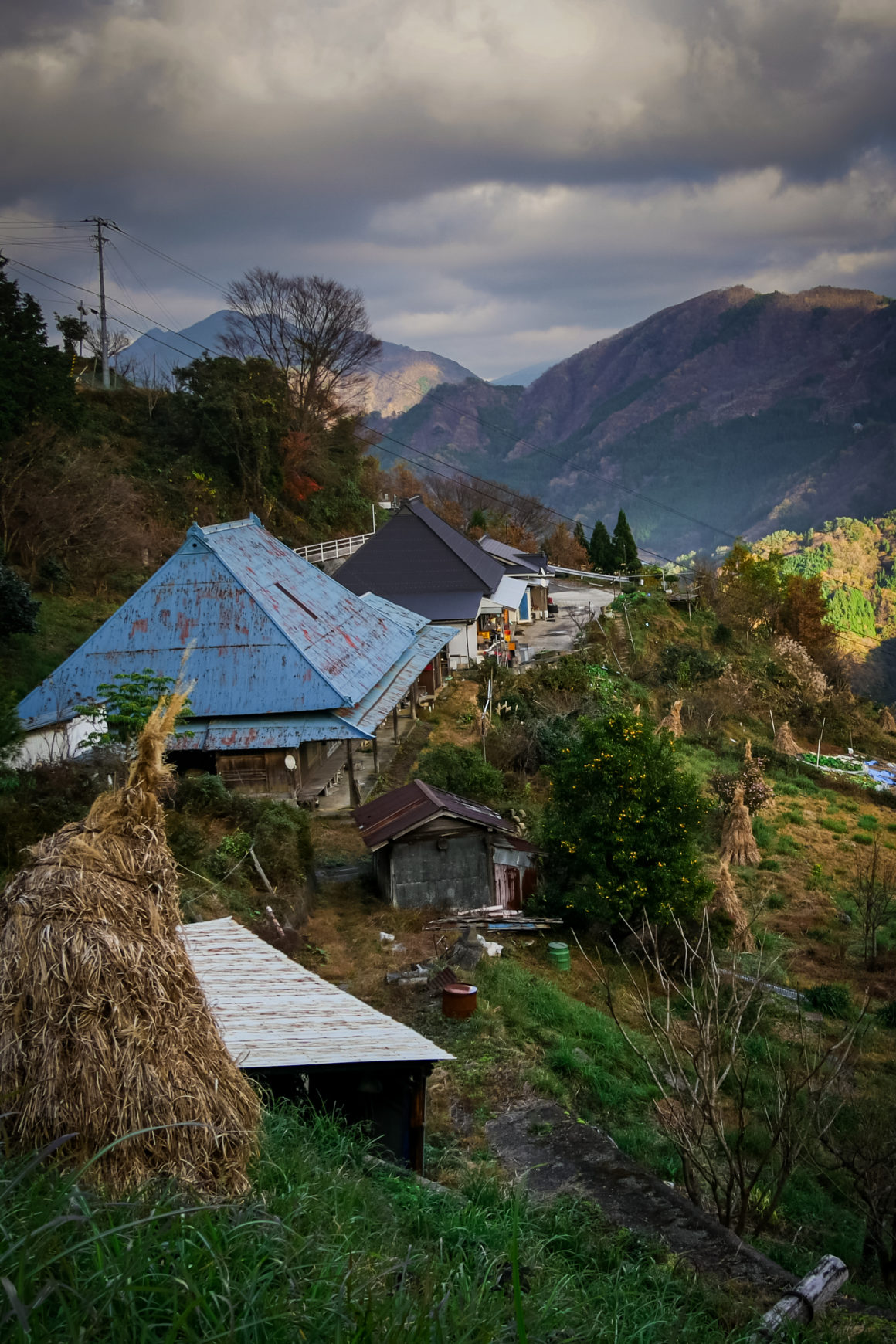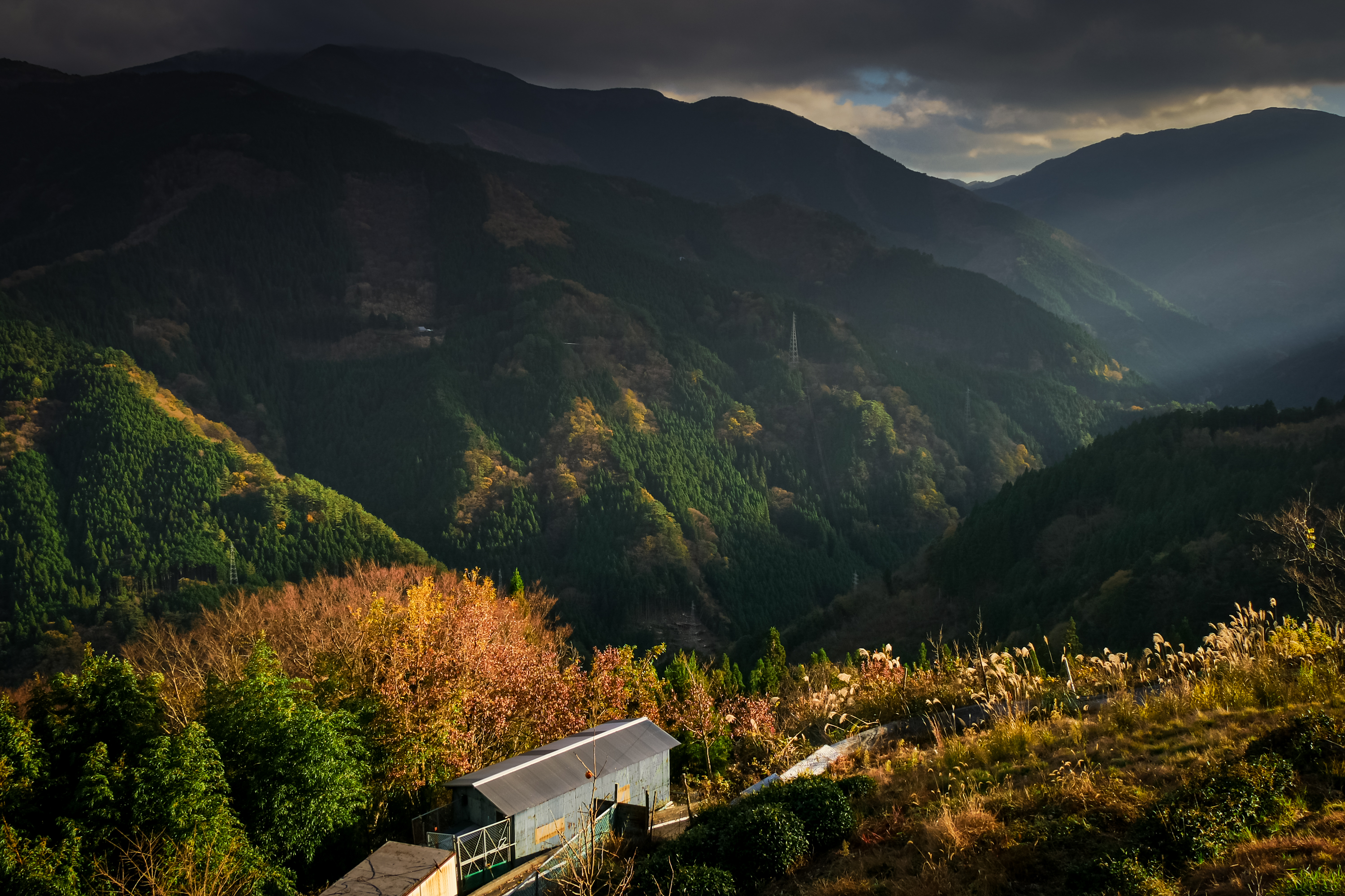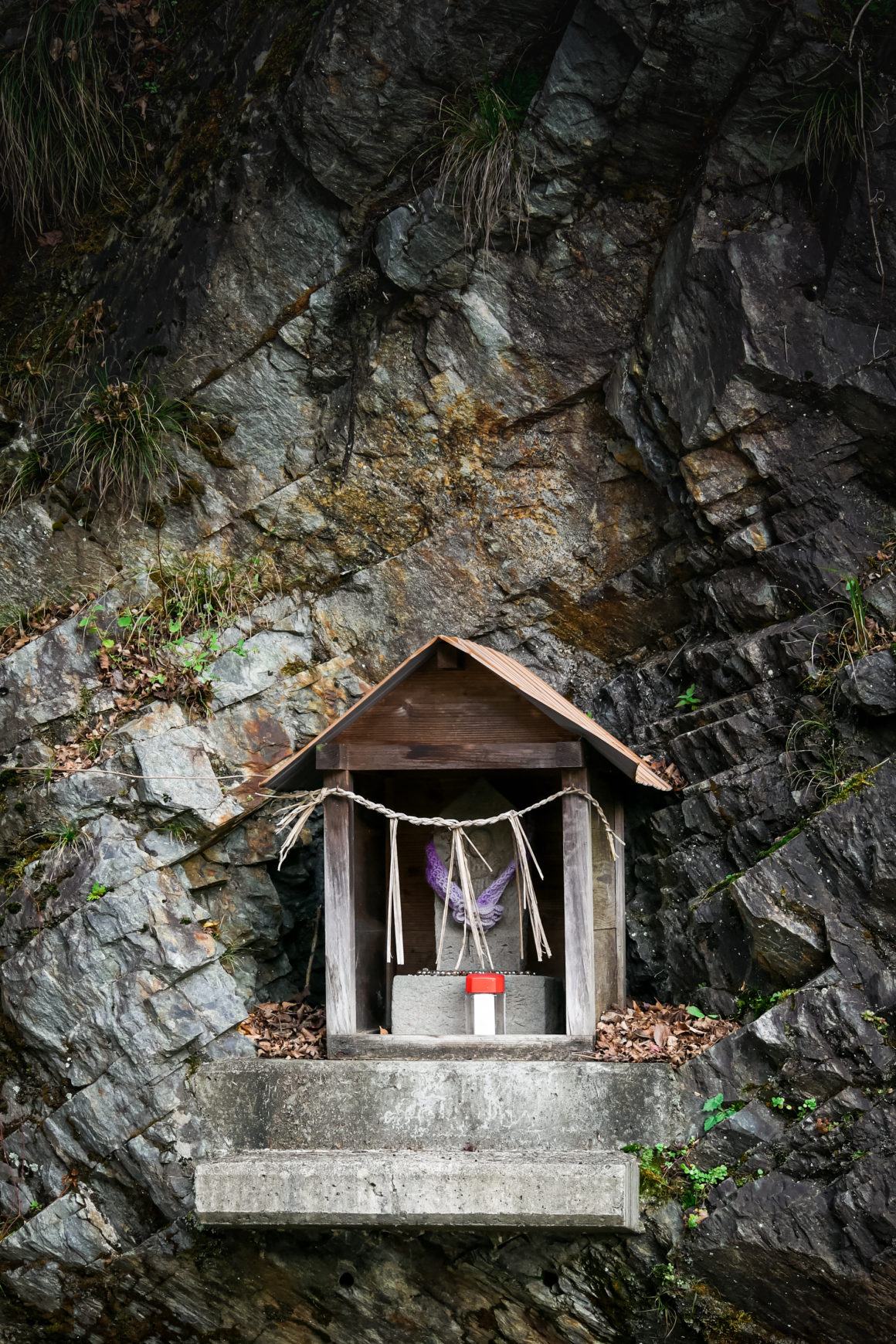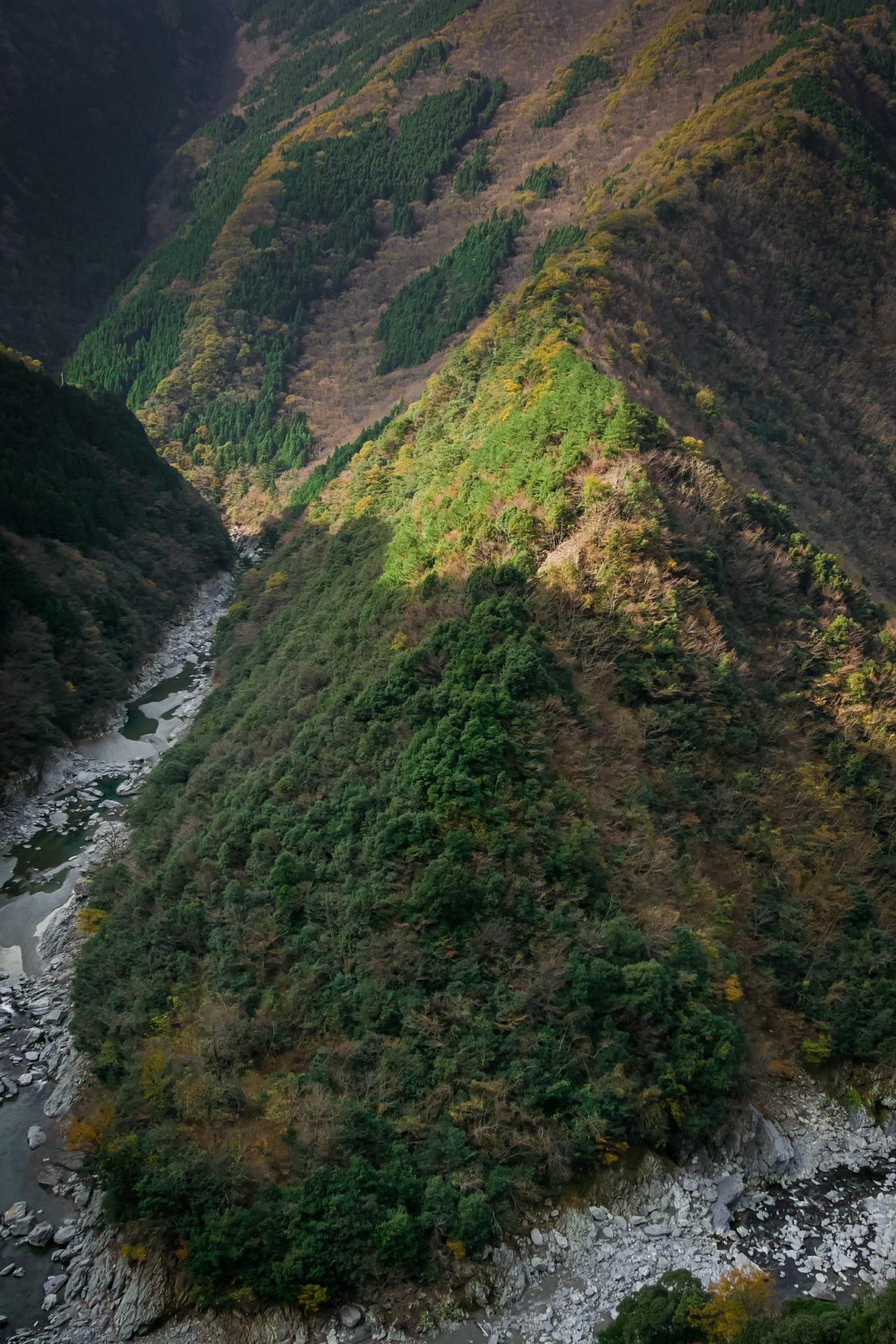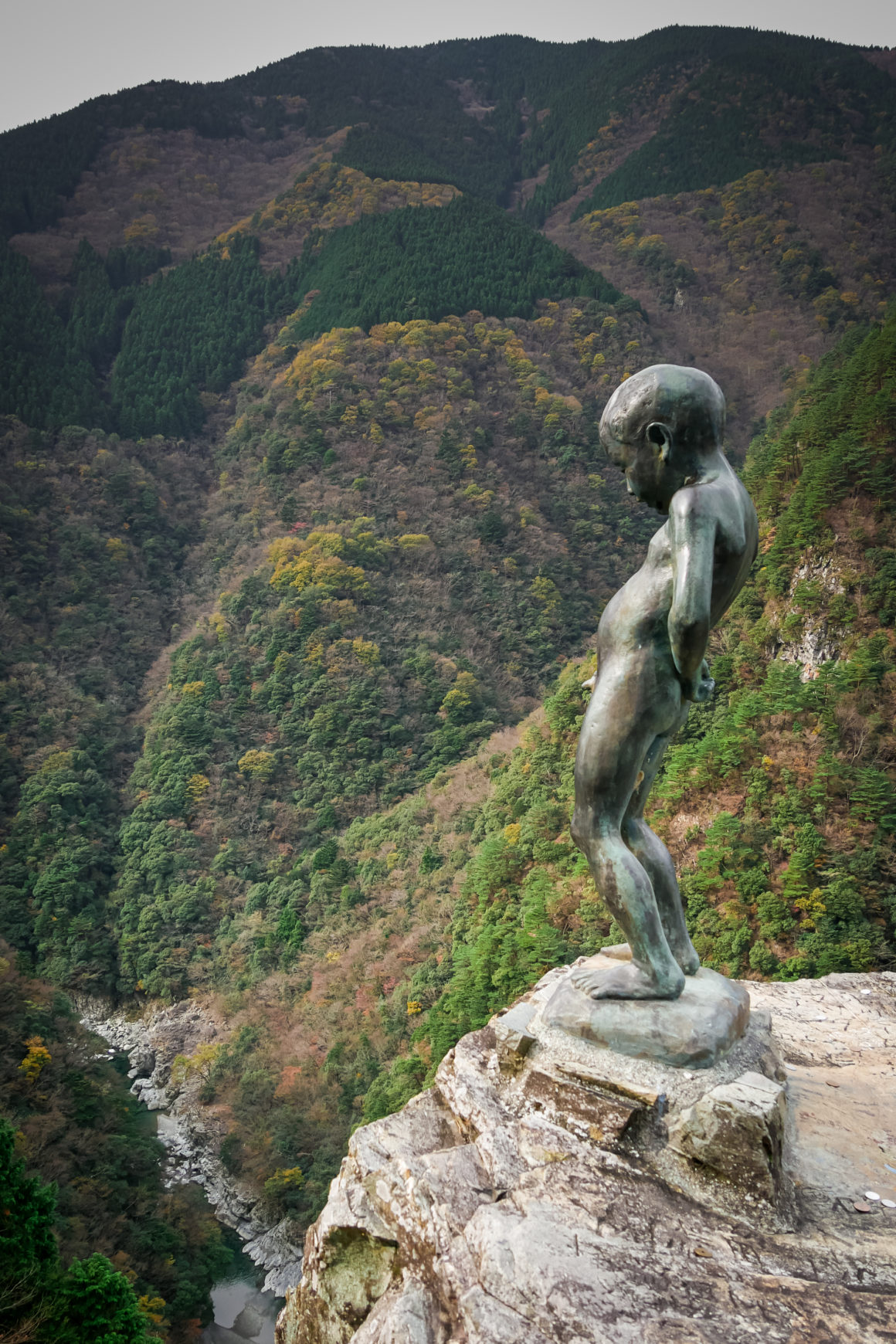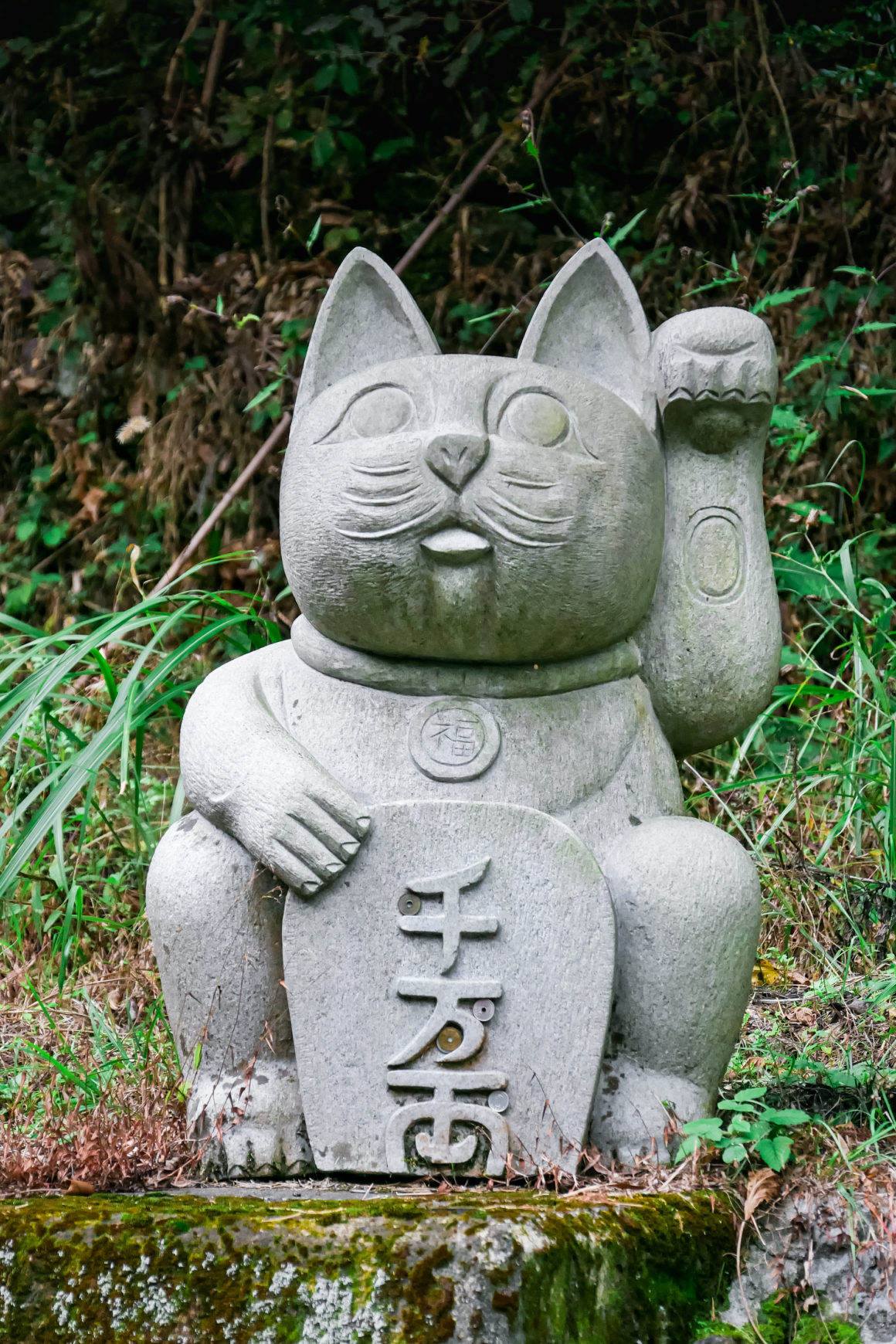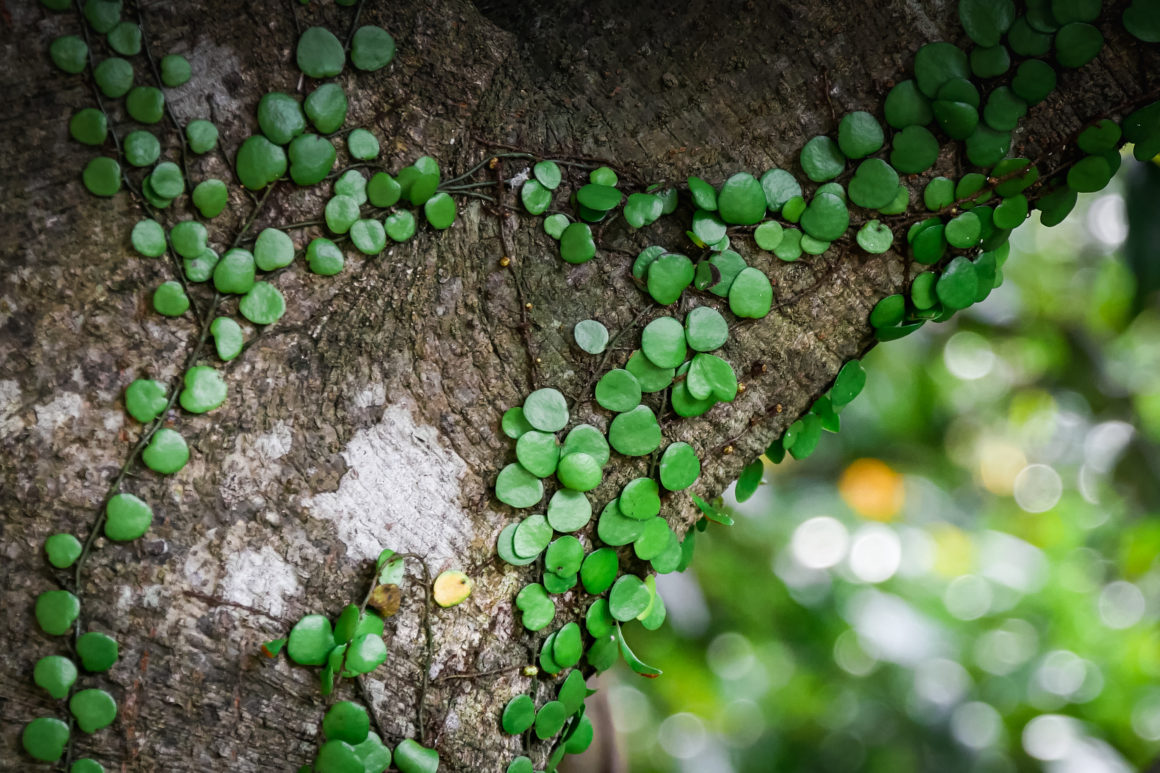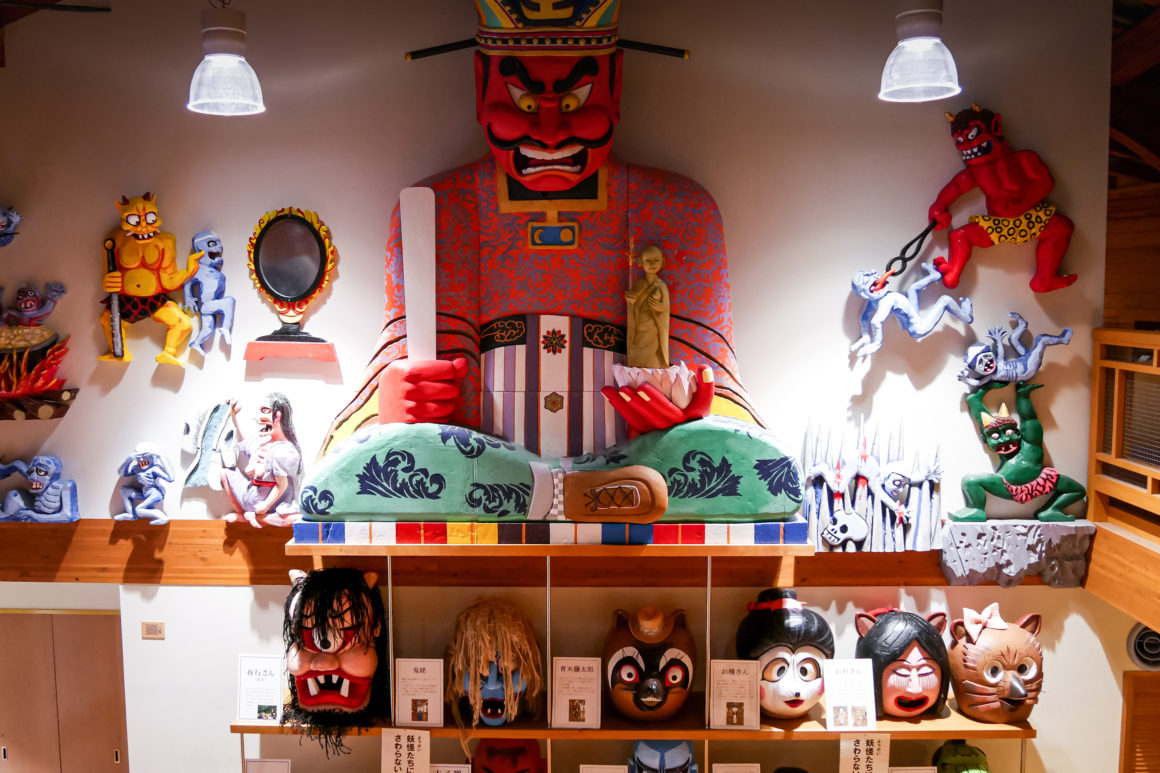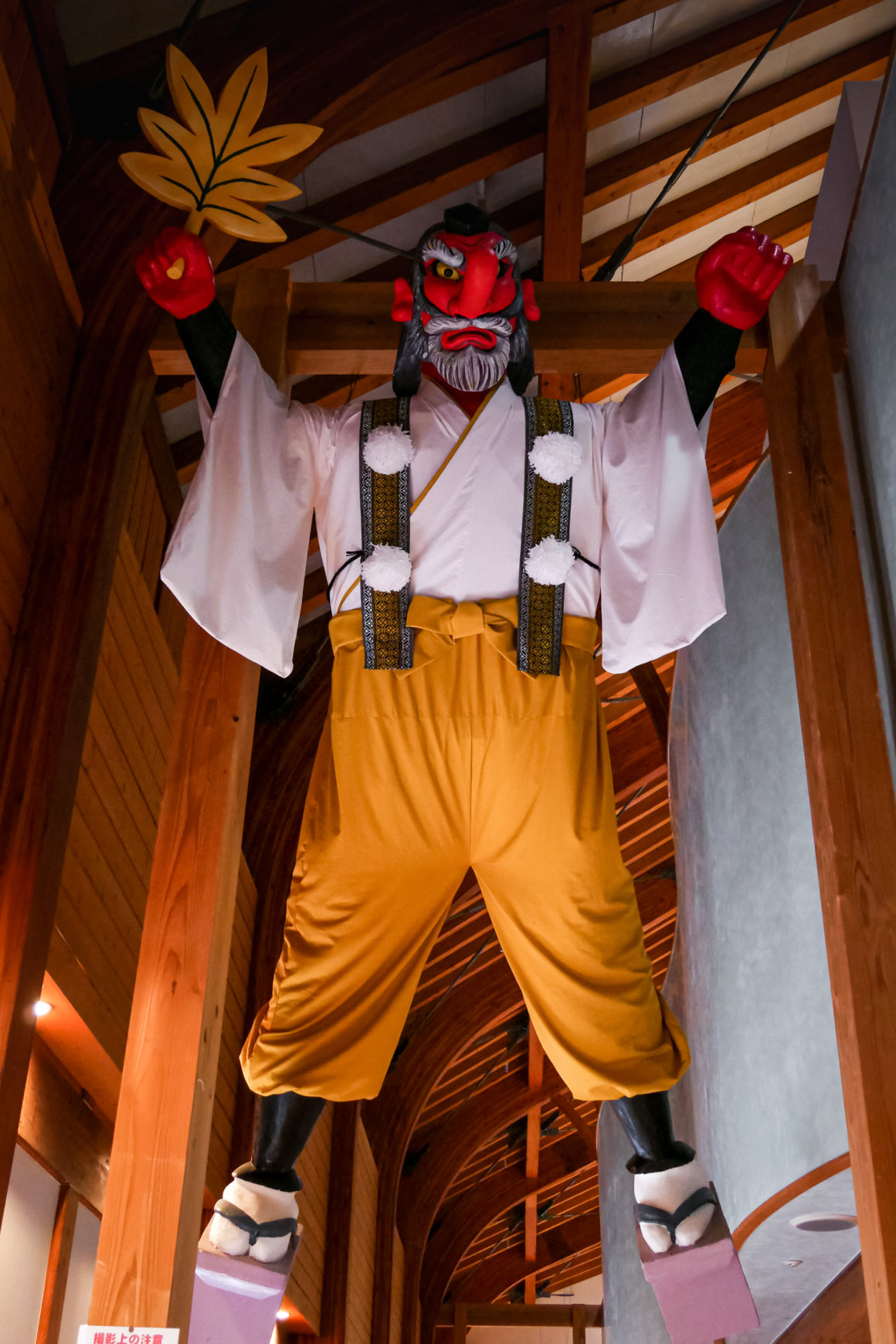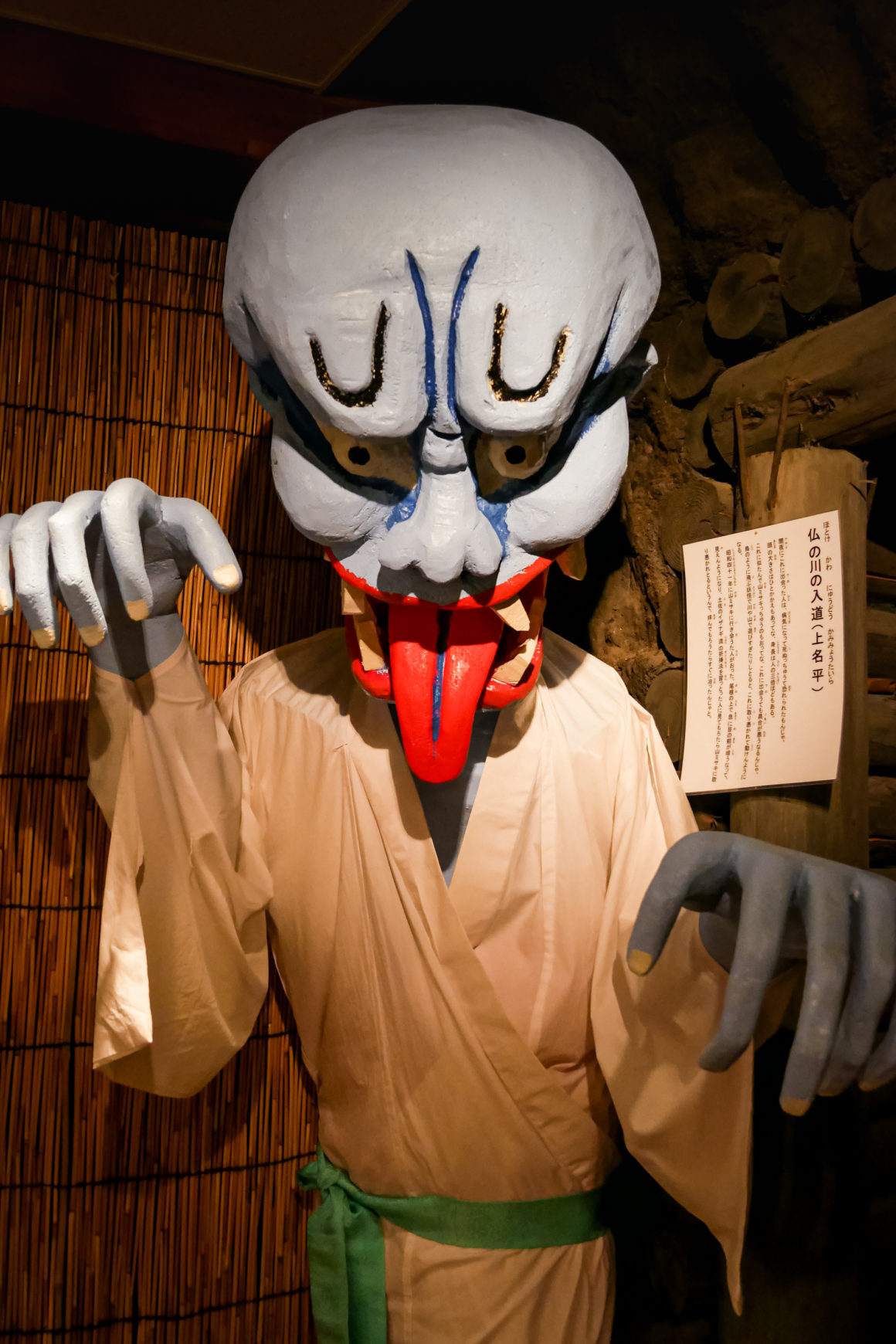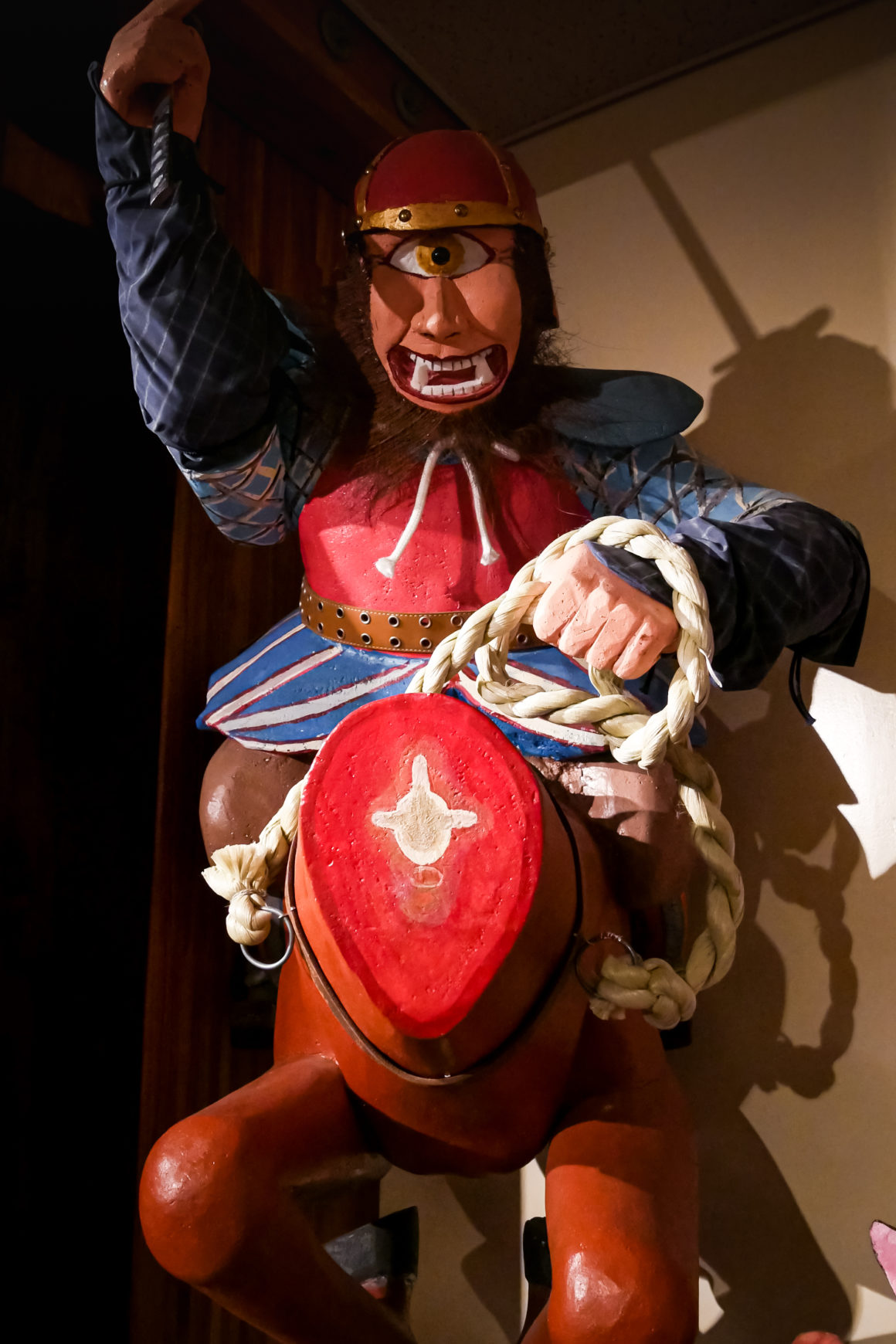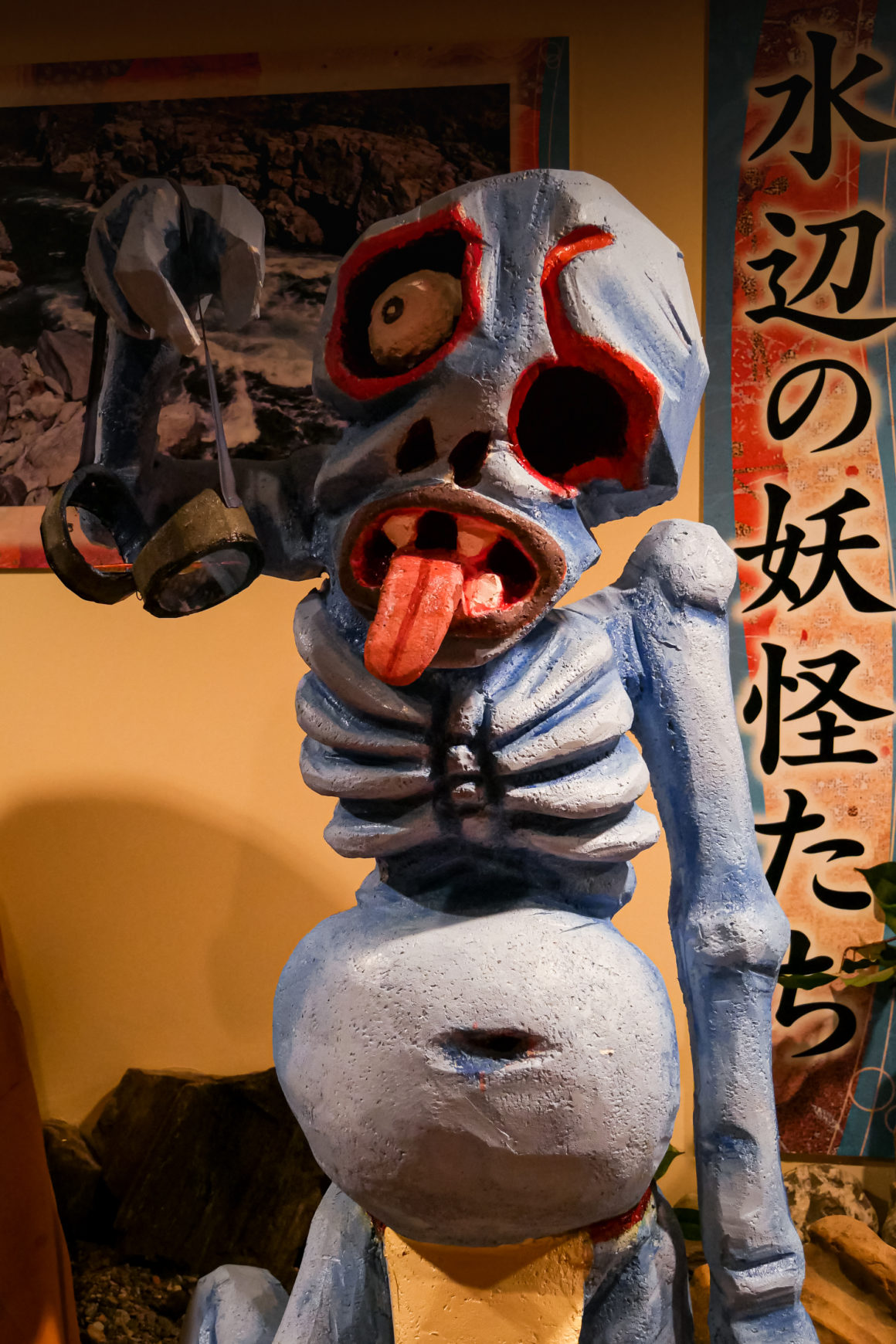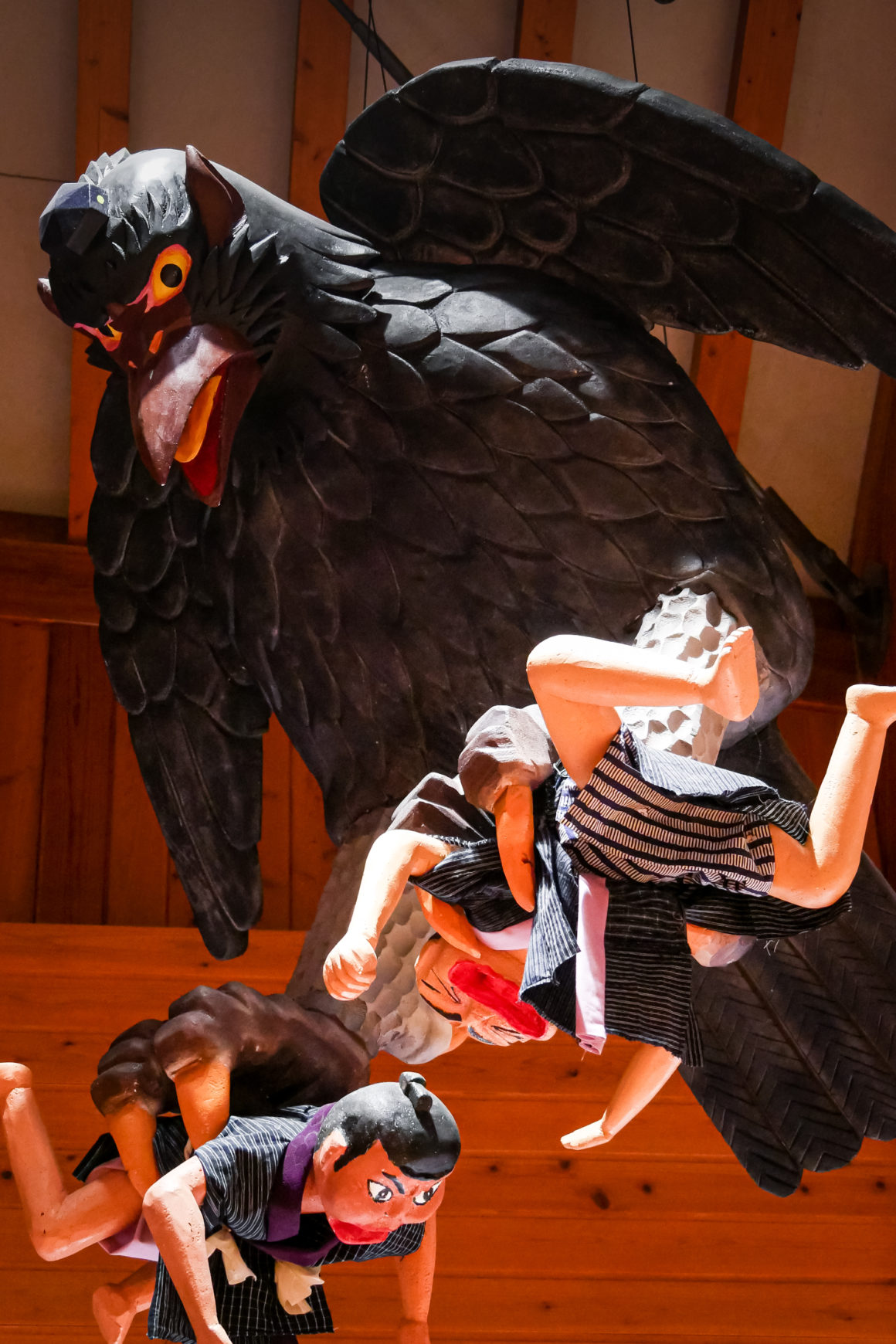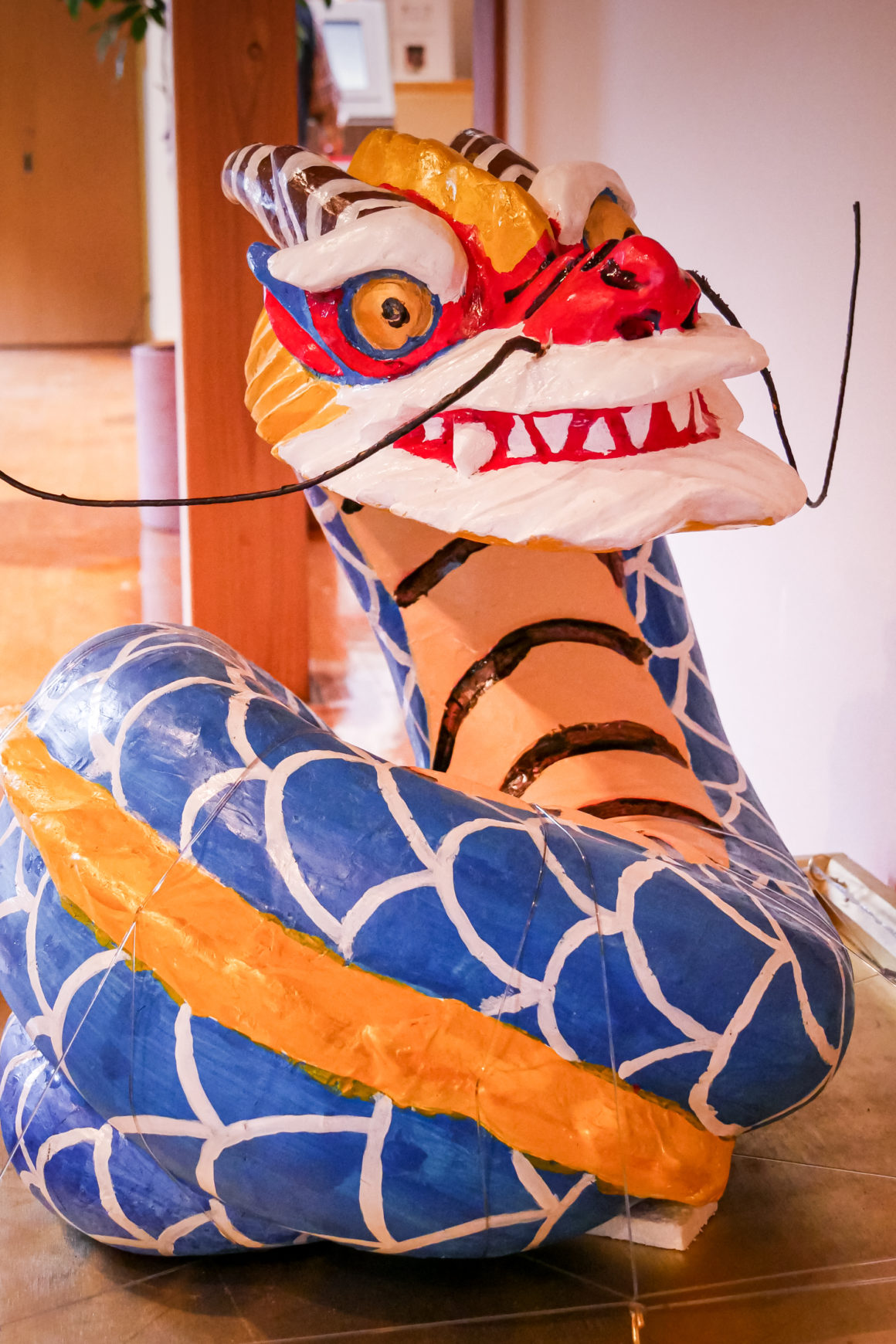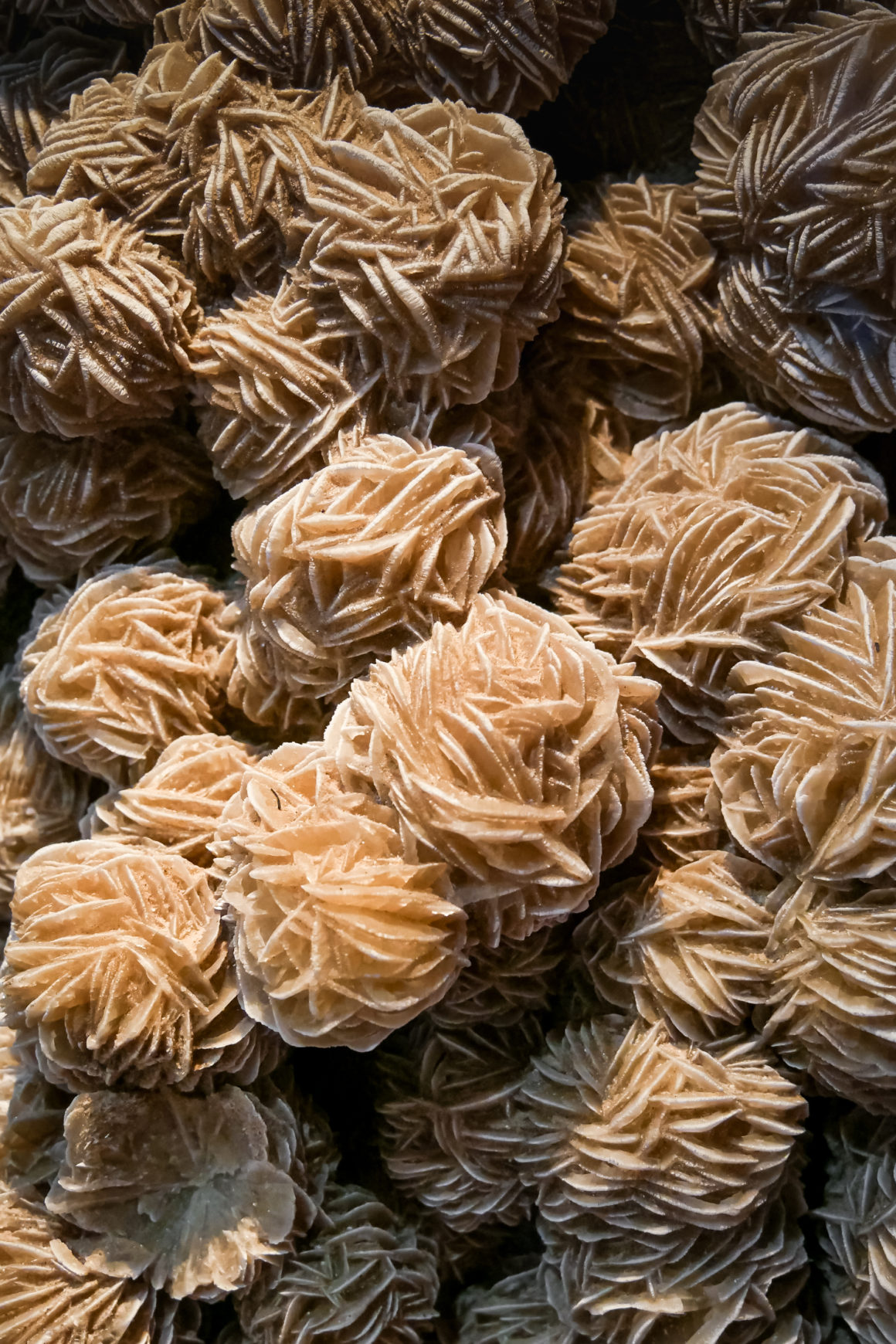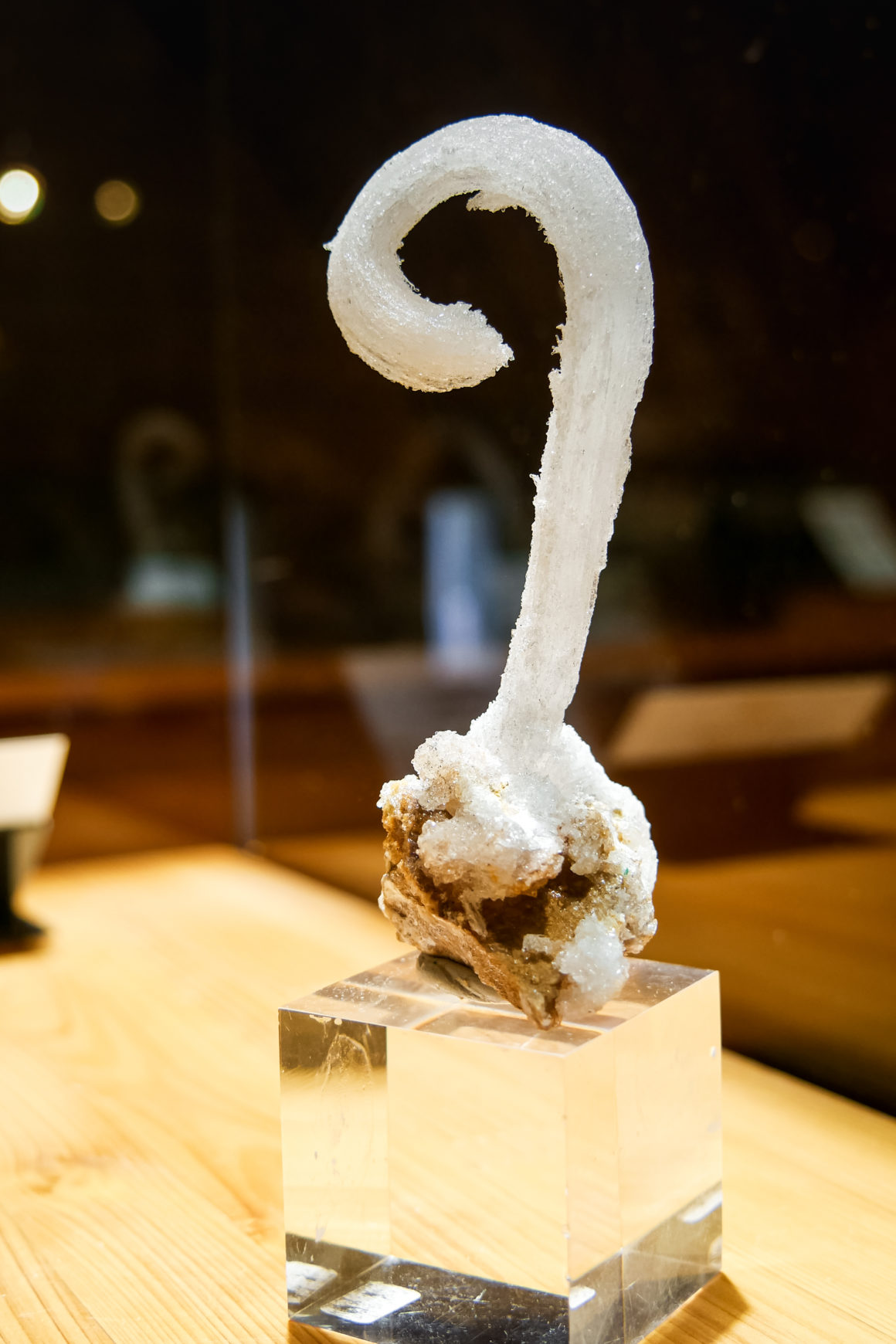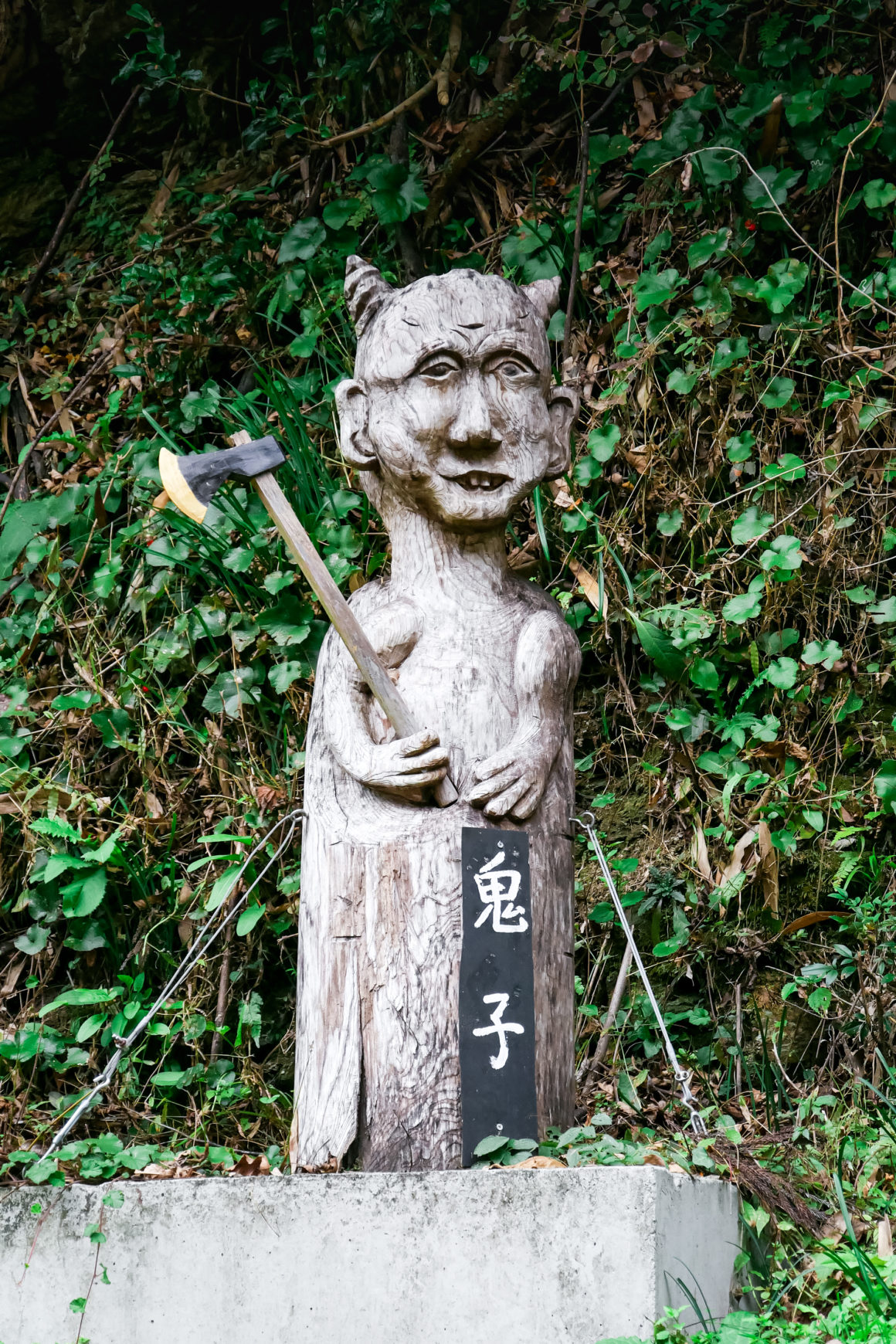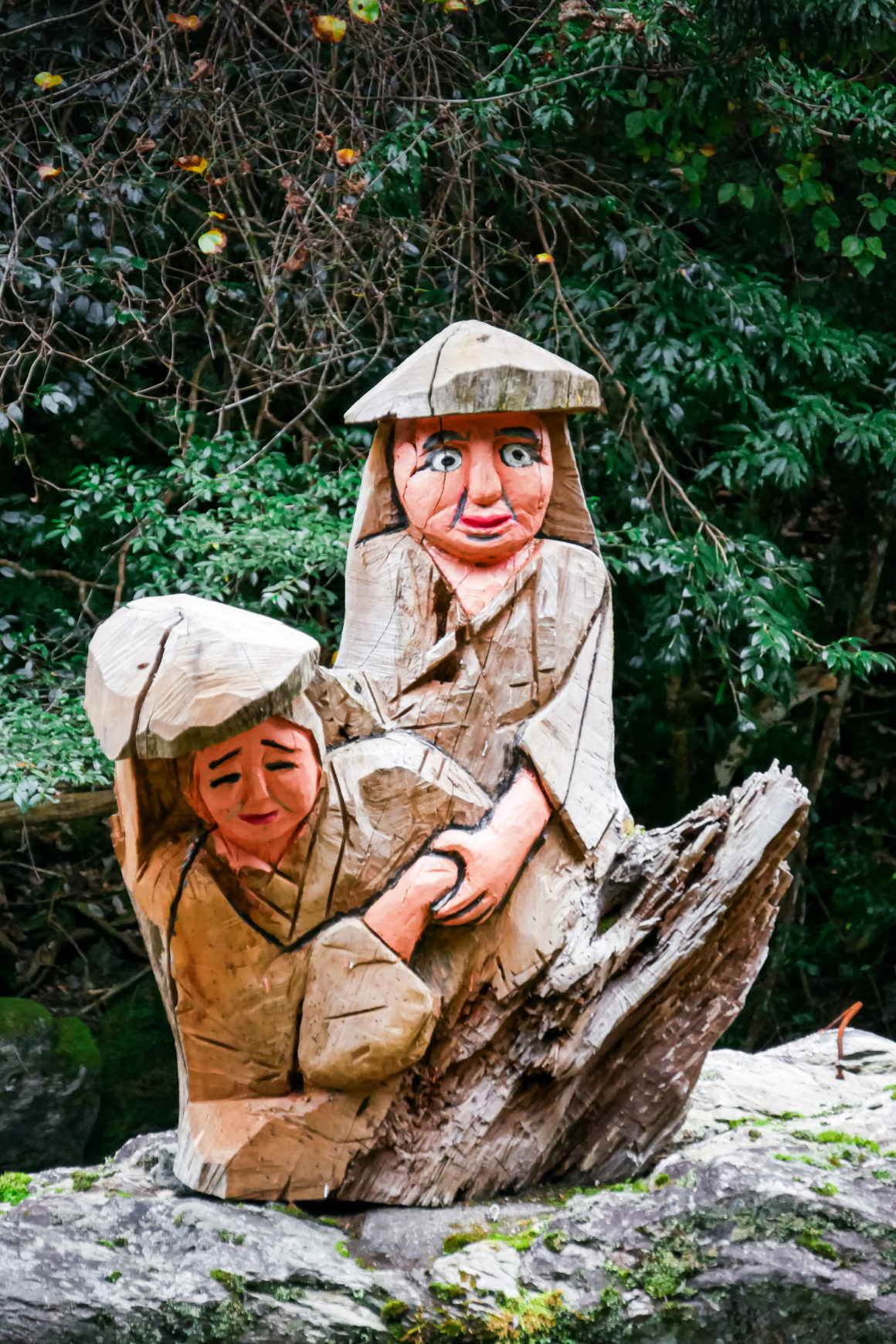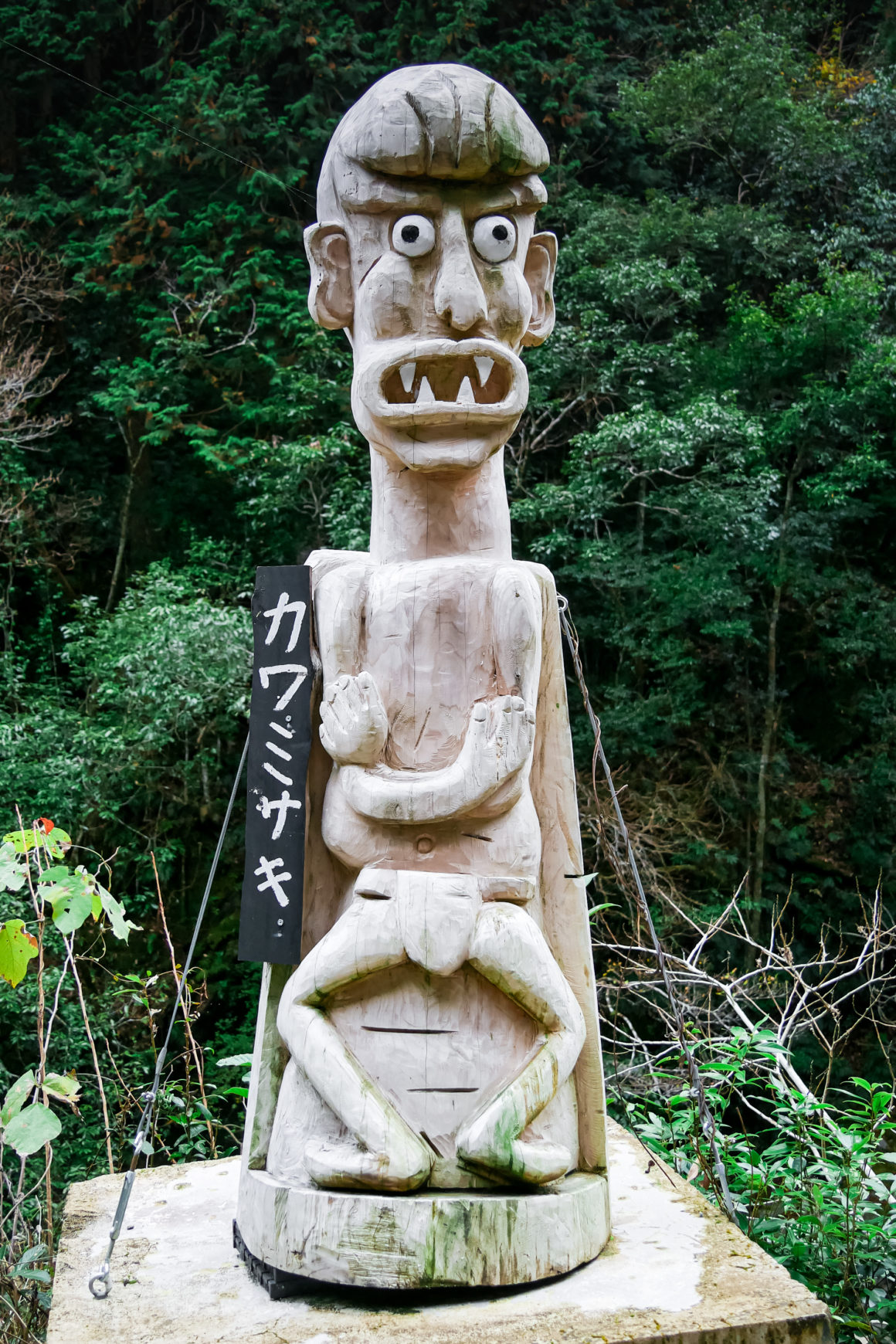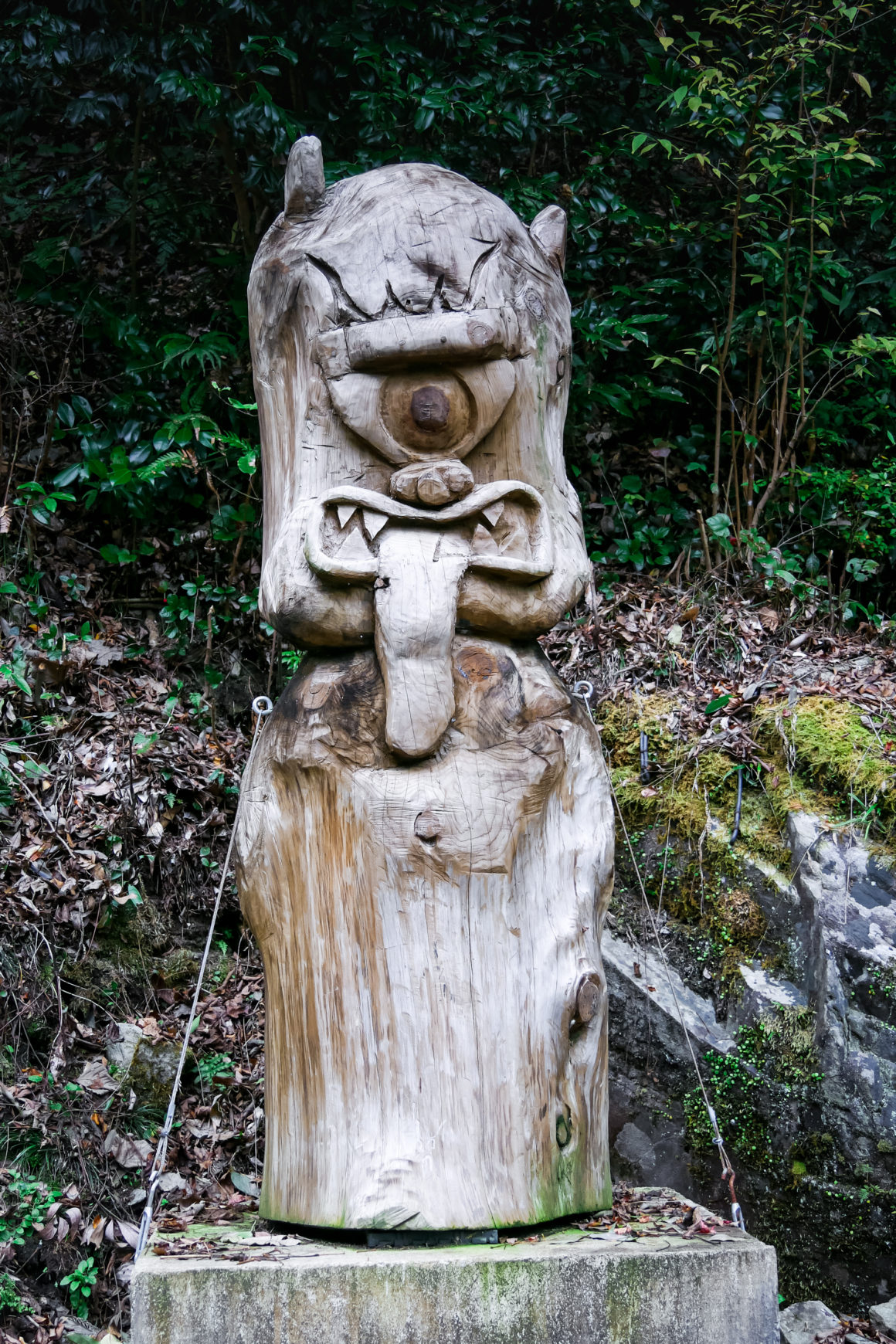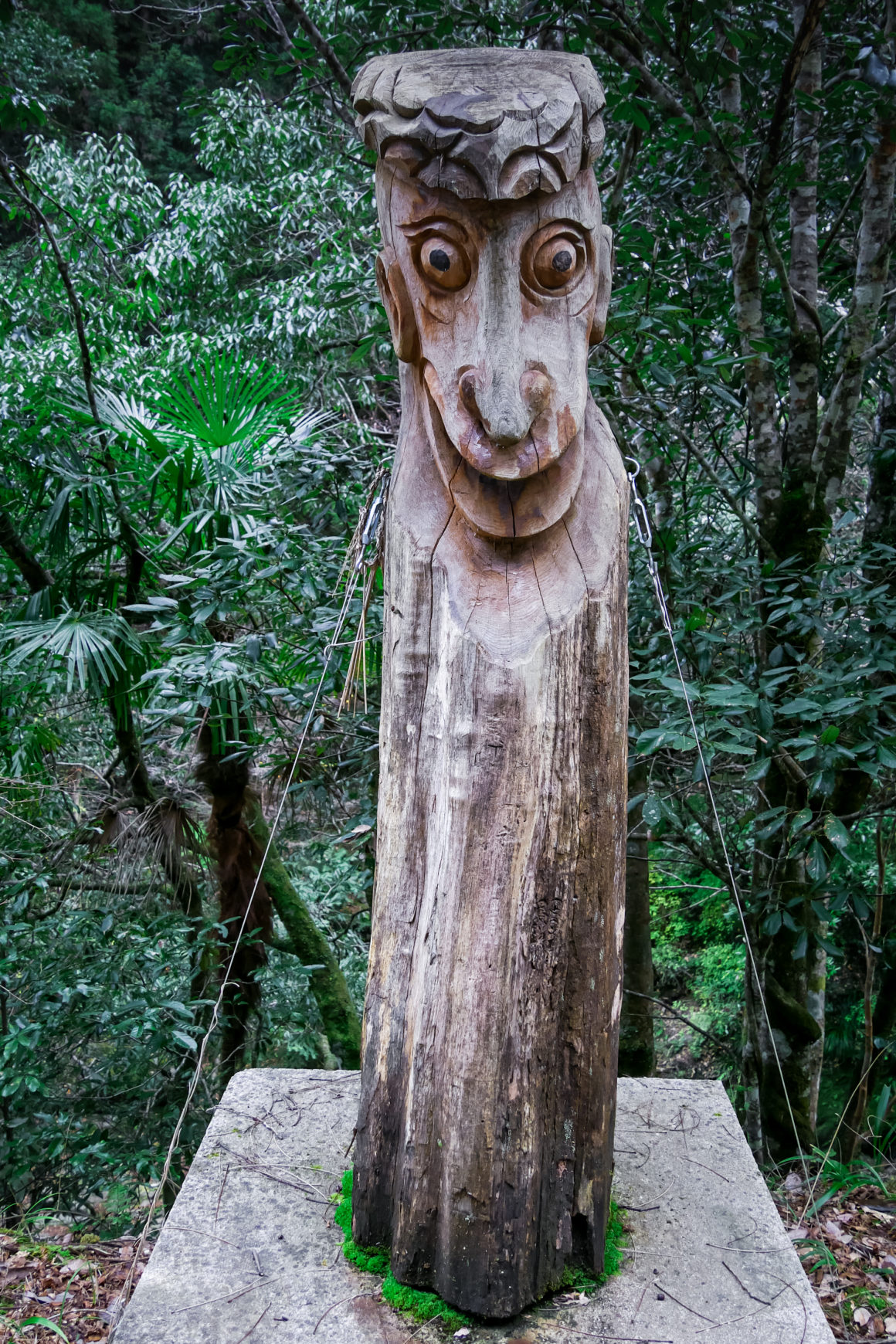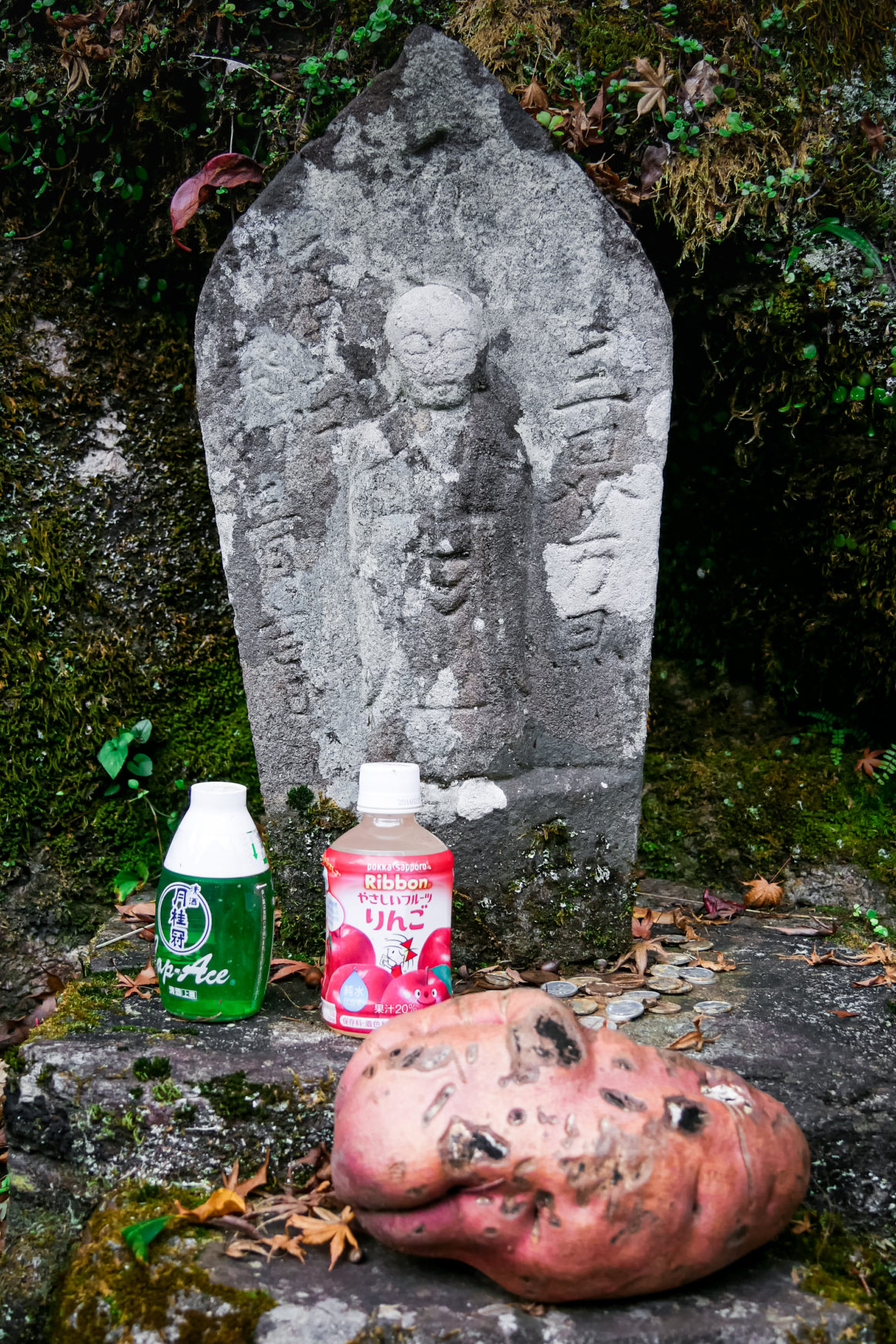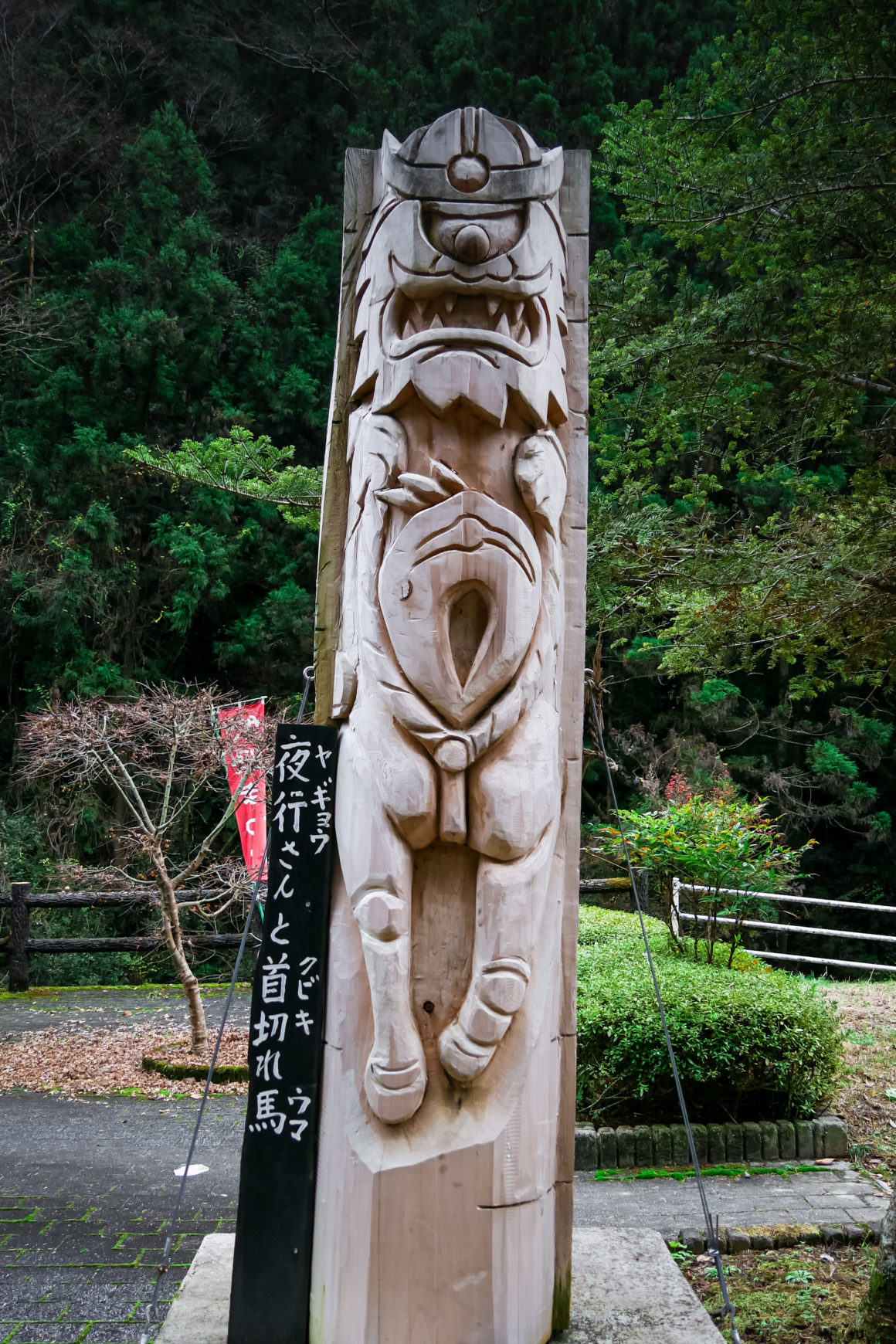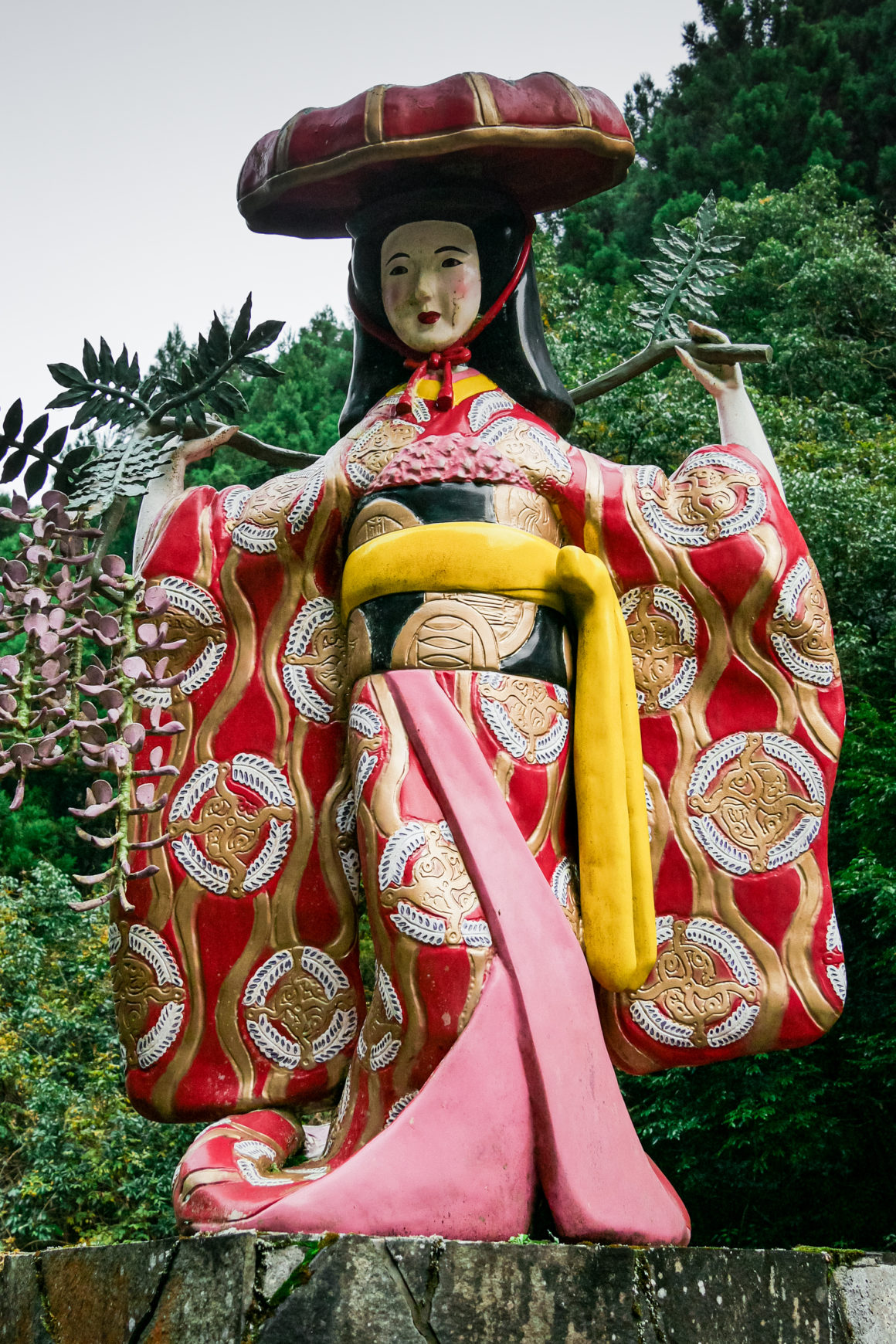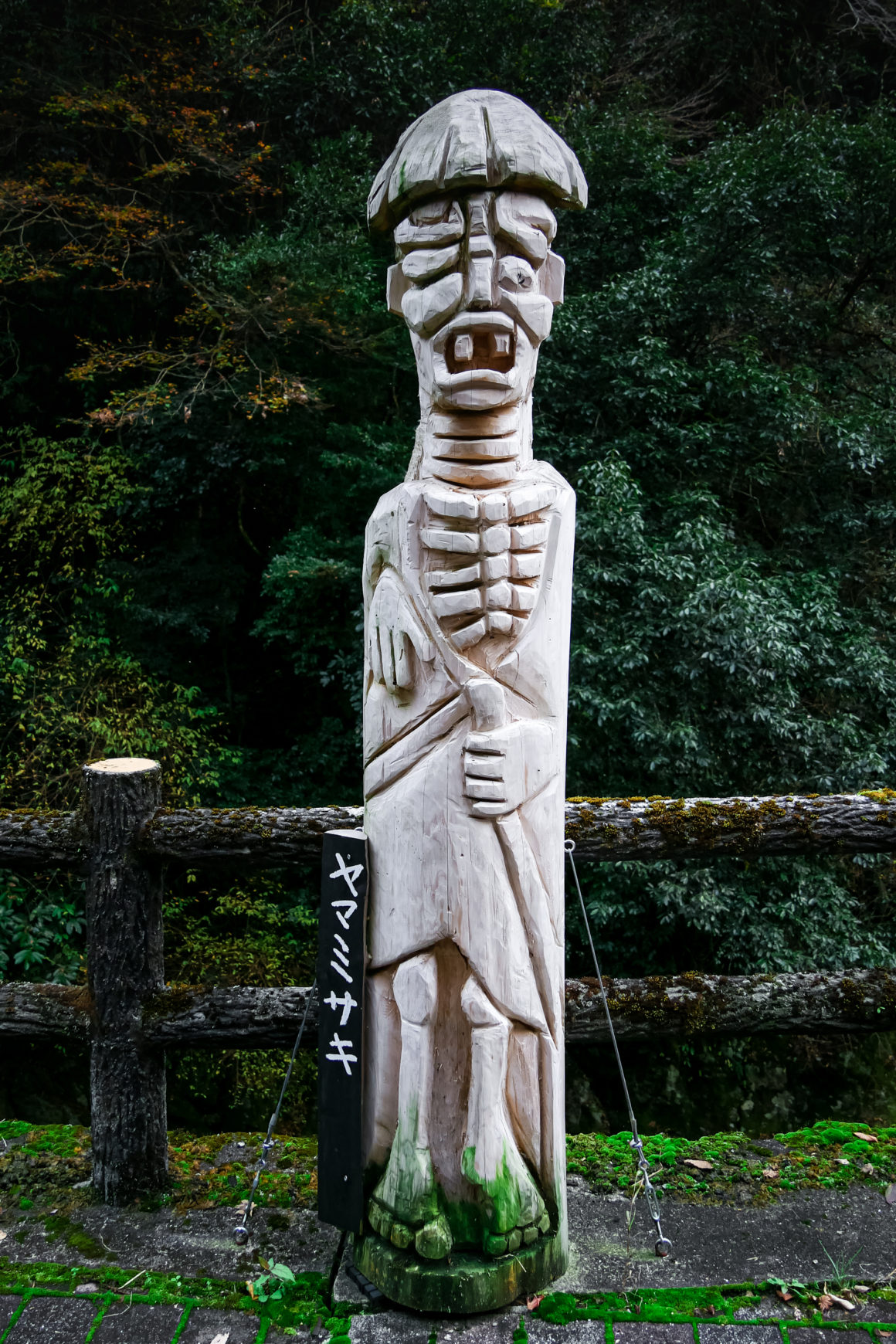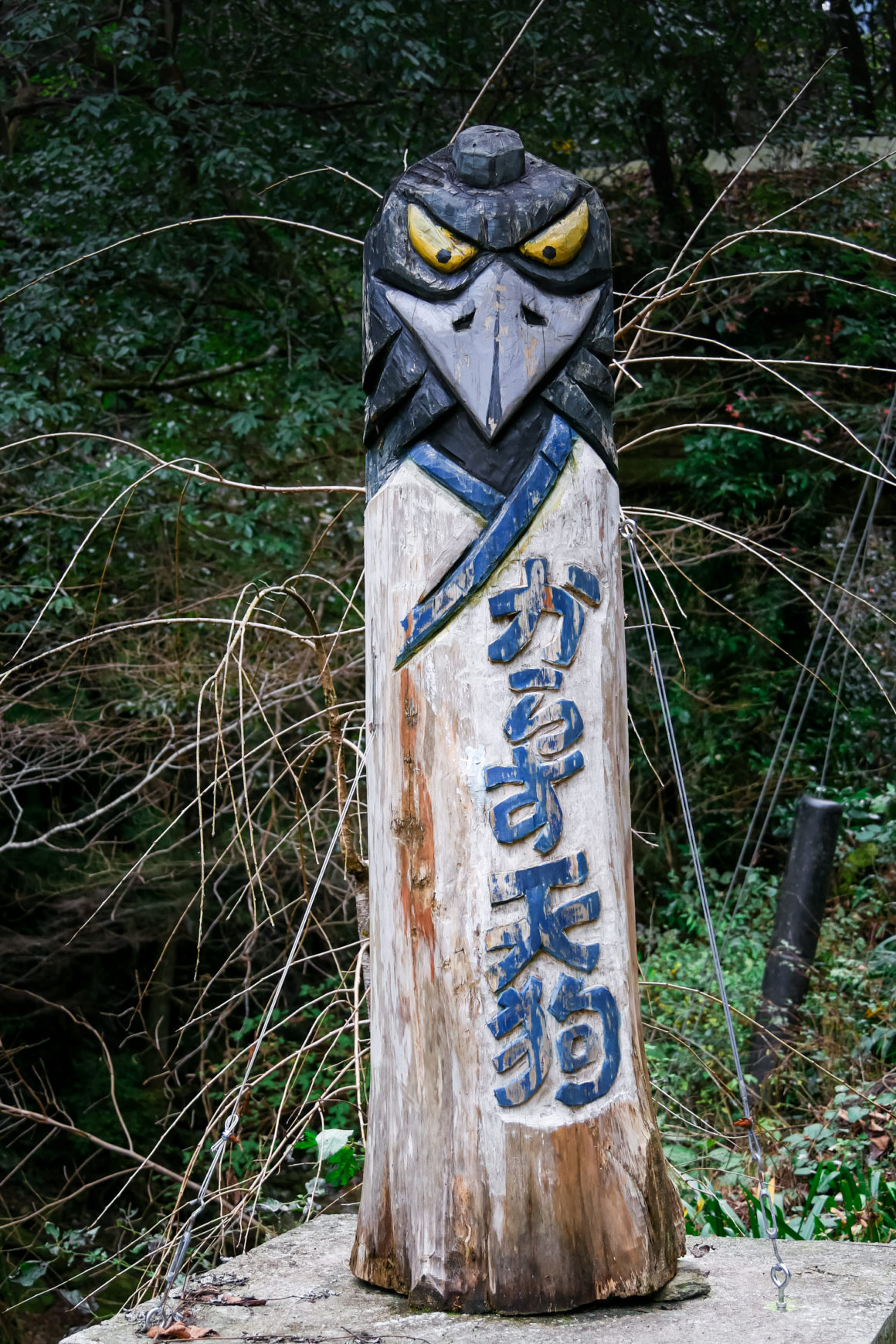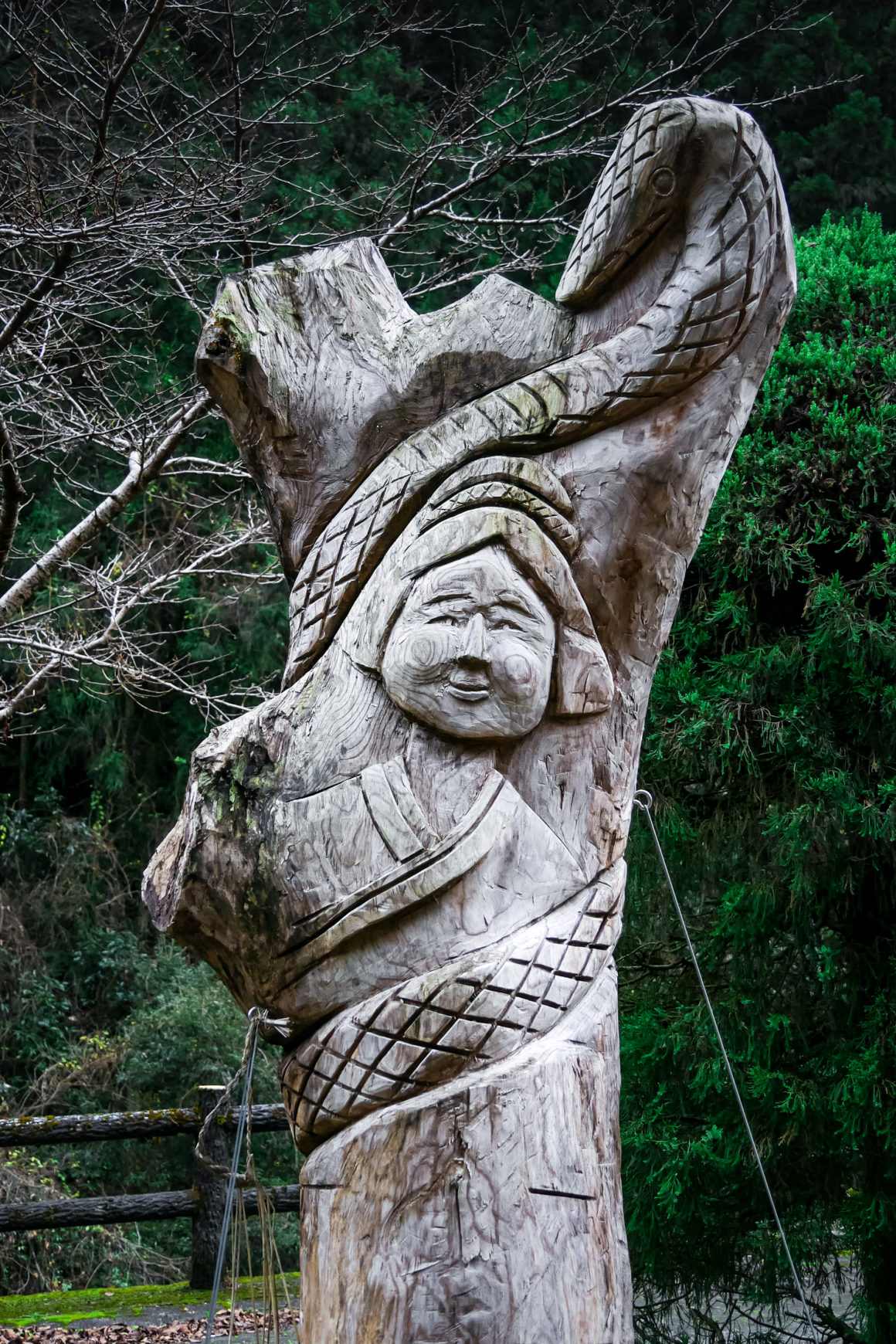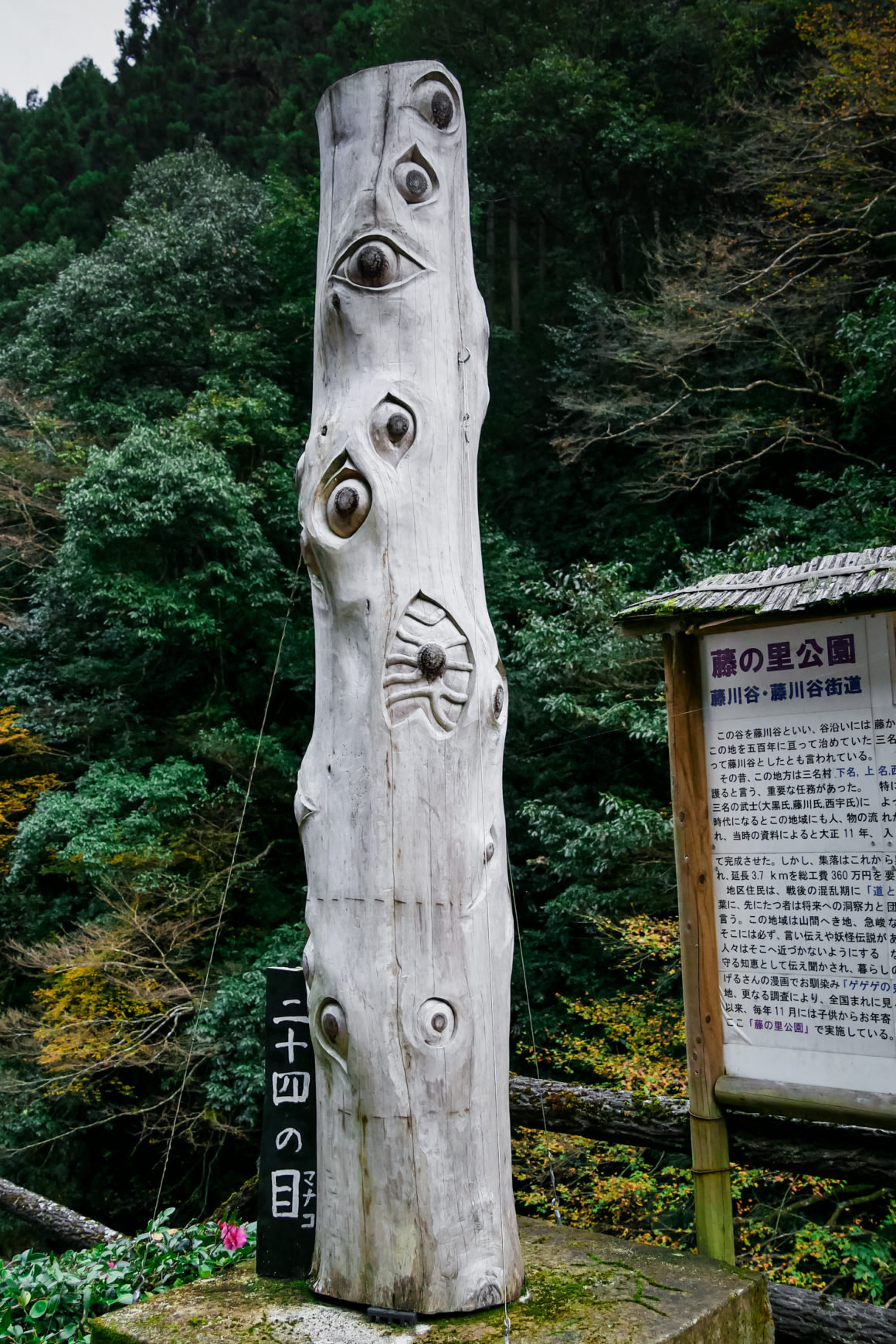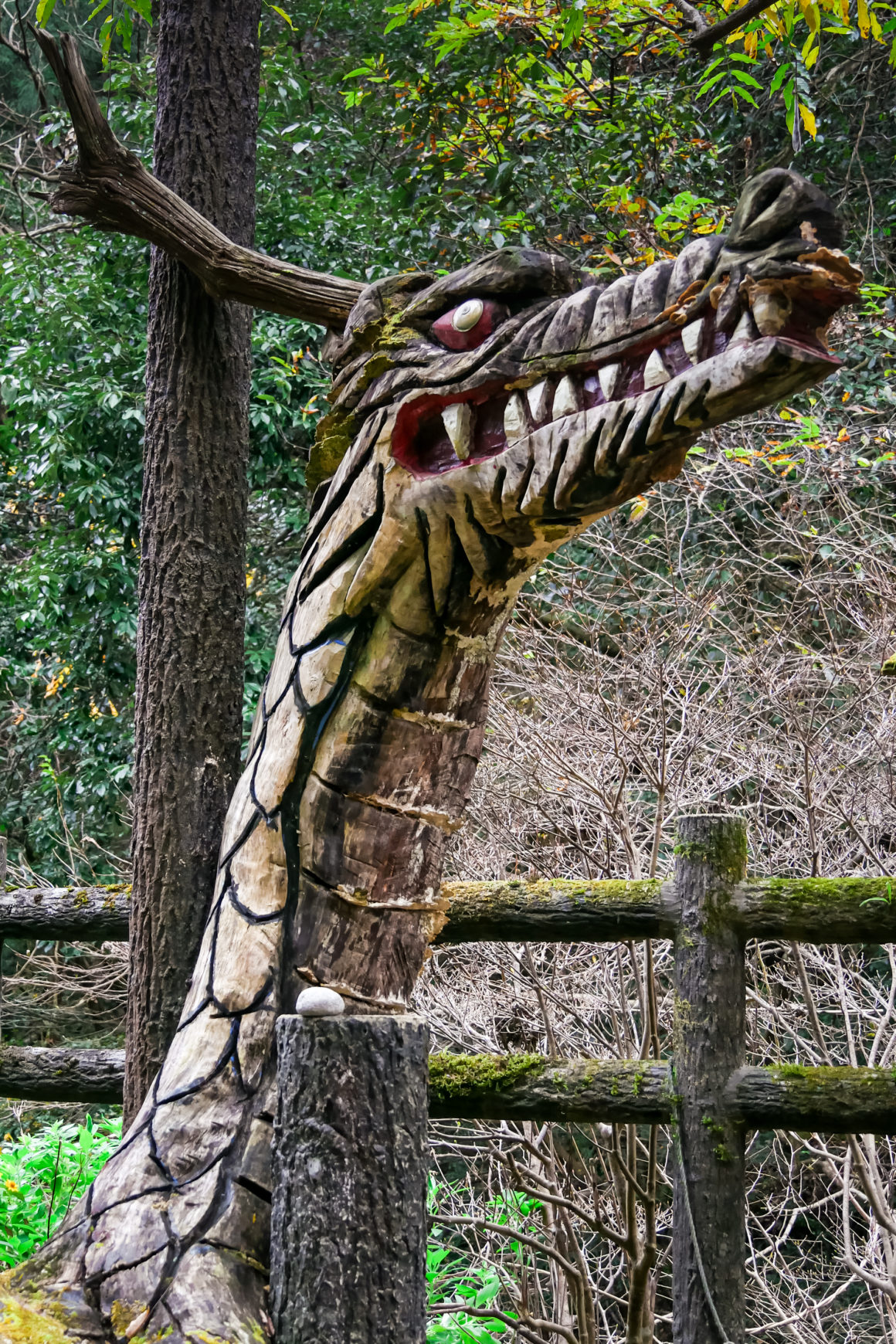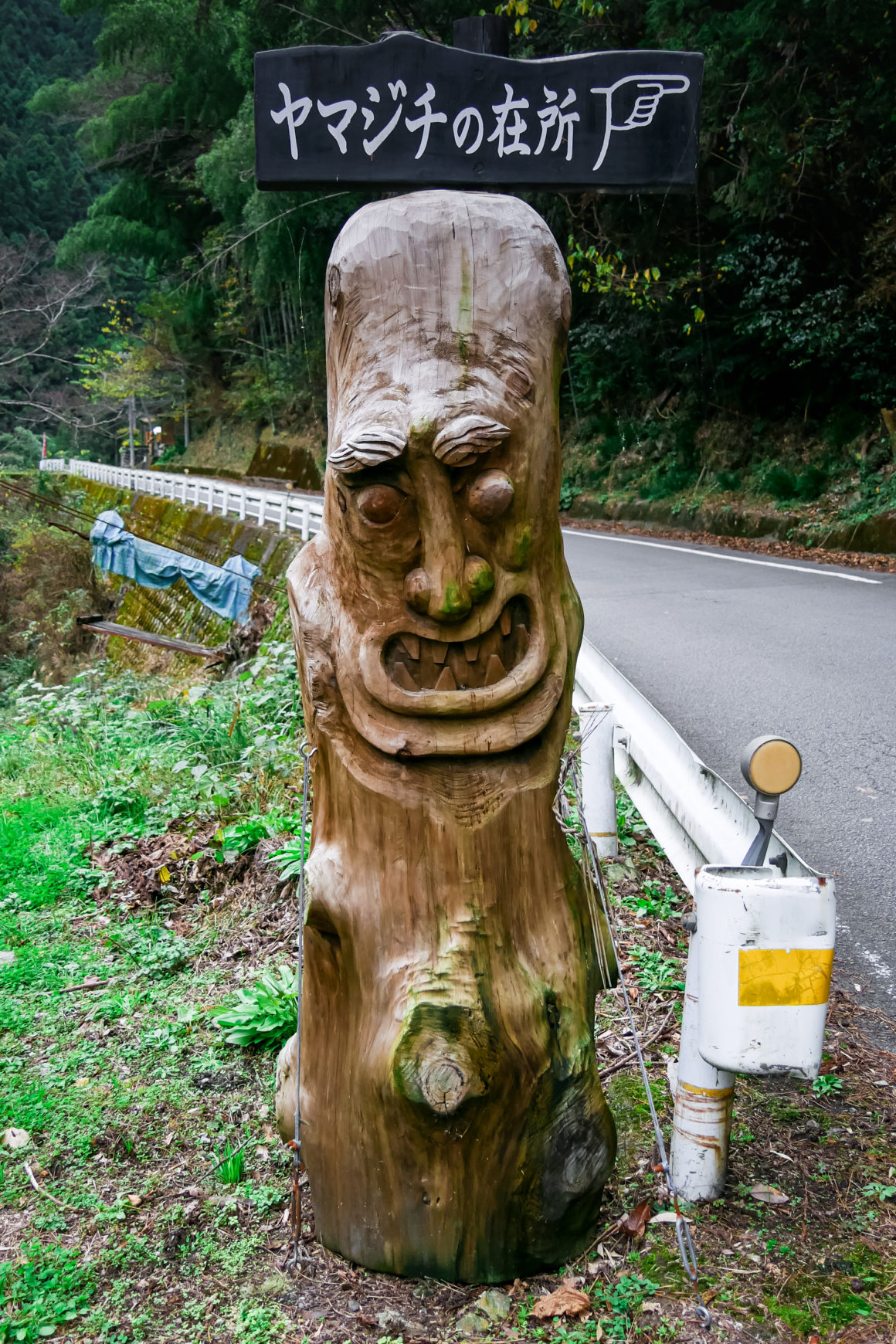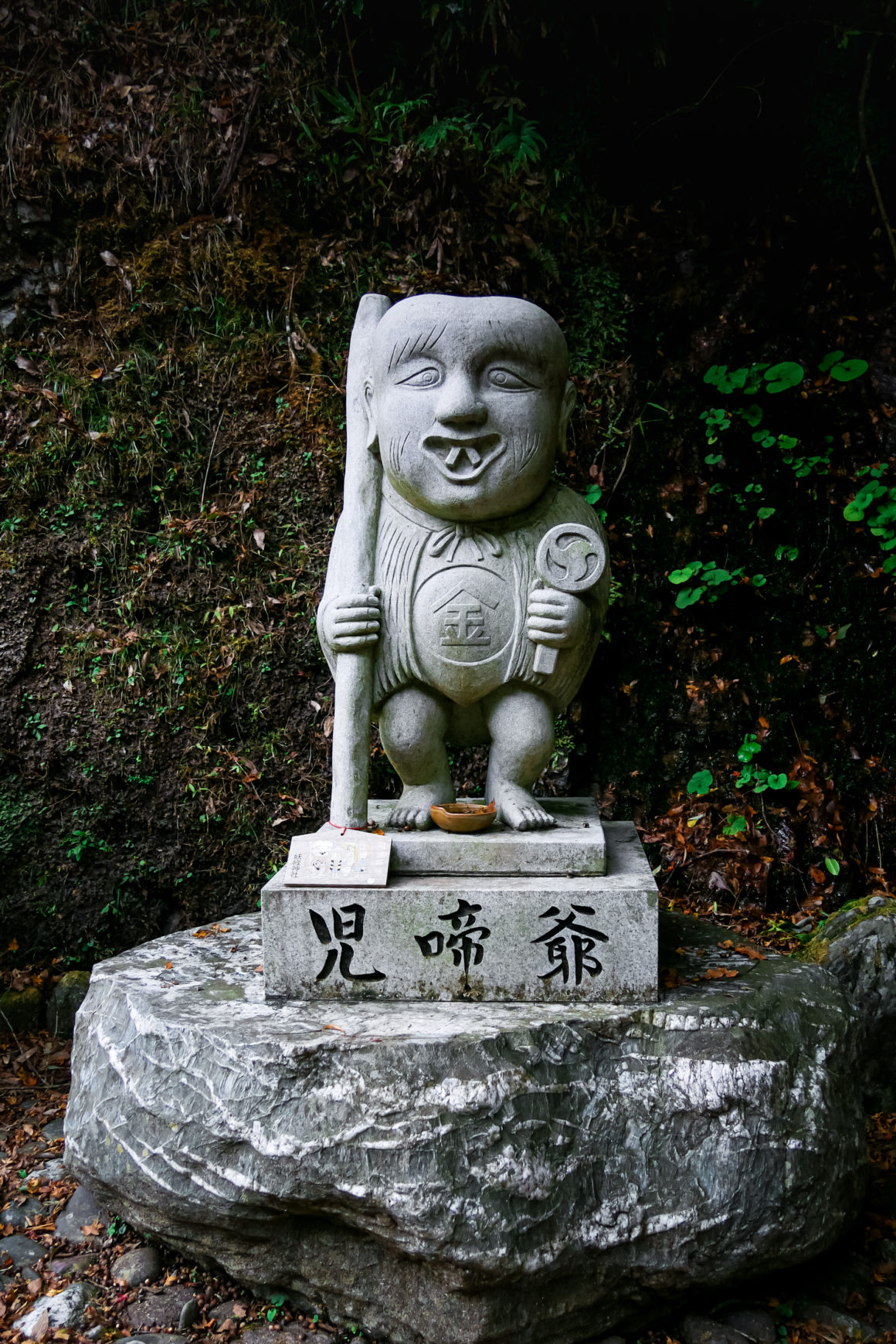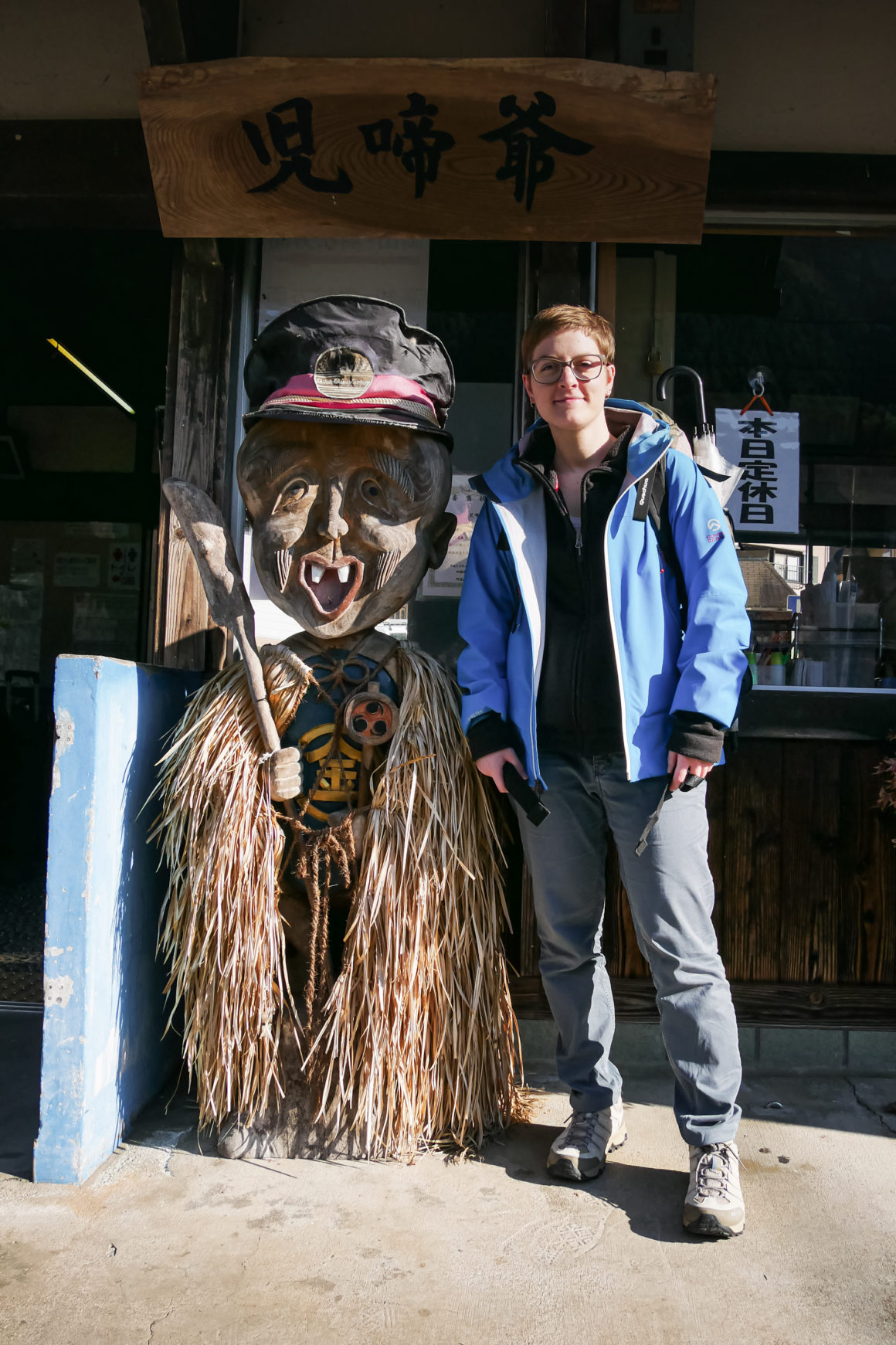DISPATCH
I go back to Oboke station to telephone to the hostel where I am staying so that the owner can pick me up by car, as agreed. But it is a waste of time! The lady I have on the phone does not understand me and neither do I! So I call Michiko who calls the hostel (Thank you Michiko !!). Fifteen minutes later, a smiling little gentleman arrives by car, which brings me to the inn, on a small path on the mountainside. Arrival at the hostel, putting on my slippers, then discovering my room. As in Minami, tatami mats on the floor, sliding doors, but in addition the room is gigantic and there are decorations everywhere: carved walls, drawings on the doors, decorative objects, a superb drawn pot and… a Japanese bow! A gigantic Japanese bow, very simple but magnificent with a quiver where I discover arrows. The whole was used. I would like to know from when it dates.
The inn is actually a brand new ryokan (traditional Japanese inn). It feels like a house of yesteryear. But with paper doors everywhere, zero sound insulation! Believing that I am dealing with a closet, I pull one of the doors to find myself in the next room! Fortunately, I am the only customer! When there are people, the peace does not exist. The gentleman and the lady running the inn then invite me to the meal. I find myself in a room next to their kitchen, typically from before with tatami mats on the floor, coffee table and an alcove in the center used to make a fire to heat the tea kettle hanging from the ceiling! All that’s missing is the kimonos, removing the TV that sits enthroned in a corner, lighting the fire and you will feel like you have returned to the past.
A dozen different dishes await me on the table: a cooked fish, meat, a bowl of rice, an orange, miso soup, salad, cucumbers and other dishes of which I do not know the ingredients. I tell myself that I will never be able to swallow everything but it turns out that yes. I eat everything except a kind of little pink cream, much too spicy for me, which turns out to be, after asking, the salad dressing. It is made from salted plums or “umeboshi” that is macerated in salt.
After the meal, the gentleman and the lady ask me what I plan to do the next day. I tell them that I want to go see the Kazurabashi bridge (one of the last vane bridges in the region). It turns out that it is a good twenty kilometers on foot. It is far! So I will have to make the trip by bus. They then start to plan the whole trip, show me the bus timetables, surrounding the departure time (8:56 a.m. to Oboke to arrive at 9:25 a.m.) and the return (3:05 p.m. to be back at 3:32 p.m. in Oboke) and tell me to call them once I am back to Oboke station to have them pick me up by car to take me back to the hostel. It is very nice of them but I had planned to quietly roam the mountains. I will see tomorrow. I will probably do part of the trip on foot (just to see other places that are a little less touristy) and the other part by bus.
Then comes bath time. The gentleman leads me to a small building outside (my god, it is cold!), where there is a traditional Japanese bath! A mini onsen for myself! He shows me the inside: the place to shower and a sort of small well where you can dip to relax. He lights the fire under the well and tells me to come back in about twenty minutes, while the water heats up. The small “well” is actually called a “goemonburo” (it is a round bathtub with the lower part in cast iron and the hearth of the fire is just below). Back to my room, where it is in a freezing cold that I unpack my things. I then go to the bath. Quick wash because it is not hot despite the volutes of heat coming out of the well. Clean, here I am ready to immerse myself in hot water, to experience my first Japanese bath, but impossible to get into the water! It is way too hot this time. I feel like I am going to scald myself. I cannot even put my foot down! No matter how much cold I add it, it stays way too hot. How are the Japanese doing? I tell myself that if I get out of the cabin right away, the owners will think that I did not like it. So I stay there shivering for a good fifteen minutes dipping the tips of my toes. Even after fifteen minutes, the water is still too hot for me. With a small feeling of failure and frustration, I put on my clothes and get out of the cabin. The gentleman from the hostel was outside all the time to make sure everything was fine and to take care of the fire! Fortunately, I did not come out right away. He shows me the stars. It is the first time I see them since I arrived in Japan. And I going back to my room.
The next day, I wake up early for a traditional Japanese breakfast, which looks like a normal meal: tea, rice, miso soup, fish, dried seaweed, other dishes unknown to the me, tangerine and yogurt. Early in the morning, I have a little trouble swallowing everything. Then I take the bus which takes me to the Kazurabashi bridge. The bridge built in woven lianas, 45 meters long, is suspended 14 meters above the water. The origin of its construction is uncertain. A story goes that it was the members of the Heike clan who built bridges in lianas so that they could cut them in the event of an enemy pursuit. The other says that it was Kobo Daishi, the Buddhist who made the pilgrimage to the 88 temples of Shikoku, who built the bridge to help the villagers get around more easily. Arriving at the bus stop, I expect to have to walk a bit in the mountainside forest to reach the bridge but no, it is right by the road. The place is completely furnished: parking, souvenir shops, restaurants … It loses a lot of its charm. Especially since it is gray weather. Disappointed, I still decide to buy a ticket to cross the bridge. Fortunately the crossing cheers me up. The bridge is very beautiful and the crossing is very impressive: the structure seems fragile, the planks of the bridge are spaced (you can see the river below) and the bridge swings under the movements of tourists. Better not to be dizzy! I stay on it for a while, trying to imagine what the place once looked like. I try to visualize the locals dressed in kimono and geta (traditional shoes) crossing the bridge every day. It must not have been easy.
Then I go take a look at the Biwa-no-taki waterfall, a 50m high waterfall, which is nothing special. Everyone gets their picture taken in front of it. I wander around a bit. I am cold, the weather is bad, I am disappointed and I have a kind of feeling of chagrin stuck in my brain: where is Japan of Hayao Miyazaki’s movies? Where are the youkai and other folk monsters? The only thing that reminds me a little of ancestral Japan is the little food shacks that cook yakitori (chicken skewer), yakisakana (fish skewer), dango (mochi-based dumplings) and even skewers of potatoes.
Next step, an old samurai house (belonging to the Kita family) further down the valley and on the mountainside. A bus travels from Kazurabashi Bridge to a bus stop in another village down the gorge. From the bus stop it takes forty-five minutes to get to the house. The next bus only leaves in an hour. After talking with another driver who tells me that it takes about an hour and a half on foot to reach the village, I start walking briskly. Finally a bit of hiking. But I walk on the road. A small mountain road, but with cars passing every five minutes. Not great. At a bend, I stealthily see a dozen monkeys crossing the road and moving through the trees! These are the famous Japanese macaques with red faces. Since almost fifteen minutes ago, I had heard strange cries that I thought were a bird but no they were monkeys. Apparently the forest seems to be home to quite a few.
I continue my journey which turns out to be much longer than expected! There were in fact a good fifteen kilometers to go! After 3h30 of walking I finally arrive at the small village around 2pm. Having still not eaten, I happily come across a tiny shop serving as a local konbini. Sausage-mayonnaise sandwich, cakes and tangerines. Happiness. The last bus to take me back to Oboke station is at 4:40 p.m. Do not miss it otherwise I will find myself stuck in the middle of nowhere. I start the climb to reach the old samurai house, 4.5 km above. An hour later, I finally arrive at my destination. It is still grey weather, I am cold and tired. No one in sight, not a single noise, the place is really austere and sad. I am greeted by a little grandma, a little surprised to see me here. The house is very beautiful (but it is freezing cold). The roof is thatched with a structure made of bamboo. Tatamis, shôji (sliding doors), fireplace in the main room, carved wooden beams, samurai armor, old tools and pottery, the visit is not very long but very interesting! Coming out of the house, I am greeted by a few rays of sun! It is crazy how the vision of the sun can cheer you up. Being a little pressed for time, I decided to run downhill. I arrive at the bus stop fifteen minutes early (phew) but with my thighs in pain.
Return to the hostel where a Japanese family is staying overnight. They are housed in the room next to me. Goodbye privacy. Fortunately they are not noisy at all. Evening meal (vegetables in tempura (fried donuts), miso soup, fish, meat …). Second attempt in the goemonburo. This time the water is less hot and I can get into the bath! I bask surrounded by yuzu (hybrid of mandarin and lemon). Completely warmed up and very tired, I go back to my room.
Today, Sunday November 29, I decide to go visit another gorge. A small statue of a Manneken Pis overlooking one of the Iya Valley gorges with an impressive viewpoint is apparently worth a visit. I take the bus which brings me a little closer and I finish the journey on foot on a small road. Following my run down yesterday, my legs are sore. The weather is gray again. There are small shrines everywhere. As well as gigantic spiders. Apparently there are everywhere in Japan, since wherever I go I always see the same species. They are impressive.
An hour later, I arrive at a very famous onsen hotel perched in a bend. Four young Japanese (three girls and a boy), seeing me arrive, rush towards me. They are studying tourism and want to ask me questions about what I come to do in the valley of Iya, why I came, what I saw … As usual, they are surprised by the fact that I am alone. The Manneken Pis statue is five minutes from the hotel. According to local folklore, the statue is a testament to the bravery of passing travelers who climbed the mountain to pee at the top, overlooking the gorge. Disappointment again, it is right by the road. Definitely nothing wild in this valley of the Iya. I get off at Oboke station by bus where I head for the Lapis Oboke. Lunch break then I visit the museum. The part on youkai is very nice with some explanations in English. The youkai of the region are exposed colorfully in different positions. Some of the representations are quite frightening. On the second floor is the part devoted to geology. An impressive number of stones are on display, each one more beautiful than the other (quartz, opal, selenite, etc. and even a meteorite). The whole museum is not very large but extremely interesting.
I come out of the museum to see a last small gorge housing a statue of one of the local youkai: Konakijiji. Konakijiji takes the form of an old man or a baby and lures inattentive travelers so as to get on their backs. It then turns into a very heavy stone which crushes the traveler. The place is even colder and austere than the other gorges I visited. Surprise, along the climb on the small road, there are statues of the local youkai. They are all more frightening than the others. I feel myself becoming superstitious. I finally arrive at the Konakijiji statue which contrasts with the others. Despite his legend, the youkai looks quite nice.
I go back to the hostel happy with my afternoon spent in folk culture. This time I take my bath before the meal. I put on a gorgeous yukata (light kimono). This one being too big for me (in length), the lady holding the inn as well as her mom (aged at least 80 years I think), spend some time adjusting it. My first yukata !! I have a quiet dinner and I go back to my room.
These few days in the Iya valley were nice but I am a little disappointed. The place is too organised compared to what I imagined and the hiking trails are nonexistent. I have also seen very few trees with red foliage whose beauty all travel guides and brochures praise. In my opinion the period is already passed although it is still the fall season. Tomorrow departure for Kôchi, again on the coast.

